Grand Seiko
Revolution Watch Bar to Retail Curated Grand Seiko Selection
Grand Seiko
Revolution Watch Bar to Retail Curated Grand Seiko Selection
The second is my personal favourite, the SBGH245G also inspired by the 44GS in design but in a case made from Grand Seiko’s proprietary high impact titanium that is more scratch resistant and beautifully finished than any other titanium watch in its price category. It also features the famous automatic high-frequency movement Calibre 9S85, as well as, a gorgeous sunray dial that is somewhere between brown and burgundy, and reminds me of my favourite vintage wines.
At the same time we wanted to offer the SBGK007 at 39mm in diameter and 11.6mm in thickness with a new manual winding Calibre 9S63. We feel that this is the perfect expression of pure Zen elegance in a four hand watch (hour, minutes, small seconds, power reserve). You really need to put this timepiece on your wrist to marvel at how transcendentally elegantly it is executed.
Finally, we are proud to offer the SBGA211G “Snowflake”, the very first Grand Seiko model I ever purchased and that inspired this article. Crafted in high impact titanium with a design that stretches back to 2005 this watch features an utterly revolutionary movement that combines the best of mechanical and quartz technology as well as one of the most evocative and distinctive dials around this watch is a to me a true modern icon. But before looking closer at these watches sit back, relax and let me tell you the story of Grand Seiko and why to me it is one of the most significant brands in modern horology.
The Underdogs
As a story of the underdog defeating the entrenched industry giant, it is not without precedent. The Ford GT 40s sweeping 24 Hours of Le Mans in first, second, and third place in 1966 certainly played a factor in Enzo Ferrari’s irate decision to boycott all motorsports a few years later. Another David versus Goliath story took place in 1976 at the “Judgement of Paris”.
There, for the first time in history, a panel of experts, including Aubert de Villaine, the legendary patron of Domaine de la Romanée-Conti, and Odette Khan, editor of La Revue du vin de France, selected a chardonnay produced by Chateau Montelena from Calistoga, California, as the world’s greatest white wine.

1973 bottle of Chateau Montelena from Calistoga, California (Image: nbcnews.com)
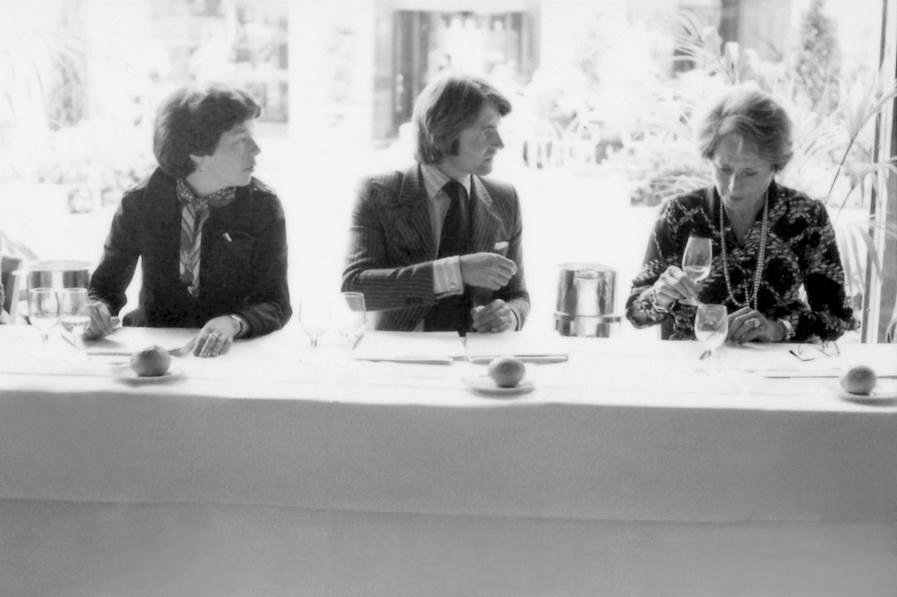
Patricia Gallagher (from left), who first proposed the tasting; wine merchant Steven Spurrier; and influential French wine editor Odette Kahn. After the results were announced, Kahn is said to have demanded her scorecard back. "She wanted to make sure that the world didn't know what her scores were," says George Taber, the only journalist present that day. (Image: npr.org)
But the ultimate story of competitive comeuppance occurred in Switzerland at the sleepy lakeside town of Neuchâtel. This was the battleground for the best Swiss watchmakers intent on establishing themselves as the kings of chronometry at the famous Neuchâtel Observatory trials. But in 1967, watches made by the Japanese company, Seiko produced in the Suwa and Daini Seikosha factories placed fourth, fifth, seventh, eighth and 12th in open competition against the best Swiss watchmakers. It was a shot across the bow of Swiss watchmaking that resounded through the entire nation.
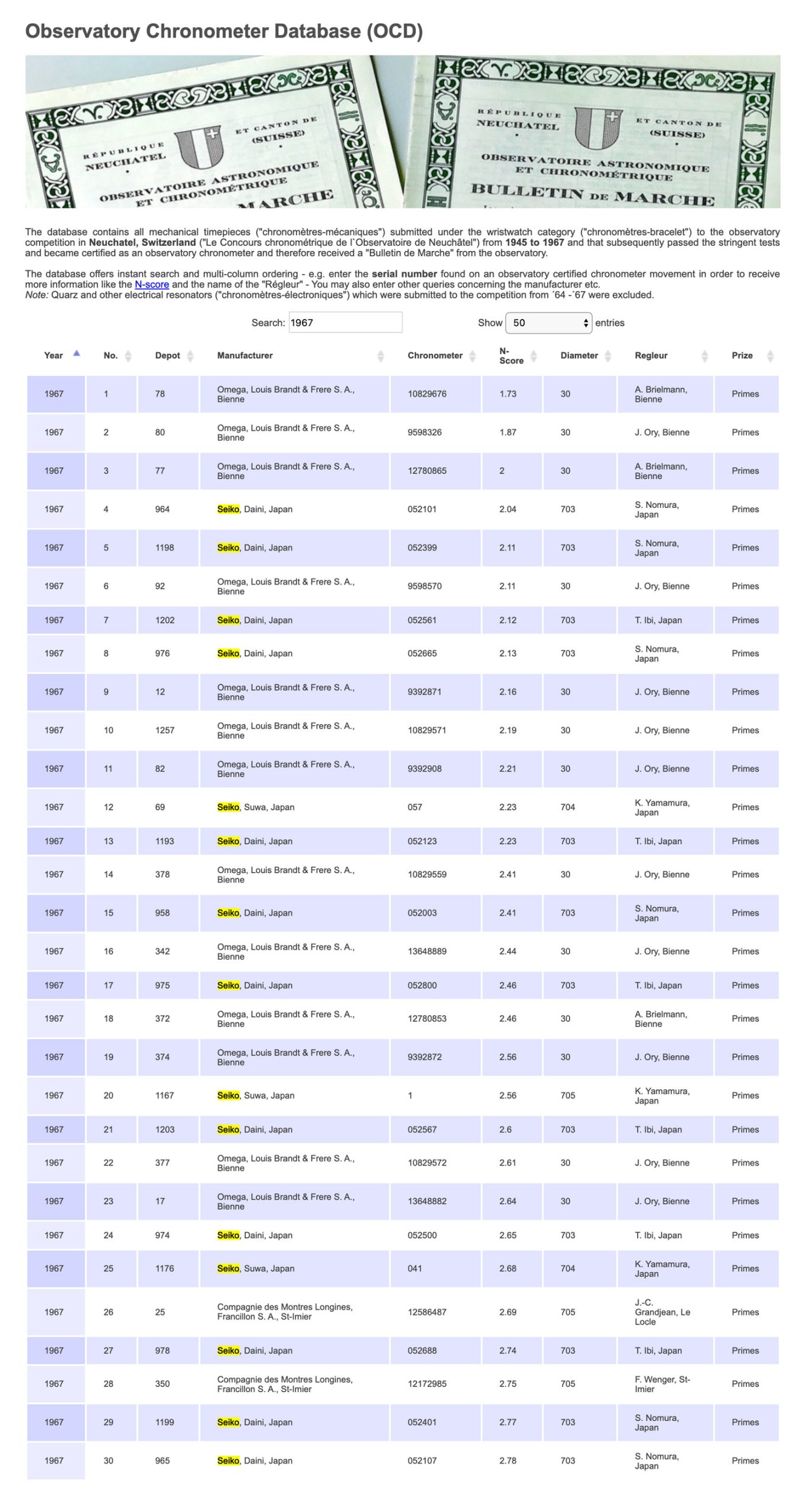
1967's top 30 entries at the observatory competition in Neuchatel, Switzerland ("Le Concours chronométrique de l`Observatoire de Neuchâtel"), doesn't take too long to notice the dominating force that Seiko was that year (Source: observatory.watch)
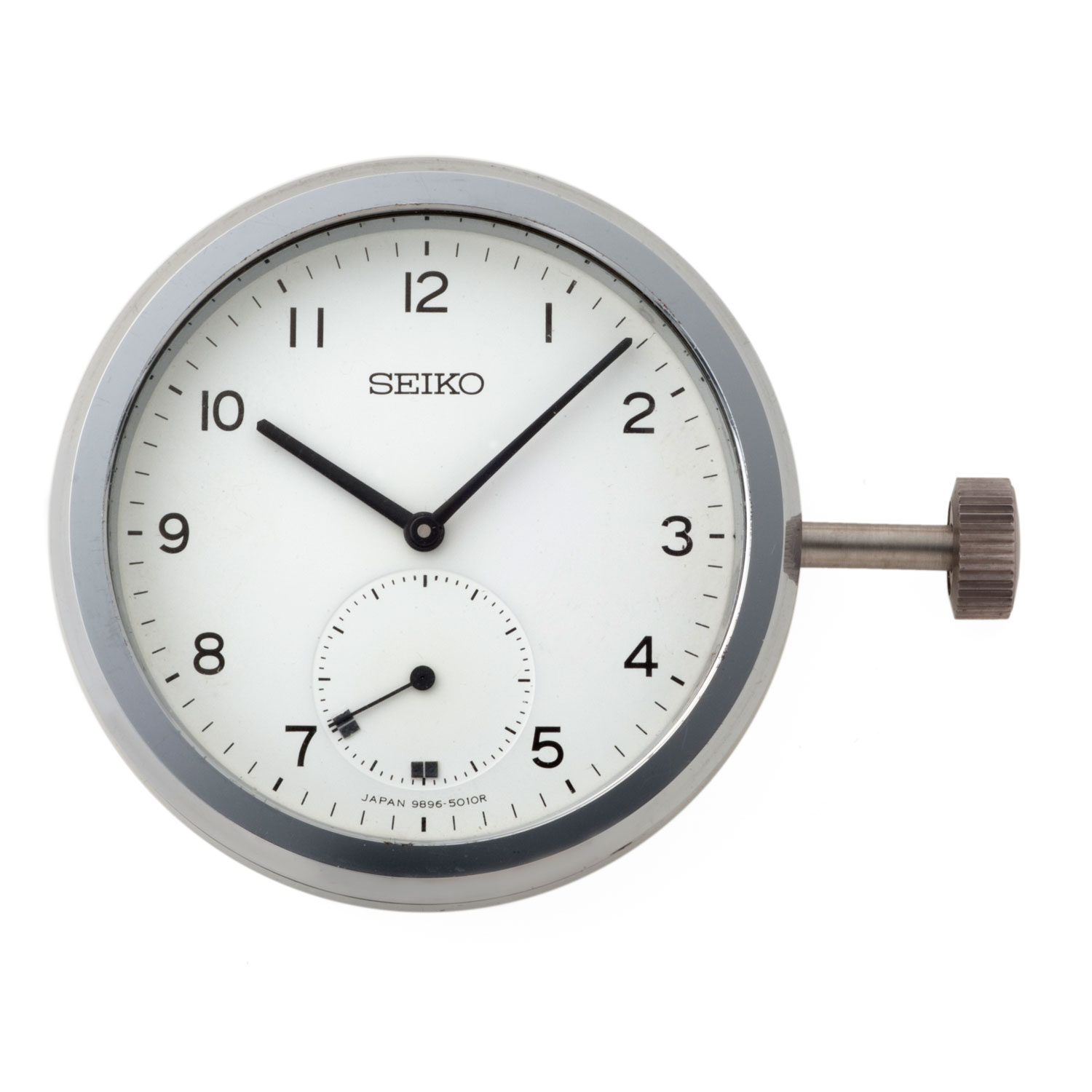
Seiko's entry to the Le Concours chronométrique de l`Observatoire de Neuchâtel with movement number 052123, which ranked 13 that year (Image: Grand Seiko)
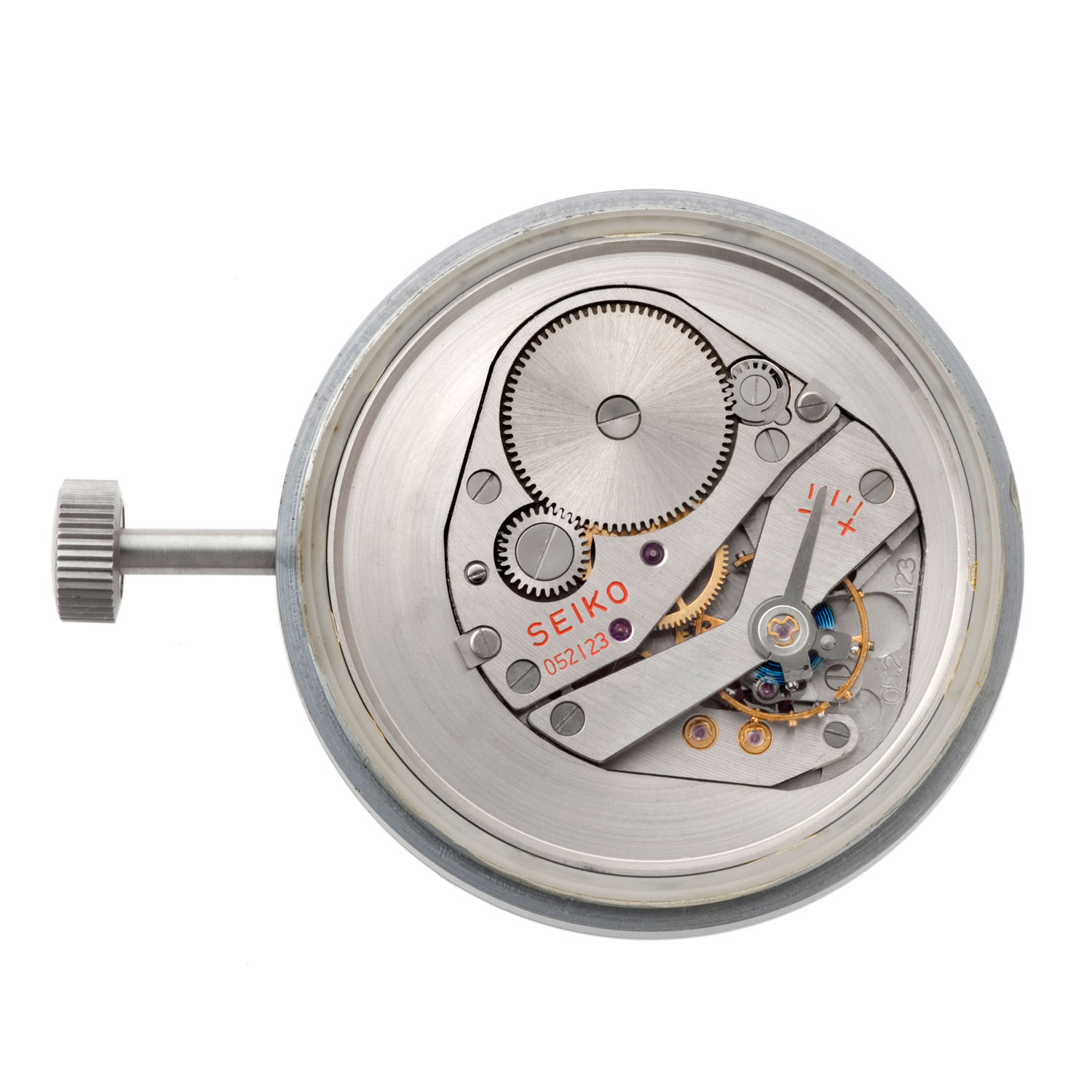
Seiko's entry to the Le Concours chronométrique de l`Observatoire de Neuchâtel with movement number 052123, which ranked 13 that year; the movement number is clearly seen here (Image: Grand Seiko)
The Birth of an Iconic Brand
Let’s provide a little background on Seiko. Cue reverse time lapse to 100 years prior and spin the globe 9,520 kilometres away. The Meiji period which began in 1868 was an incredible time in Japan filled with promise and possibility. The nation was moving from a feudal system focused on isolationism to a modern nation-state. The rationale behind this was simple. It was time for Japan to prosper and in order to do so, it had to study and adopt the greatest technical advancements from the West. And this also meant switching over to the Gregorian calendar and the 24-hour day, which led to an influx in imported clock and pocket watches.
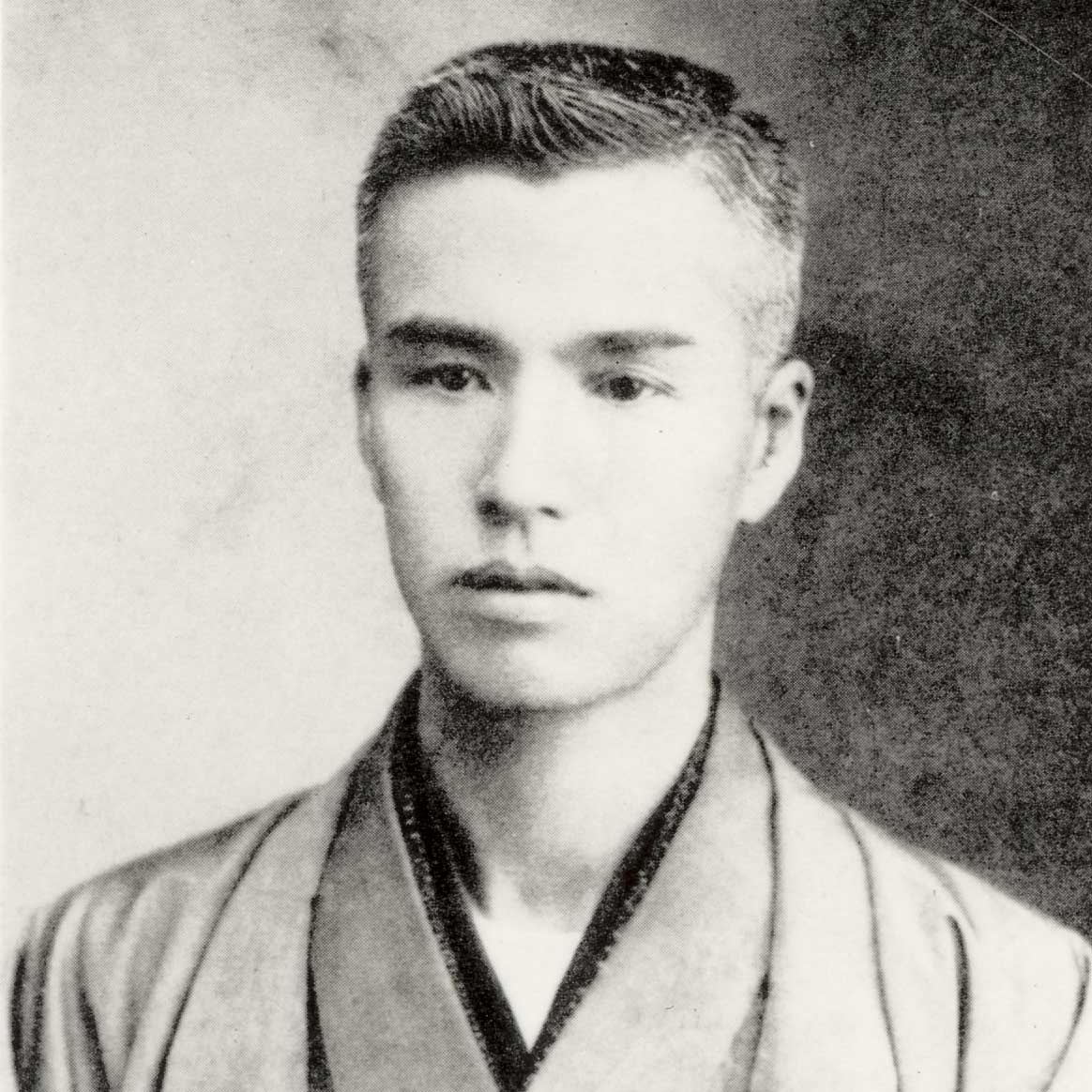
A young Kintaro Hattori, founder of Seiko in 1890 (Image: Grand Seiko)
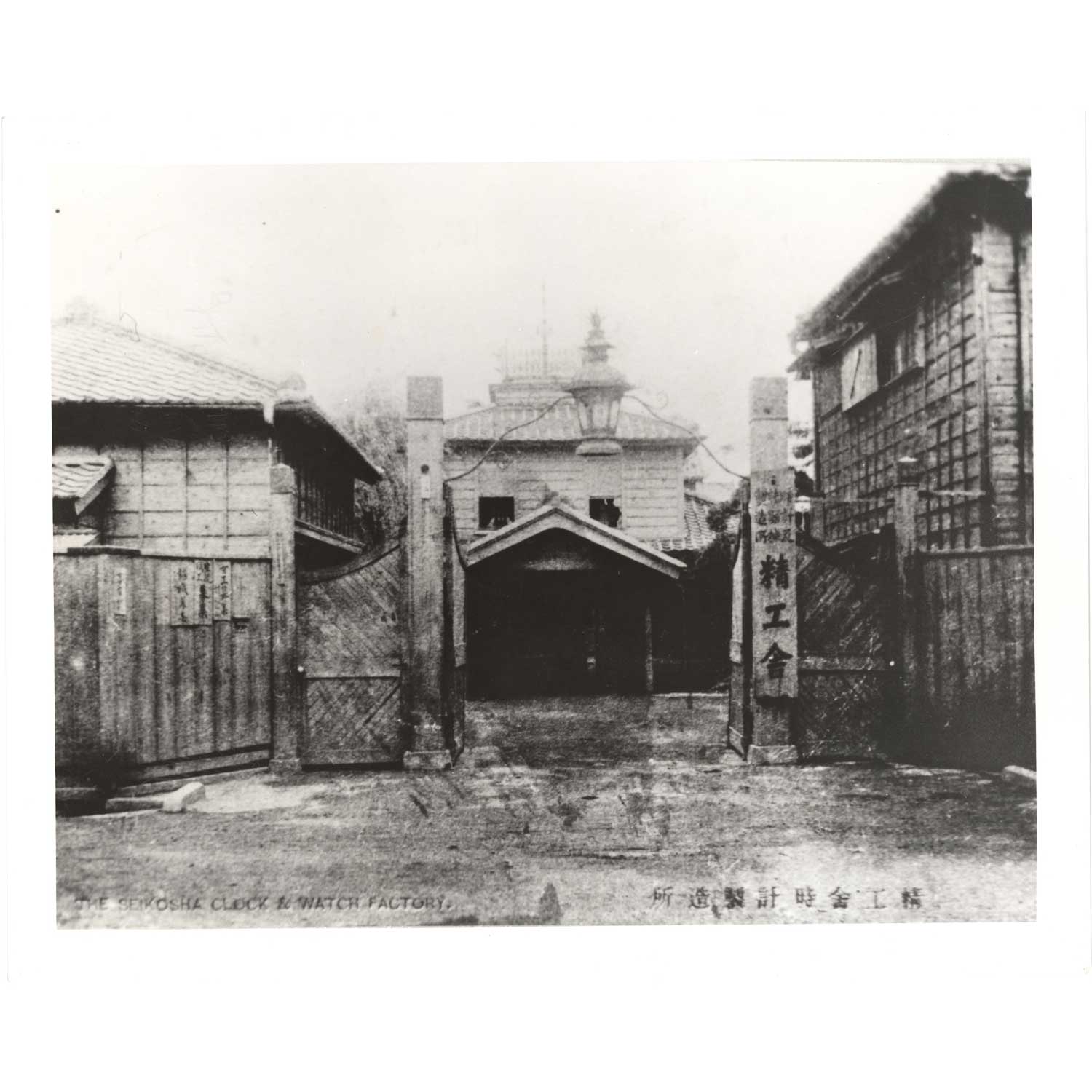
The main entrance to the Seikosha Factory around 1897 (Image: Grand Seiko)

K. Hattori clock tower in 1894; the signboard there reads Hattori Shoten (Image: Grand Seiko)
But in 1959, Seiko re-emerged and managed to rebuild both of its major factories: the Suwa Seikosha factory in the Nagano Prefecture and the Daini (literally second) factory in Kameido, Tokyo. Seiko’s stroke of genius, henceforth, was to promote internal competition between these two factories in every dimension, but particularly in chronometric excellence and the technical innovations related to it.
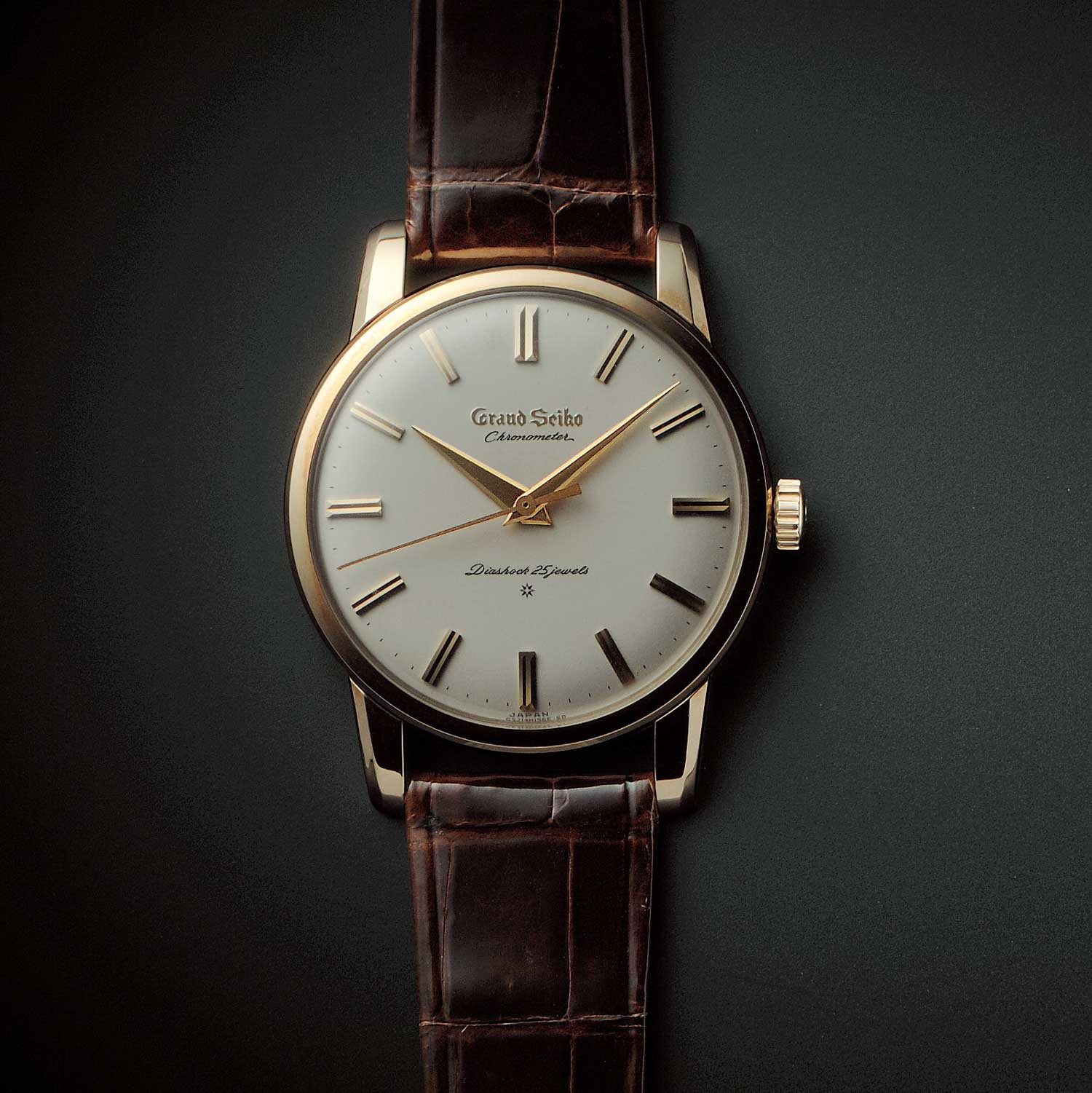
The 1960 Grand Seiko ref. 3180 (Image: Grand Seiko)
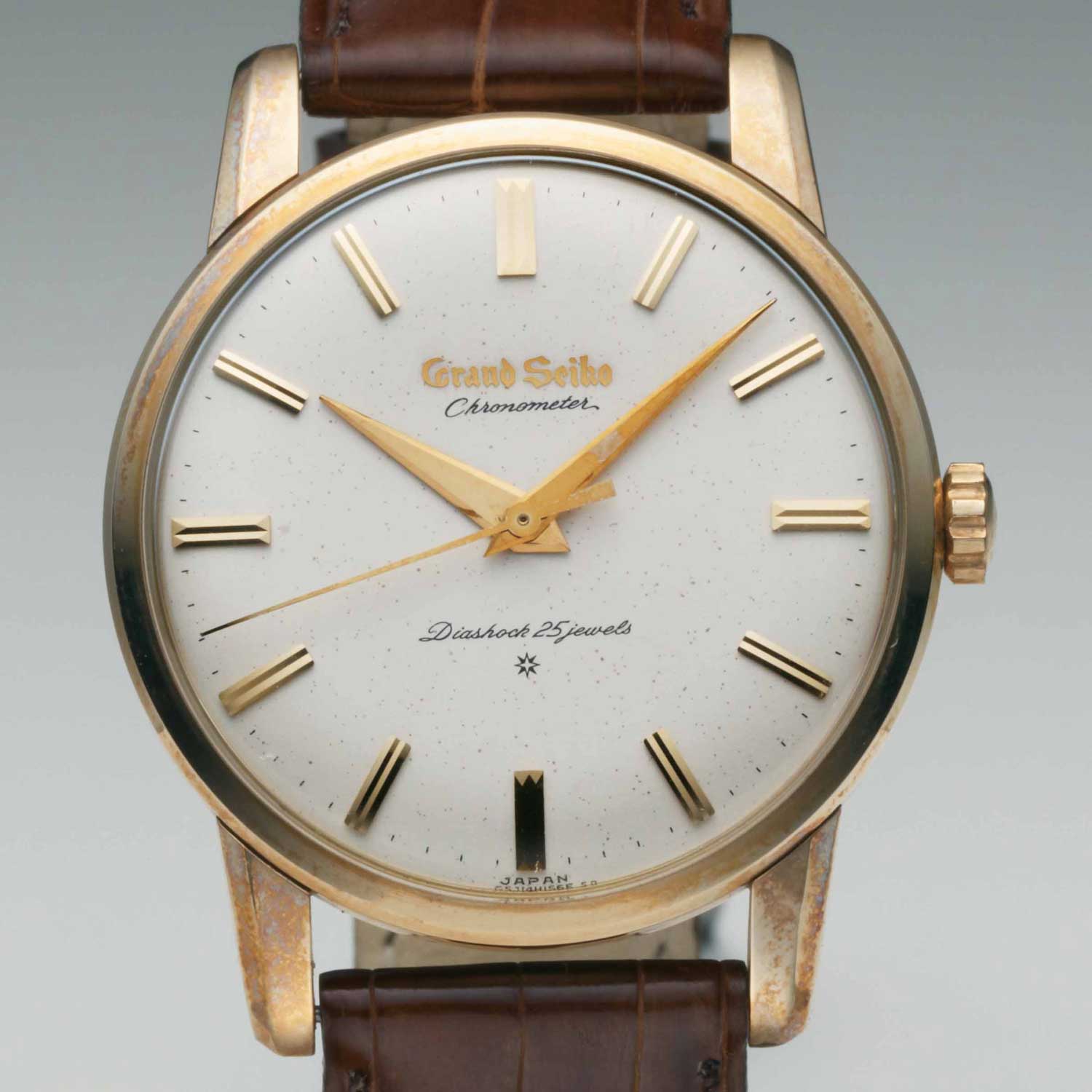
The face of the 1960 Grand Seiko ref. 3180 (Image: Grand Seiko)
It wanted to demonstrate that it could create a watch that on every level, from design to finish, and in particular, in terms of function, could hold its own with the horological elite. In 1960, with this desire to compete with the very finest watches from Switzerland, the company launched the Grand Seiko line pioneered by the reference 3180.
This timepiece has become an icon. The reference 3180 was characterised by long lugs with a strong bevel, a round case, prominent dauphine hands and faceted markers. Cases were generally gold-plated but solid platinum examples are known to exist.
Most importantly, underneath the Seiko signature now was the word “chronometer” in deference to the calibre’s rigorous internal testing for accuracy. It was made by Suwa Seikosha, and the manual-wind calibre 3180 residing within was accurate to −3/+12 seconds a day, which meant it complied with Swiss Chronometric standards set by the Bureaux Officiels de Contrôle de la Marche des Montres. But that’s where things got combative.
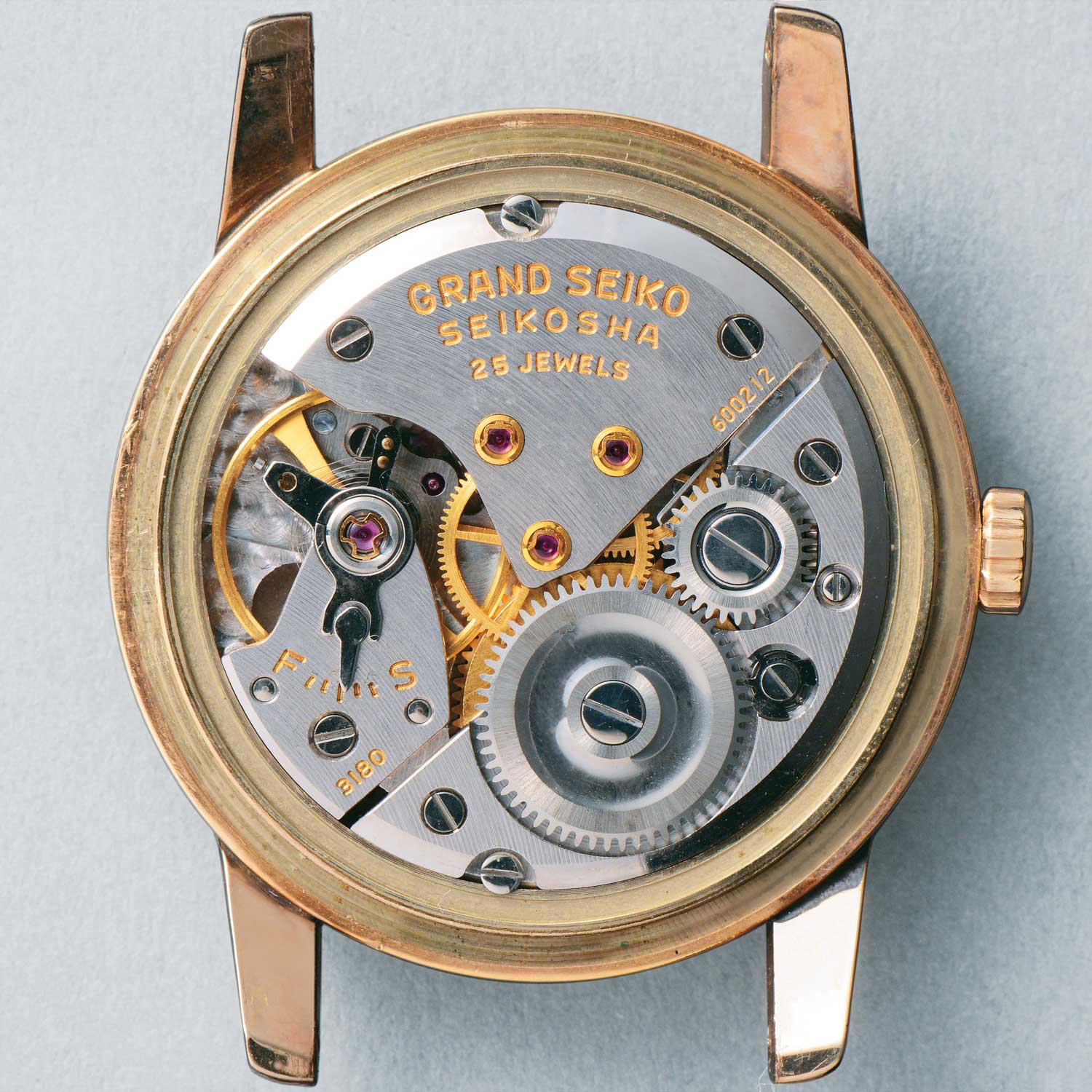
Sans caseback, the 1960 Grand Seiko ref. 3180 showcasing the movement within (Image: Grand Seiko)
The Spirit of Competition: Swiss vs. Japanese Movements
The Swiss, having caught wind of Seiko’s desire to create a line of elevated, refined and elegant timepieces with all the characteristics of the finest Swiss watches, began to balk at the idea of the Japanese company using the term “chronometer” in reference to its watches’ excellent accuracy. As such, the European Chronometer Official Association wrote a scathing letter to Seiko, insisting that it remove the word from its King Seiko watches manufactured at the Daini factory and its Grand Seiko watches made in the Suwa factory. (The output of these two factories would eventually be merged under the Grand Seiko designation in Suwa in the Nagano Prefecture).
And that is when, as they say, “Shit got real.” In response, Seiko sent several mechanical wristwatch movements to the 1964 Neuchâtel Observatory trials, considered at the time the most brutal and demanding chronometric competition in the world. Movements could not deviate more than +/− 0.75 seconds a day with +/− 0.20 seconds for temperature variations. Movements were submitted to relentless scrutiny for 45 days straight. Now let’s look at Seiko’s history in these Swiss chronometric trials.
It was the Suwa Seiko factory where Grand Seiko was born that was the first competitor in these trials. In 1963, they sent an experimental quartz crystal clock which placed 10th in the marine chronometer category. But the following year onwards, Seiko would only send its most elite mechanical movements destined for Grand and King Seiko watches.
In the context of today, it may seem amusing that we would accord so much value to the accuracy of a mechanical watch. But you should understand that mechanical timing devices had enabled massive advancements in human history, reaching back to John Harrison in 1761, whose marine timekeeper finally allowed mankind to calculate his longitude more accurately at sea, which gave dominion over the oceans to the British Navy.
Contribution to precision measurement was also the reason that Charles Édouard Guillaume, the first person to create a thermal compensating hairspring, won a Nobel Prize in 1920. The kings of the Neuchâtel Observatory trials were brands like Omega, Longines and Girard-Perregaux, and calibres such as the Peseux 260, the Longines 360 and the Zenith 135 were born out of this competition.
The initial results for Seiko in 1964 were disastrous with the two watch movements they entered placing 144th and 153rd, which meant that these watches didn’t qualify as chronometers. In 1965, things became marginally better with a 114th ranking. Rather than becoming discouraged, this just stoked the competitive fire in Seiko and the brand was encouraged to experiment with high-frequency movements and other innovative solutions to improve accuracy. This spirit of intense competitiveness would later give rise to its two great signature creations, the Hi-Beat and Spring Drive movements. The company returned in 1966 and managed a ninth place at the trials.
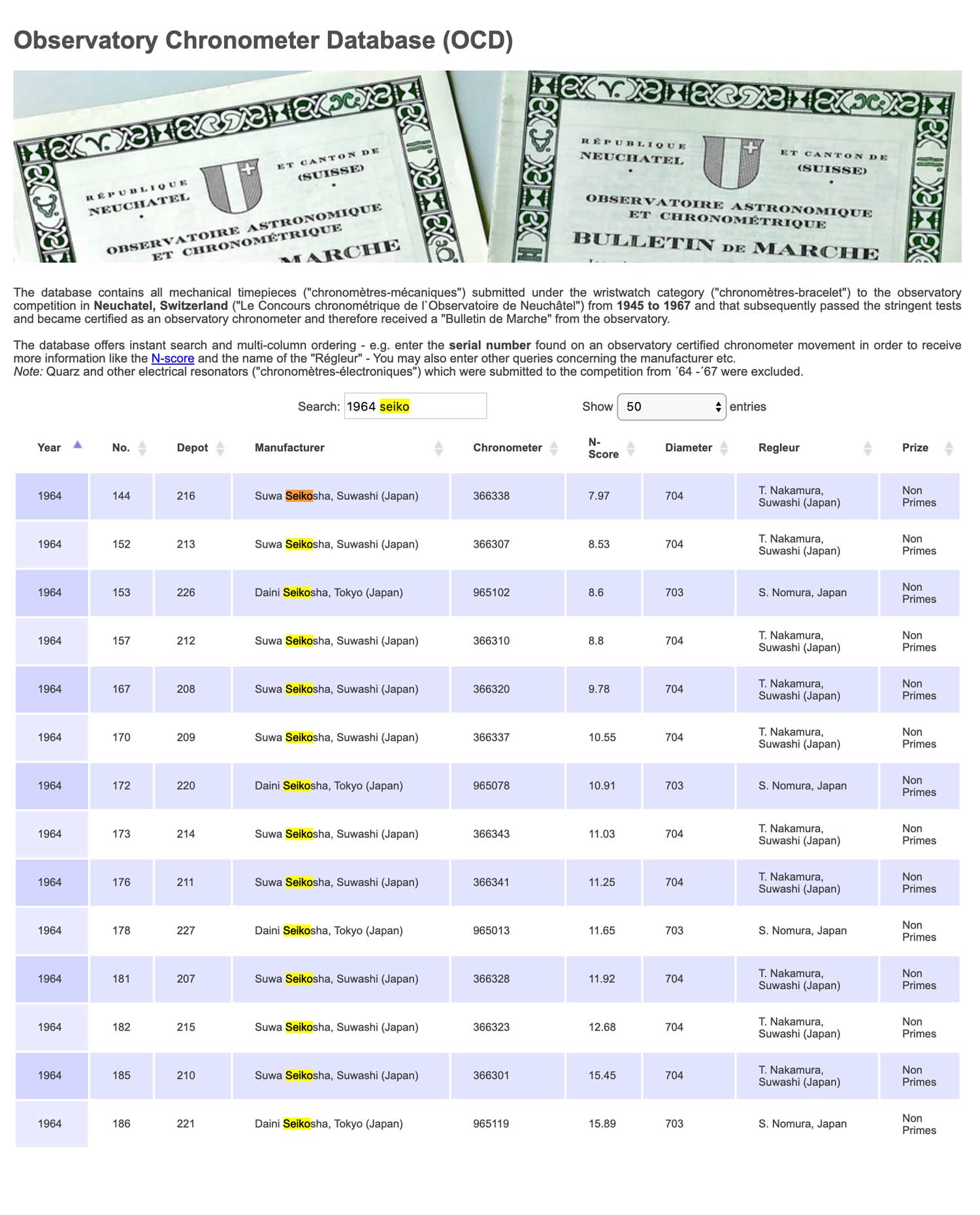
Seiko's 1964 entries to the observatory competition in Neuchatel, Switzerland ("Le Concours chronométrique de l`Observatoire de Neuchâtel"), weren't the most encouraging with the highest scoring entry ranking in at 144 (Source: observatory.watch)
At the 1968 trials, Seiko’s movements performed so brilliantly that the Swiss did the unthinkable and called off the competition! Seriously. No joke. It was like, “That’s it, motherfuckers, we’re going home.”
It was later revealed that Seiko had placed second and every place from fourth to eighth. It should be noted that this was at a time when the Swiss had introduced quartz technology in the form of the Beta 21 movement. Not to be discouraged, Seiko promptly gathered up its movements, decamped to Geneva and the observatory trials there, winning every place from fourth to 10th, with the major caveat being that every watch from first to third was a Beta 21 quartz watch. To place that in context, this was the equivalent of sailboats beating the most powerful and advanced motorboats on the open sea. And with that, the legend of Grand Seiko was born.
It should be noted, too, that in 1968, Seiko submitted 103 4520A calibre movements to Neuchâtel Observatory of which 73 passed as chronometers. These movements were cased in a unique cushion-shaped model called the Astronomical Observatory Chronometer, making Seiko one of a handful of watch brands to retail watches with true observatory-certified movements in series. To me, these represent the single most desirable Seiko watches in modern history.
Side note, Girard-Perregaux was one other such watch brand. What made Girard-Perregaux unique though is that it was the only watchmaker to retail series produced movements that were remarkably, certified in competition!
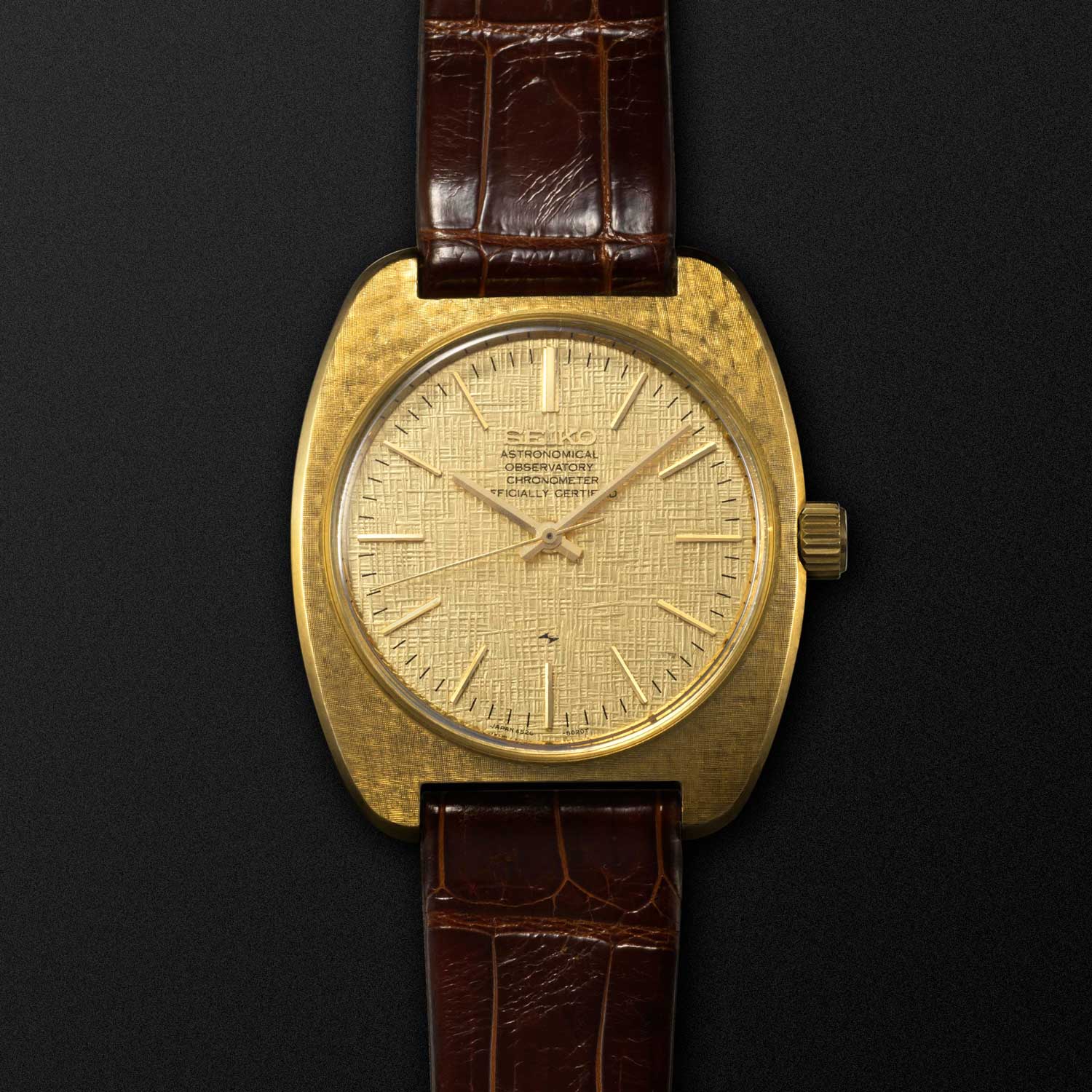
The 1969 Astronomical Observatory Chronometer fitted with the cal. 4520 (Image: Grand Seiko)
The Beauty of Grand Seiko
Now this is a great story. But until recently it was a purely technical story, meaning that it still didn’t completely resonate with me emotionally. I was intrigued but not quite sold. When I looked at a Grand Seiko watch, I marvelled at its technical innovation, was impressed by its clear expression of quality but emotionally, it left me somewhat cold. Especially considering my enduring and voracious love affair for Swiss horology.
Then just recently, in a strange moment of epiphany, made even stranger as it happened at the very last watch event held in the Grand Seiko boutique in London in 2020, before the COVID-19 pandemic blitzkrieged the world and forever changed the way we live, I suddenly understood what Grand Seiko was all about. Its beauty is in its otherness, in its adamant refusal to draw inspiration from anything apart from its own design language.
From the snow in the Nagano Prefecture, from its own history in quartz technology which eventually yielded the hybrid Spring Drive movements, from its leadership in dive watch design, which influenced ISO rules more than any other brand, from its otherworldly level of finish, its design language was quirky but ultimately immensely beautiful and perennially appealing. So much so that I felt compelled to buy one. This is how it went down.

The gentleman who defined the “Grammar of Design” for Grand Seiko, Taro Tanaka
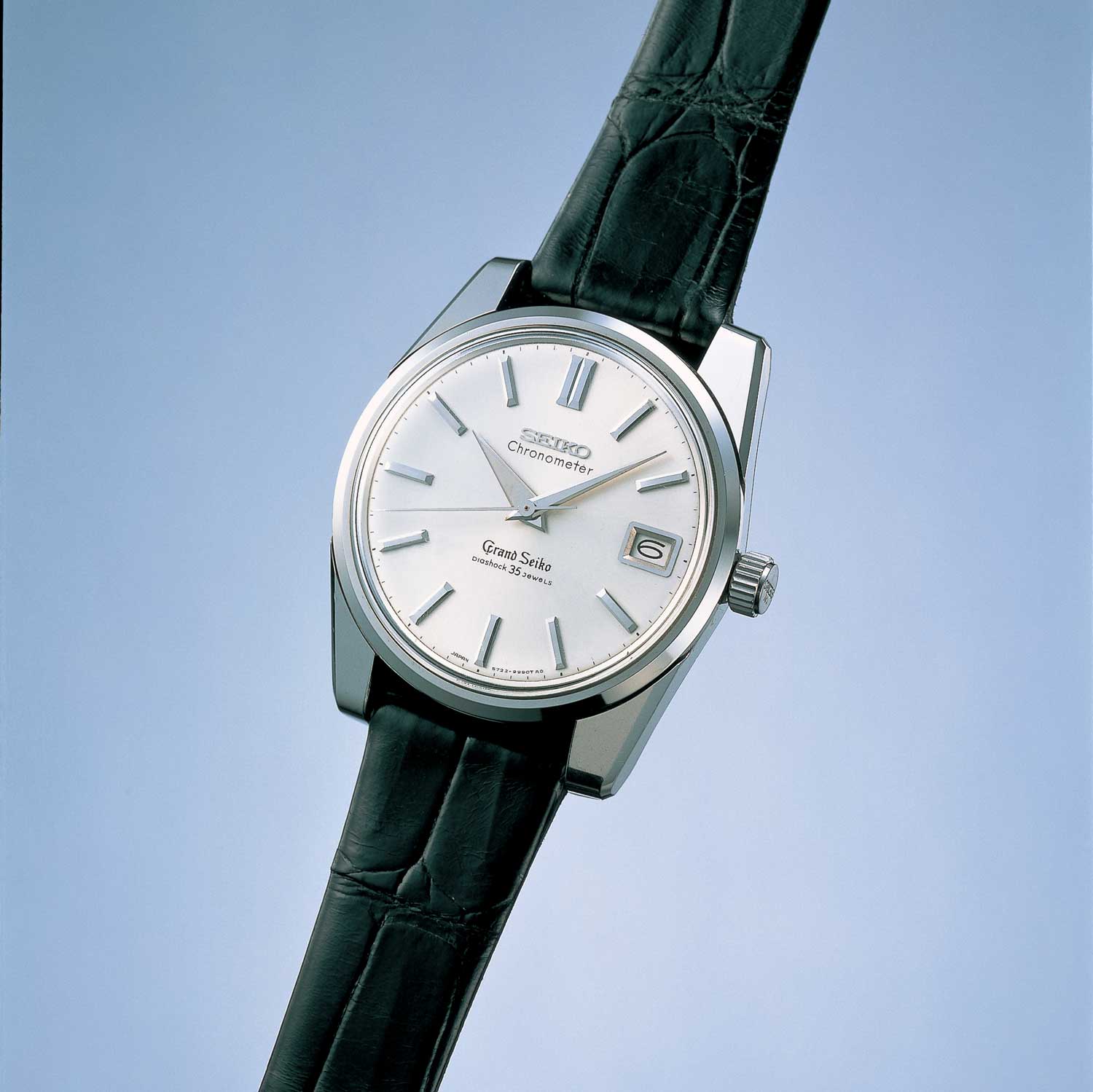
The 57GS commenced production in August 1963 with public launch in February 1964; the exact mode pictured here is a 57GS first featured in the 1966 Seiko catalog (Image: Grand Seiko)

1967 Grand Seiko ref. 44GS (Image: Grand Seiko)
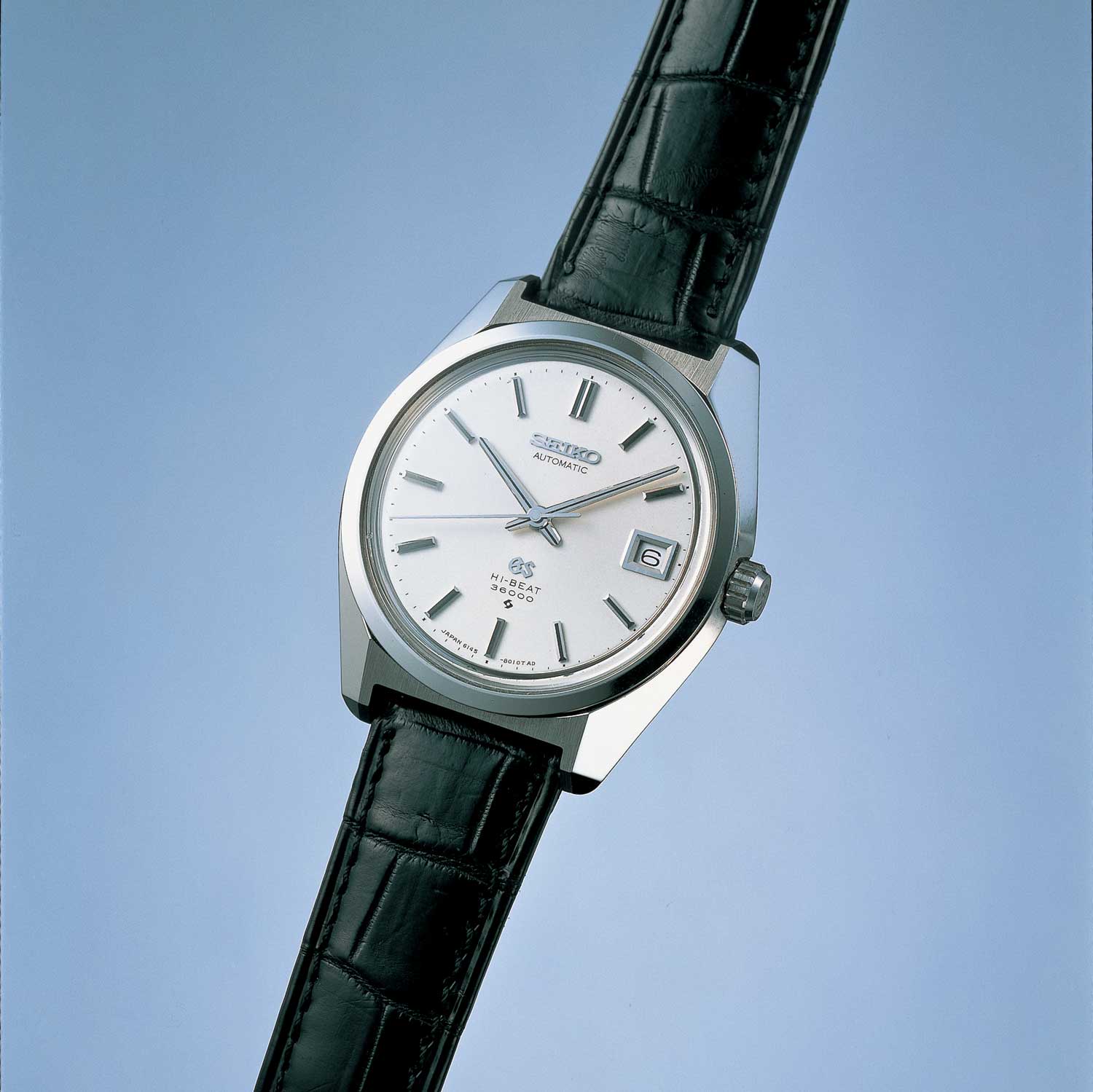
1968 Grand Seiko ref. 61GS (Image: Grand Seiko)
What I find cool about Grand Seiko watches is that they possess a design language characterised in general by muscular and sharply faceted integrated lugs, and highly reductionist, Zen-purist dials that is unlike the horological design language of the West. It took me a while to fully appreciate the utter originality of Grand Seiko’s aesthetic language.
But the part of Grand Seiko’s history that I found most fascinating, the part that started to hook me and reel me in, relates to its parent companies’ work in two pioneering types of movements, the Hi-Beat, or high-frequency, movements that helped it dominate the observatory trials in 1967 and 1968, and a radical new movement that combined the best elements of quartz and mechanical watchmaking named the Spring Drive. Because of the importance of these two major technical advancements we have selected two High Beat watches and one Spring Drive watch for our initial offering of Grand Seiko timepieces at the Revolution Watch Bar.
The Hi-Beat Calibres
Apart from being the watch that is thought to most perfectly embody Taro Tanaka’s Grammar of Design, the 61GS is also distinguished by being the very first high-end Seiko watch to feature the company’s Hi-Beat movement.
OK, what’s the theory behind a high-frequency movement? The balance and escapement form the regulating organs of a mechanical watch. Which means that the balance oscillates back and forth at precise uniform intervals and is locked, unlocked and delivers impulse to the balance thanks to the escapement.
Marine chronometers are extremely accurate even though their balances tend to oscillate relatively slowly at 18,000vph or less, because the regulating organ is isolated from the rolling and rocking of the ship deck by being mounted on a gimbal. However, a balance in a wristwatch experiences an infinite number of micro-shocks that can result from anything like clapping your hands or simply just swinging your arm back and forth. If you think about it, the fact that this tiny wheel which is vibrating anywhere from five to 10 times per second does so with such amazing accuracy, is almost an act of magic.
It was discovered that elevating the vibrational speed of the balance wheel gives it greater autonomy from shocks, gravity and any other erosive forces. Girard-Perregaux was the first manufacture to commercialise a high-frequency movement that beats at 5 Hertz or 36,000vph.
In 1967, Seiko released its first Hi-Beat calibre 5740C, also a 5Hz movement. This was, however, not placed in a Grand Seiko watch, but in a model known as the “Lord Marvel”. The first Grand Seiko with a Hi-Beat movement appeared in the 61GS, an absolute marvel of design and engineering. Amusingly, a full 36,000 watches of the 61GS model were created. If you are interested in a first Grand Seiko vintage watch, this is the perfect place to start, especially as prices tend to range around the accessible 2,500 US dollar mark.
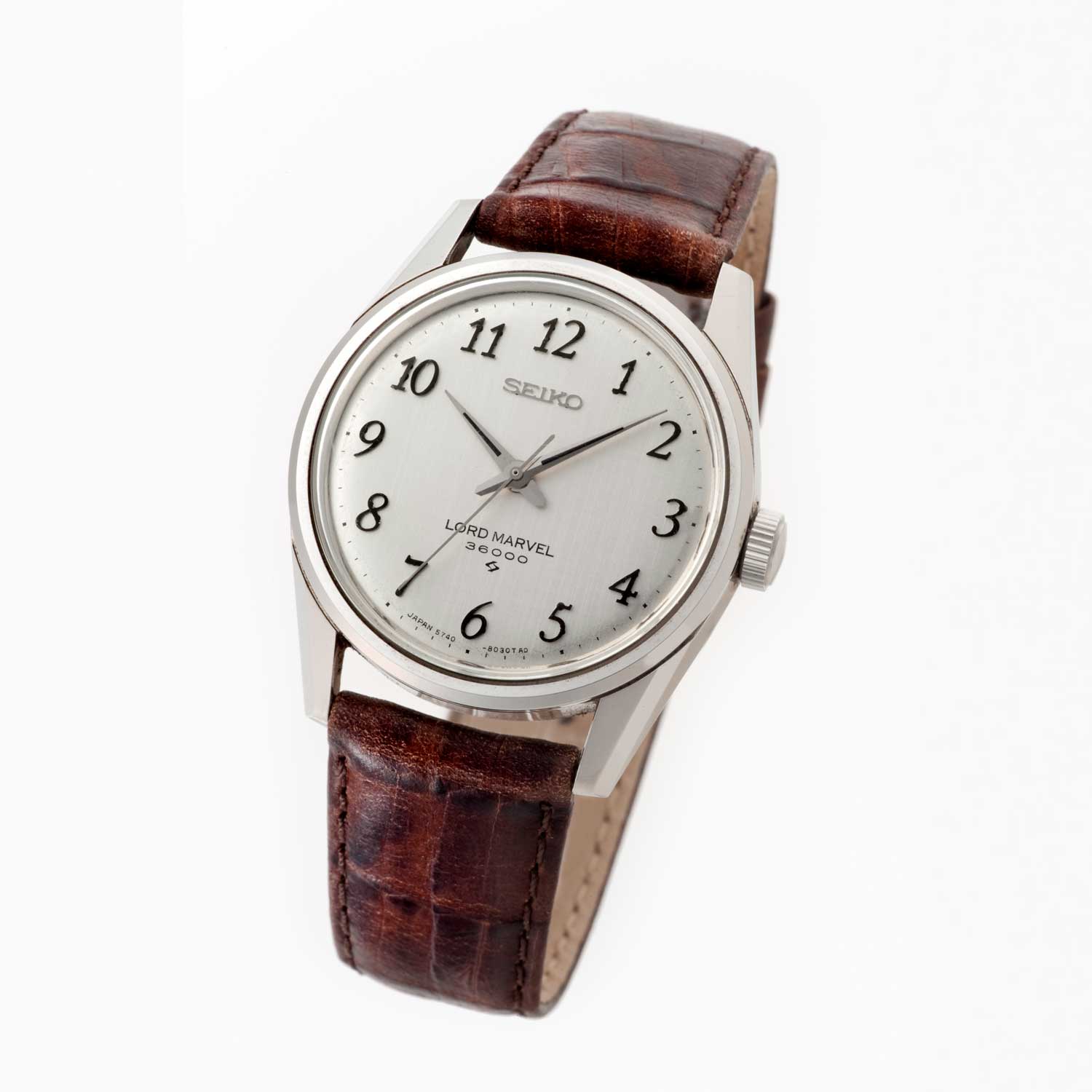
The 1967 Lord Marvel powered by the 36000 VPH movement (Image: Grand Seiko)
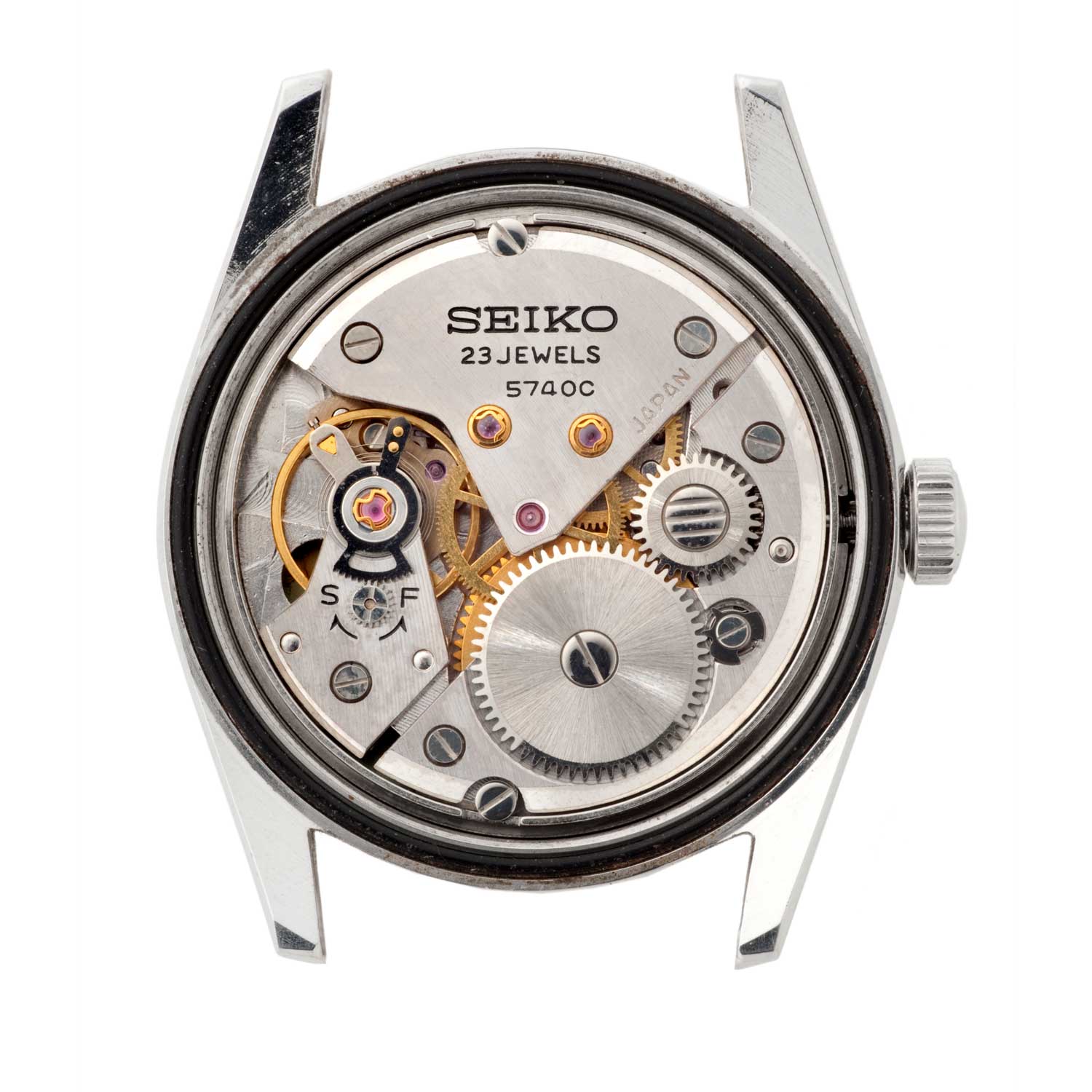
The 1967 Lord Marvel 36000 VPH movement (Image: Grand Seiko)
This new escapement does away with the Swiss anchor design and introduces instead the dual-impulse escapement, which features an eight-point skeletonised escape wheel, which works in conjunction with a lever-type escapement, so that sliding friction is only produced when the balance swings counter-clockwise and not clockwise. This better and more badass version of the Hi-Beat was launched earlier this year in the charming SLGH002 dress watch.
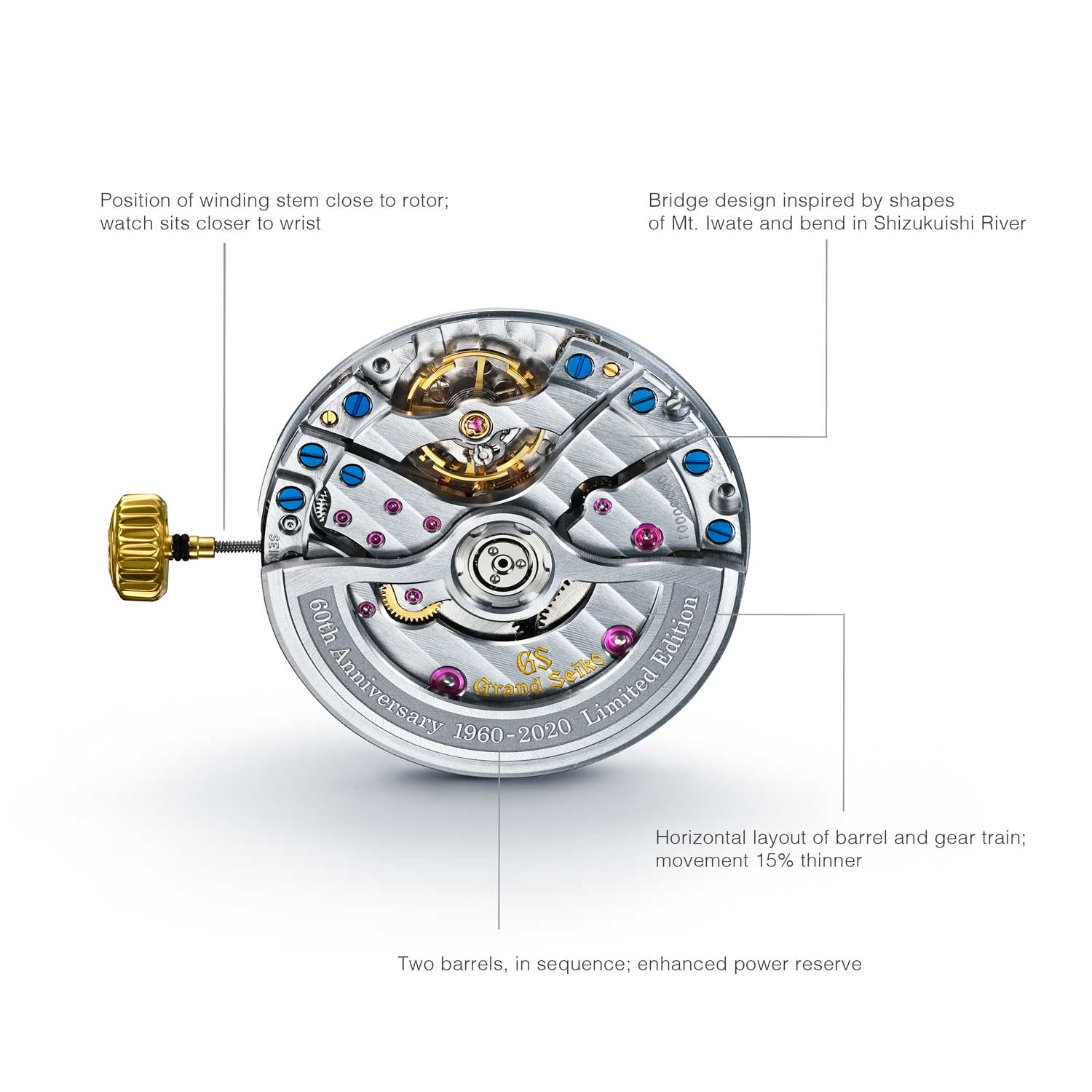
Grand Seiko’s 2020 High Beat Calibre 9SA5 (Image: Grand Seiko)
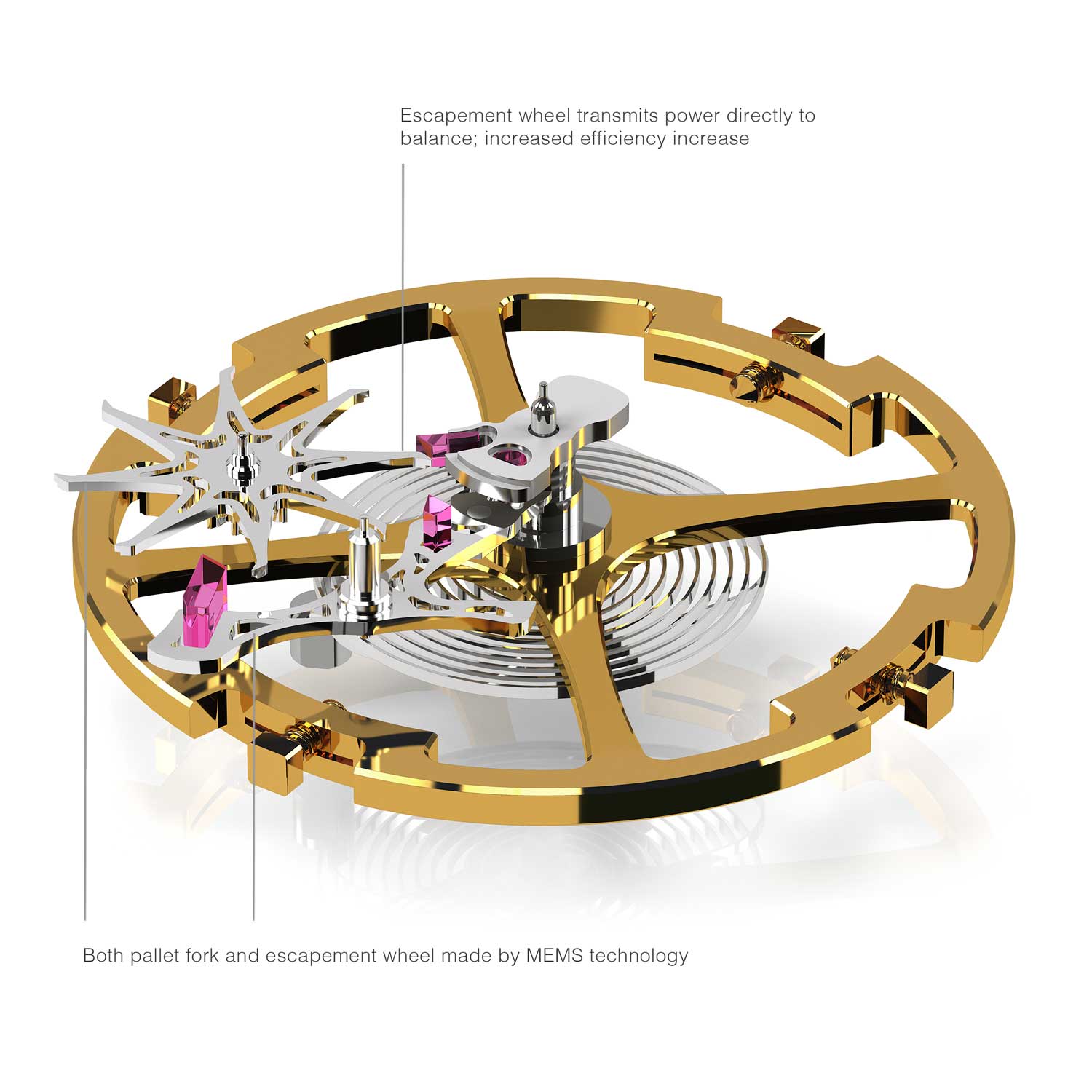
Newly developed escapement assembly developed for Grand Seiko’s 2020 High Beat Calibre 9SA5 (Image: Grand Seiko)
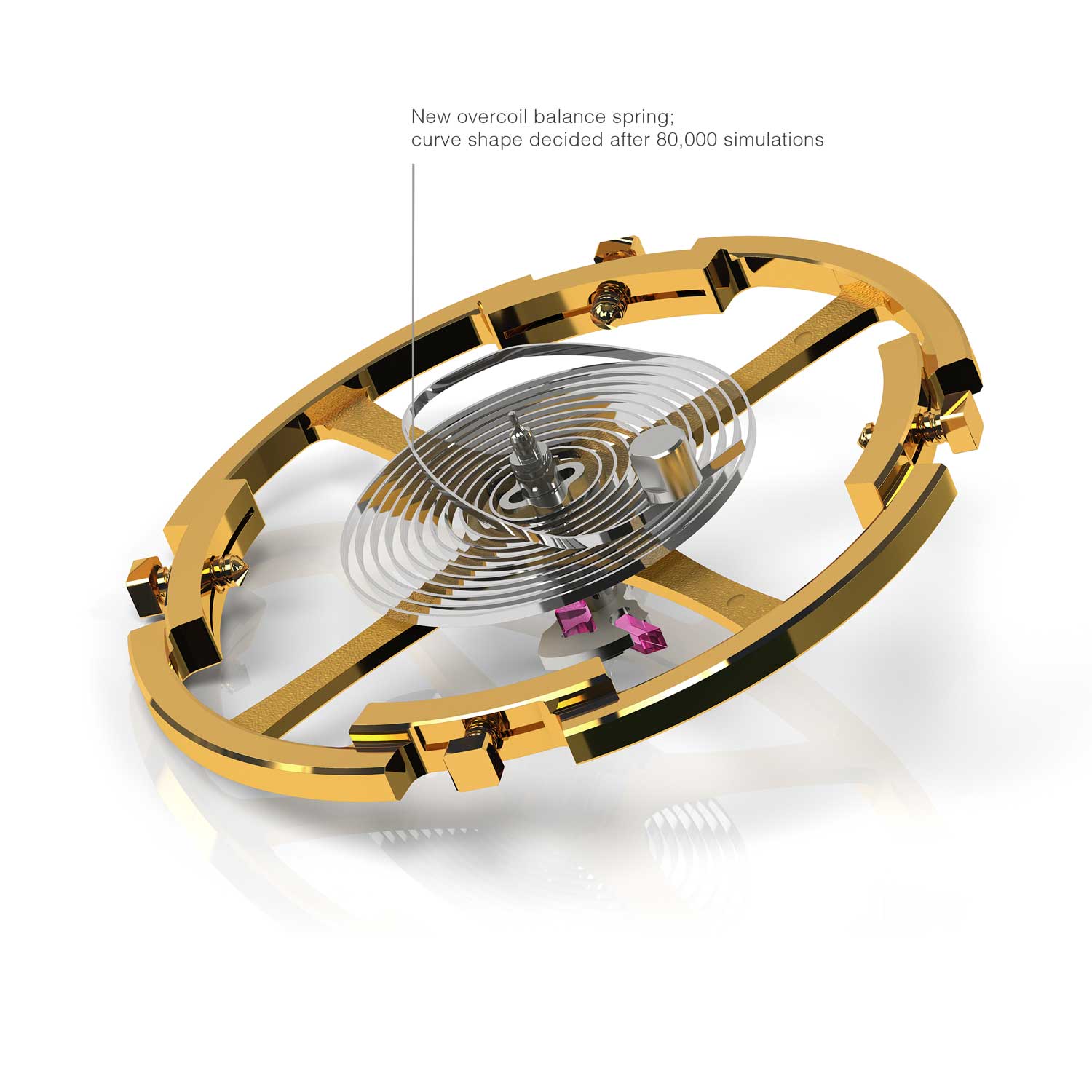
Newly developed overcoil balance spring for Grand Seiko’s 2020 High Beat Calibre 9SA5 (Image: Grand Seiko)
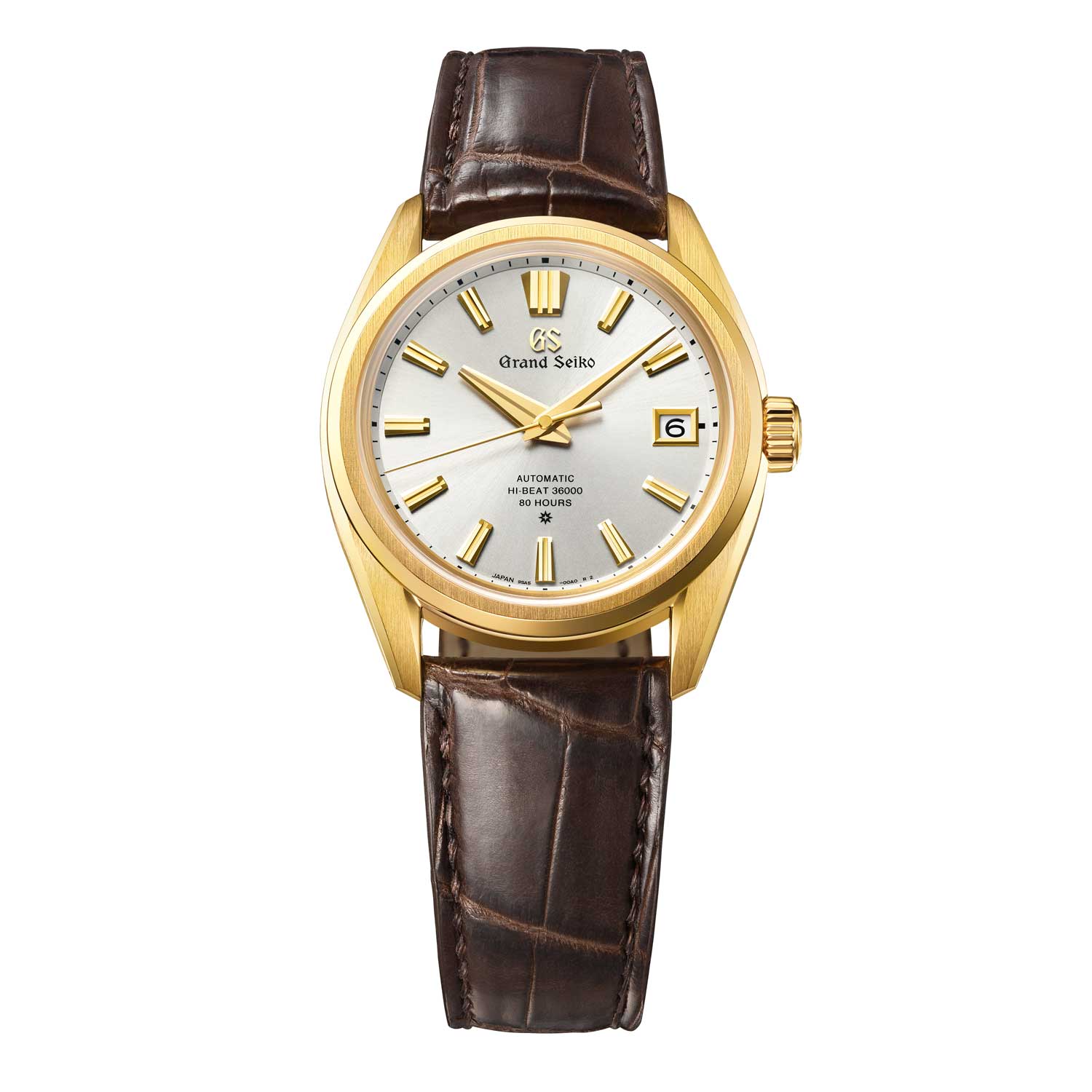
Grand Seiko 60th Anniversary Limited Edition SLGH002 (Image: Grand Seiko)
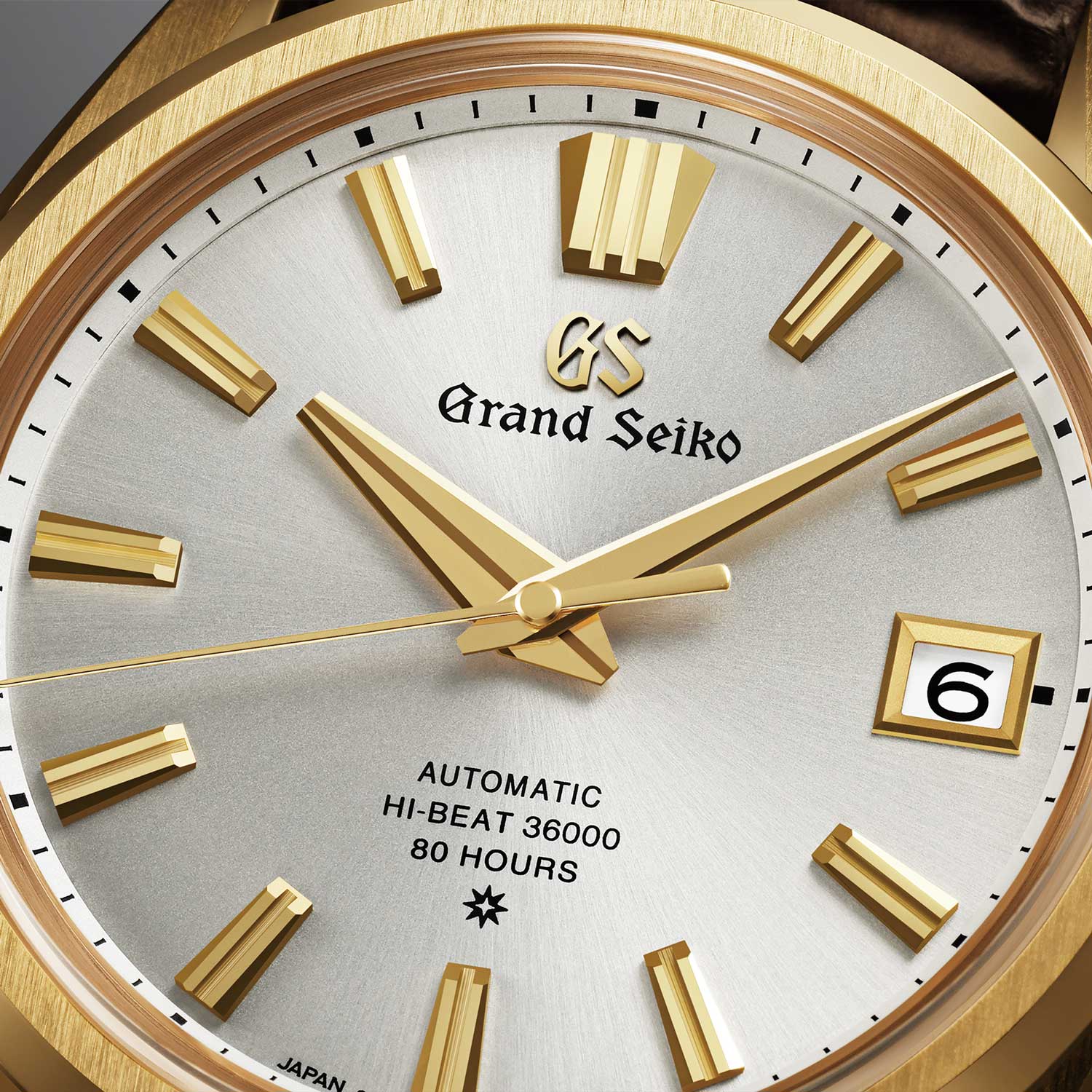
Close up on the dial of the Grand Seiko 60th Anniversary Limited Edition SLGH002 with virtually instantaneous date (Image: Grand Seiko)
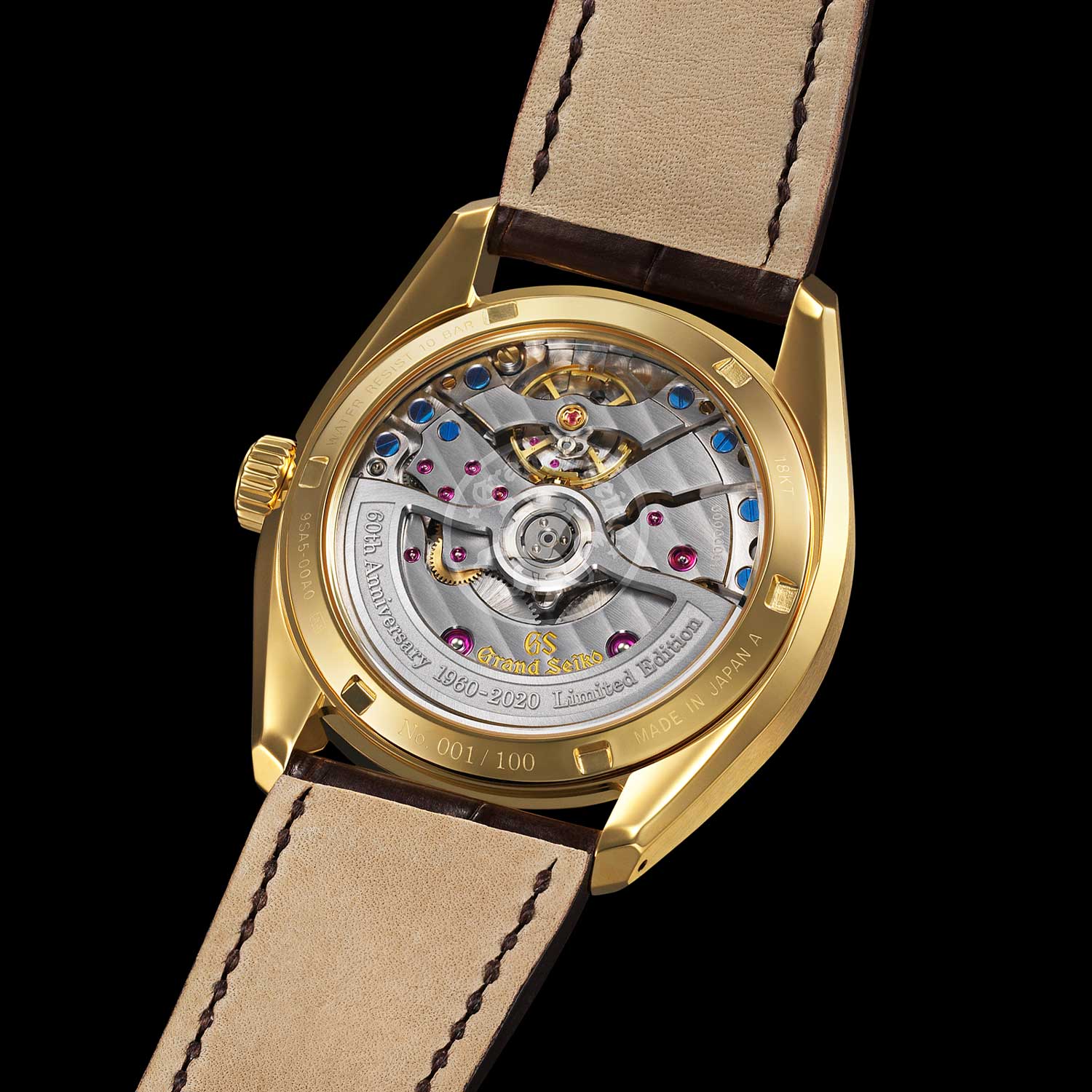
Grand Seiko’s 2020 High Beat Calibre 9SA5 seen through the caseback of the 60th Anniversary Limited Edition SLGH002 (Image: Grand Seiko)
Our Hi-Beat Grand Seiko Watches: The SBGH245G & the SBGJ201G
For our first official retail salvo of Grand Seiko watches, we understood the importance of offering what we consider to be two of the most iconic Hi-Beat watches created by this extraordinary Japanese manufacture. Because the technology featured in the 9S85 and 9S86 movement, is directly descended from the Grand Seiko’s incredible success at the Neuchatel Observatory trials, where they rapidly understood a higher vibrational speed allows the oscillator to simultaneously shrug off micro-shocks subjected to it, as well as, divide time to smaller fractions of a second resulting in greater accuracy. Indeed, because of its success at these Swiss Trials, you could argue that no brand in the world has greater legitimacy in the realm of high frequency movements.
When it came to selecting our Hi-Beat Grand Seiko watches we immediately knew which two timepieces we wanted to offer. The first is the SBGH245G. While the word “icon” can sometimes be overused, it is most appropriate in its application to this amazing watch.
It features a case crafted in Grand Seiko’s proprietary High Impact Titanium. This material has a higher surface hardness than other comparable titanium, as well as, a capacity to self-heal with small scuffs, thanks to the formation of an oxide layer over this aberration. But most impressive of all is the application of Grand Seiko’s Zaratsu finish to this case, which is truly ignited each time it is placed in the light with the most flawless application of delicate uniform brushing, contrasting with high polished areas.
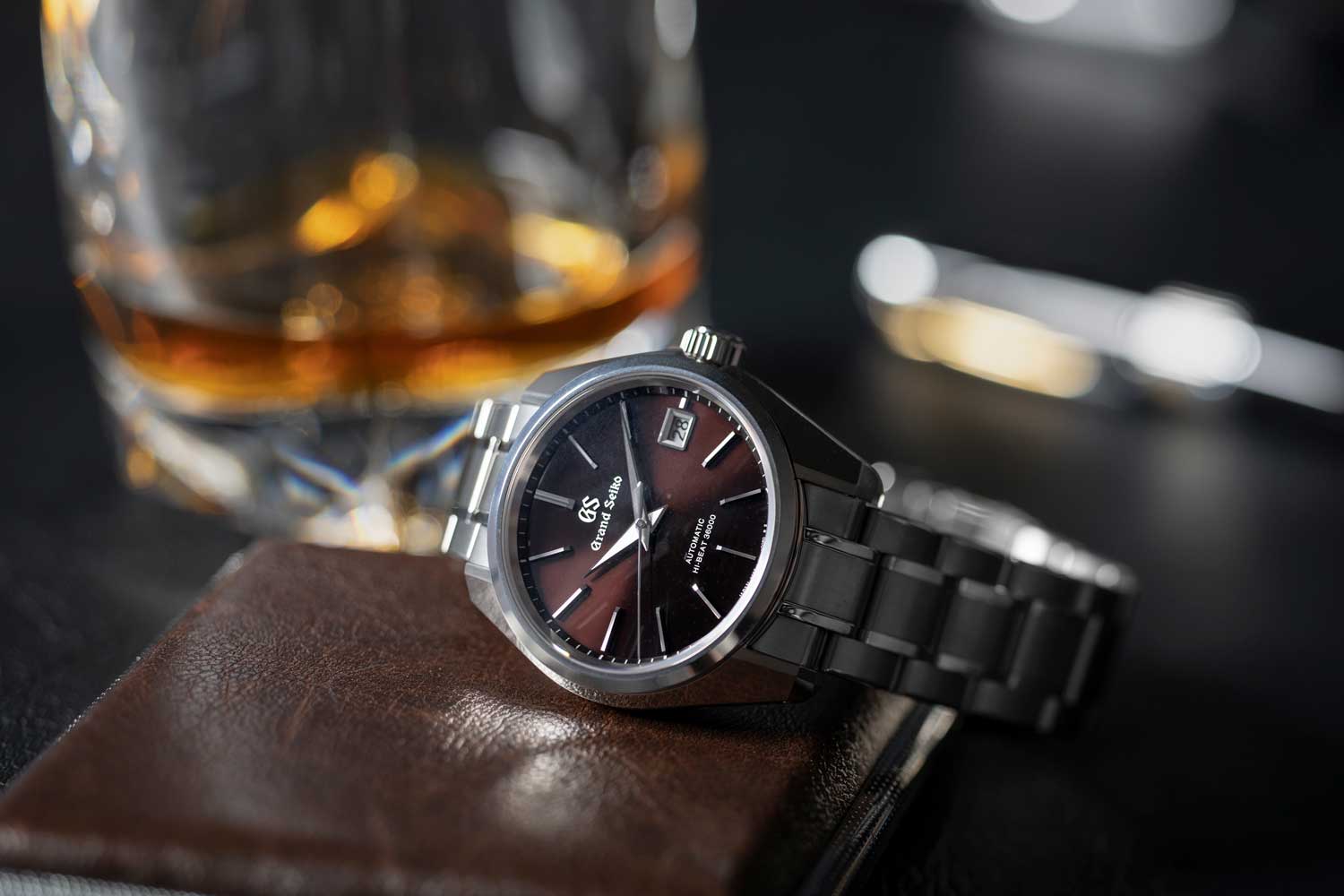
The Grand Seiko Hi-Beat SBGH245G with a sunray finish dial that creates an almost constant lightshow on the wrist when outdoors and is a hue that is mid-way between brown and burgundy (©Revolution)
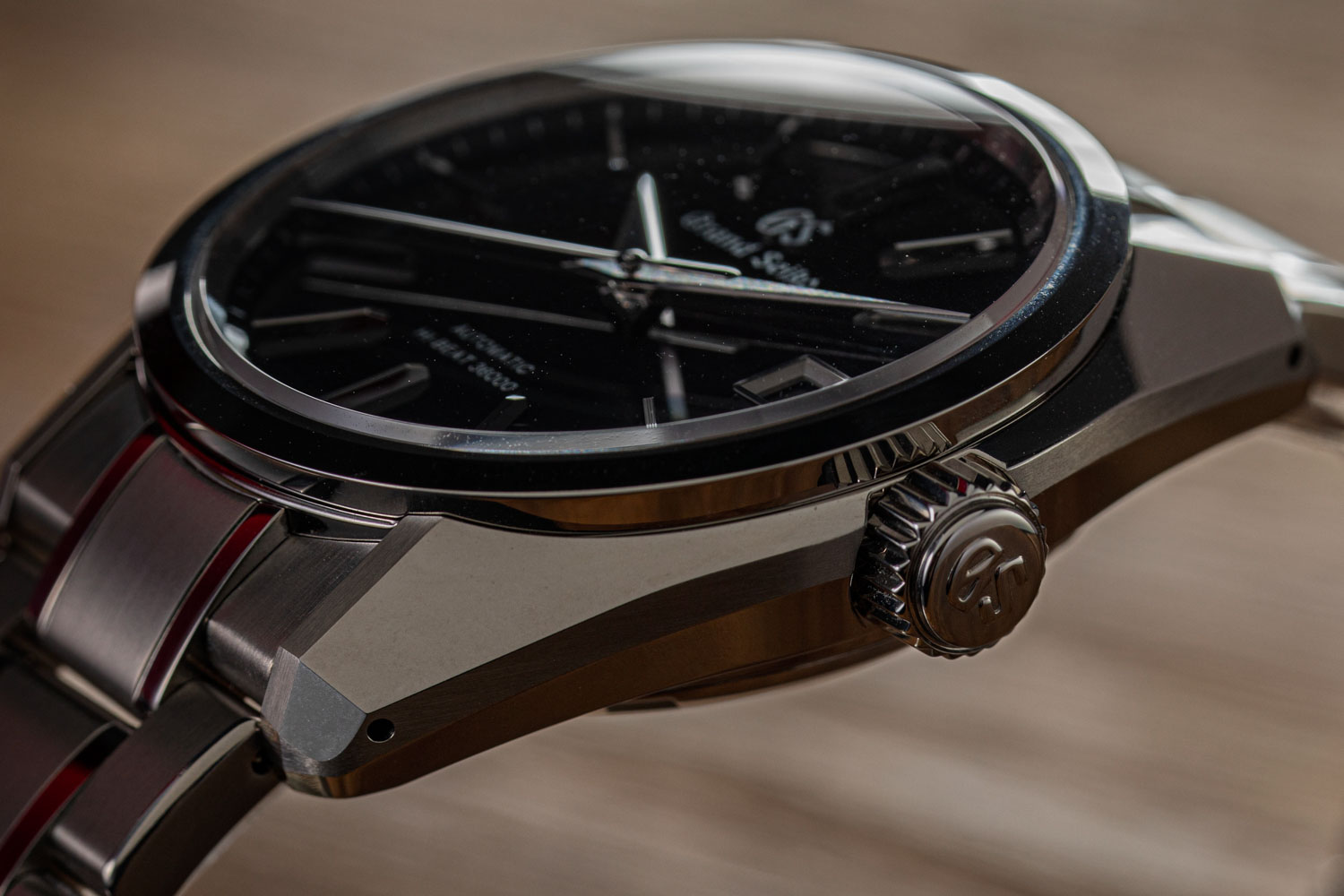
The Grand Seiko Hi-Beat SBGH245G is constructed in the brand's High Impact Titanium featuring the transcendent perfection of Zaratsu finish (©Revolution)
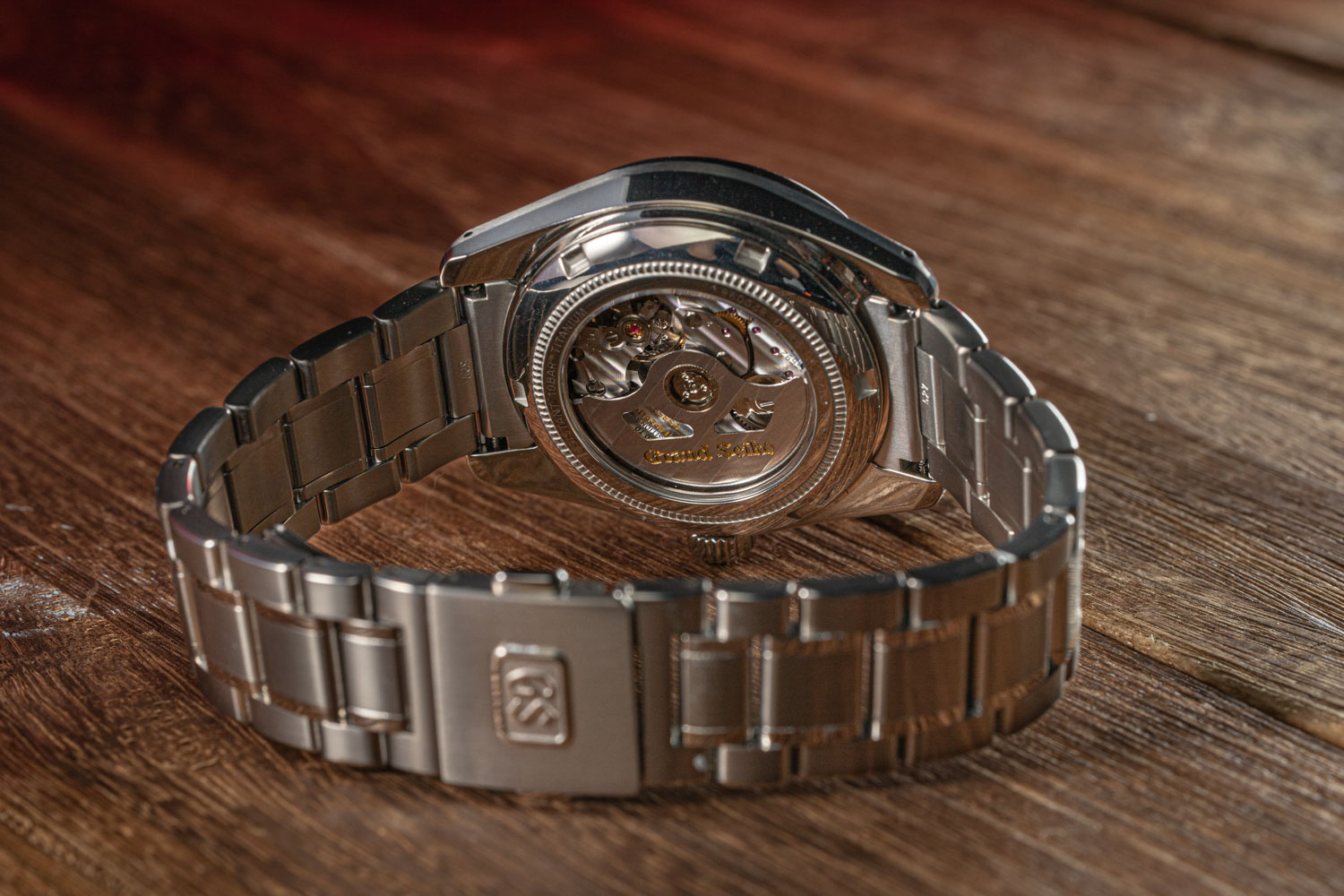
The bracelet on the Grand Seiko Hi-Beat SBGH245G is constructed in the brand's High Impact Titanium as well; the watch is powered by the 9S85 Hi-Beat movement (©Revolution)
The dial of the SBGH245G is one of the most stunning I’ve ever set eyes on. In certain light, it seems almost black until you walk into direct sunlight and it literally explodes into colour. It features a sunray finish that creates an almost constant lightshow on the wrist when outdoors and is a hue that is mid-way between brown and burgundy. Indeed one of the reasons I love it so much is the dial reminds me of the amber halo that appears at the edge of the glass on older wines and, which I’ve never seen replicated in colour before in any other object.
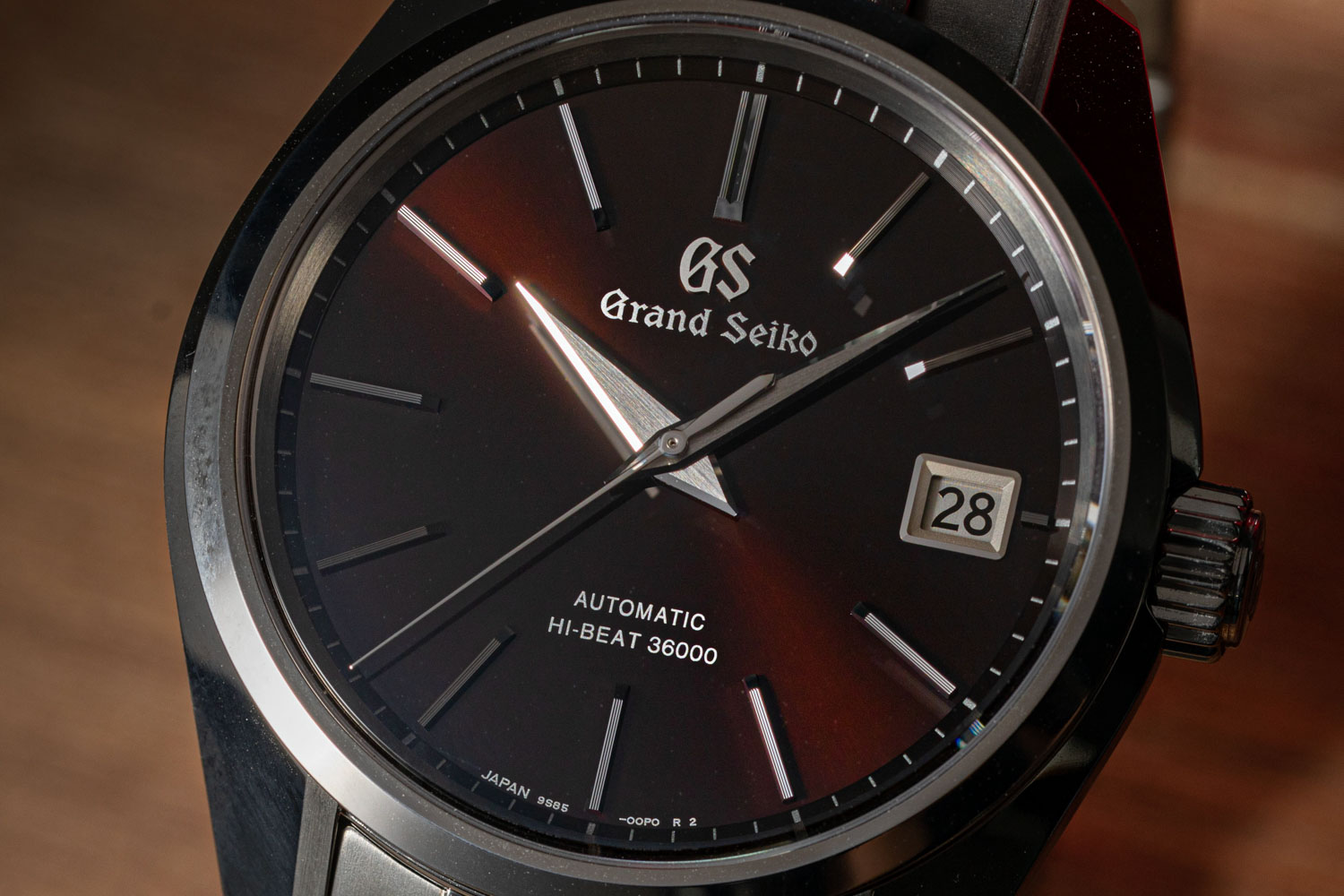
The Grand Seiko Hi-Beat SBGH245G with a sunray finish dial that creates an almost constant lightshow on the wrist when outdoors and is a hue that is mid-way between brown and burgundy (©Revolution)
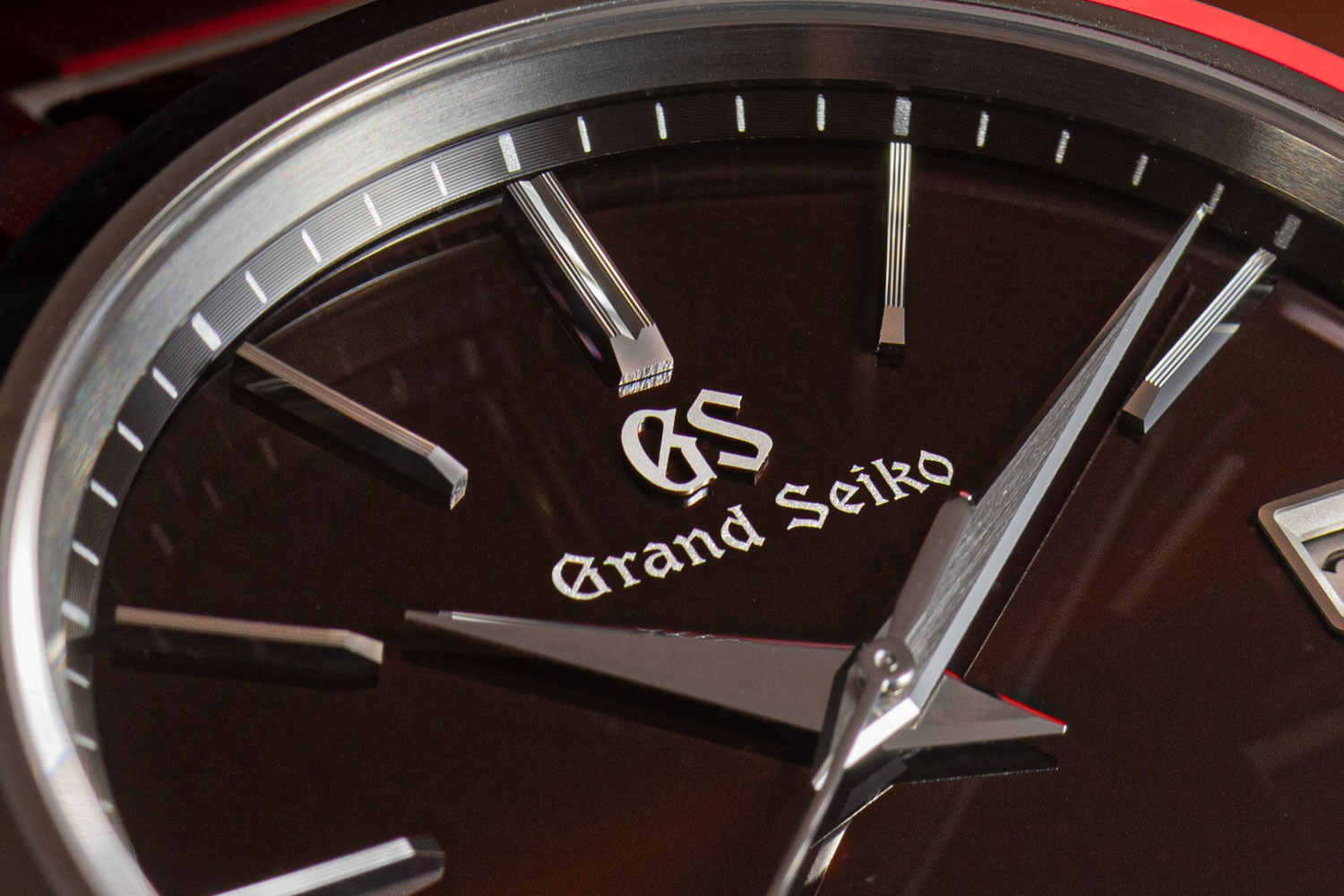
The Grand Seiko Hi-Beat SBGH245G with a sunray finish dial that creates an almost constant lightshow on the wrist when outdoors and is a hue that is mid-way between brown and burgundy (©Revolution)
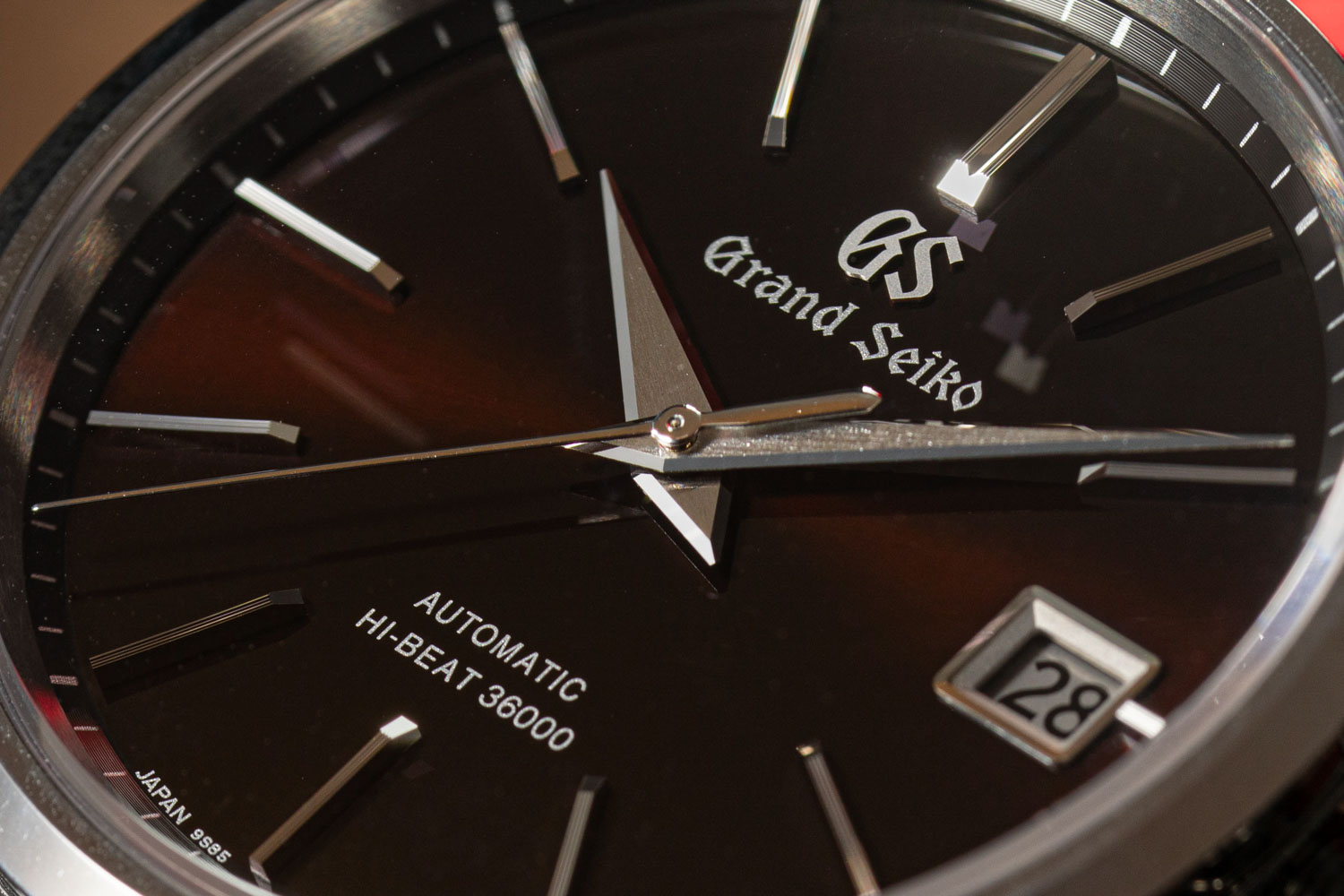
The Grand Seiko Hi-Beat SBGH245G with a sunray finish dial that creates an almost constant lightshow on the wrist when outdoors and is a hue that is mid-way between brown and burgundy (©Revolution)
To me the most collectable Grand Seiko watches are those with pattern dials and this watch has one of the most compelling, with what feels like monochrome impressionist brush strokes radiating from the center of the dial that as always evokes the winter snow in Nagano Prefecture. But on top of this all the SBGJ features a GMT indicator in the form of a 24 hour home time scale, delicately printed at the perimeter of the dial and read off a flame blued arrow tipped hand. The addition of this ultra-pragmatic function does nothing to disrupt the calm and tranquil appearance of the watch.
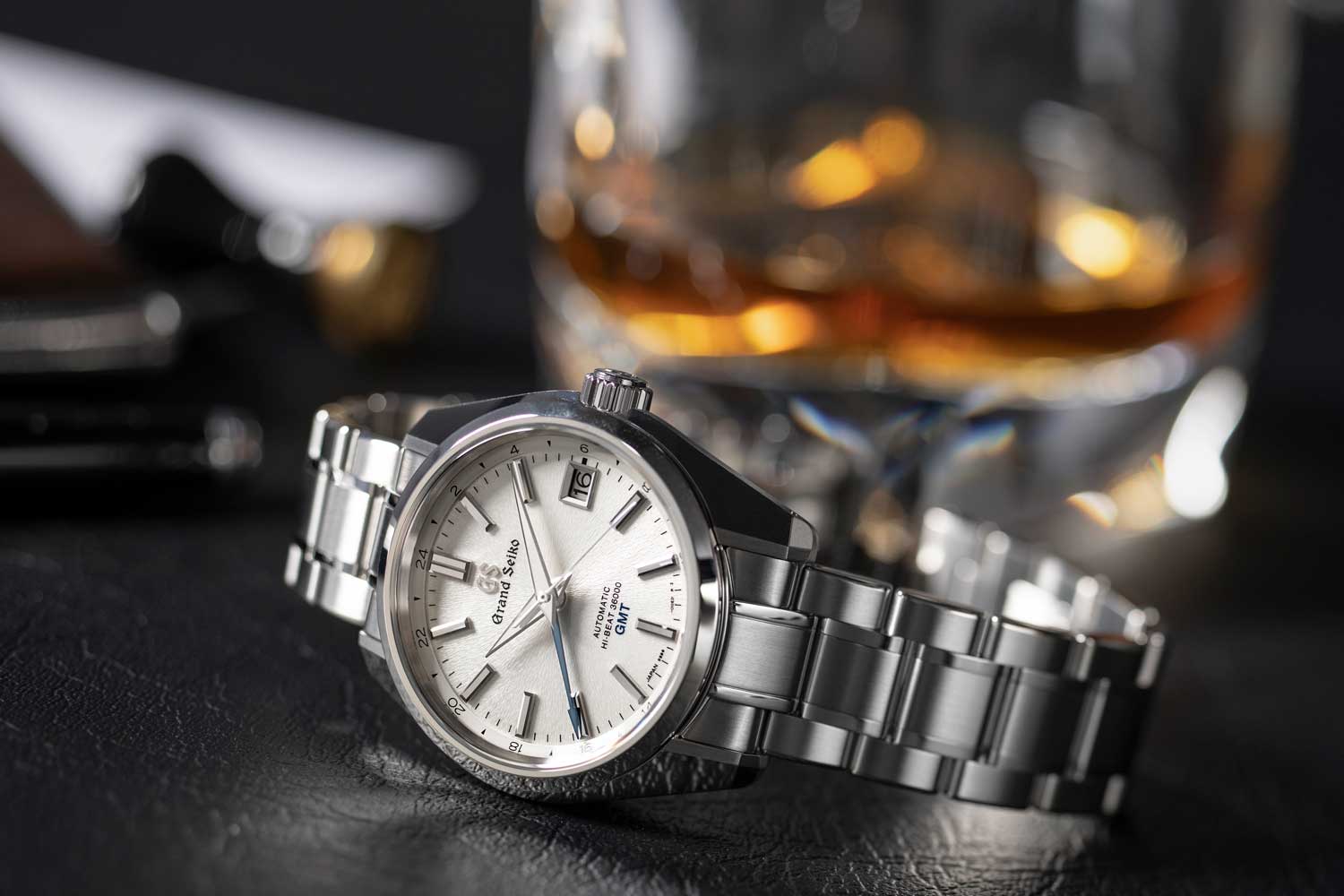
The Grand Seiko Hi-Beat SBGJ201 is one of the most perfect and compelling performance packages in contemporary horology (©Revolution)
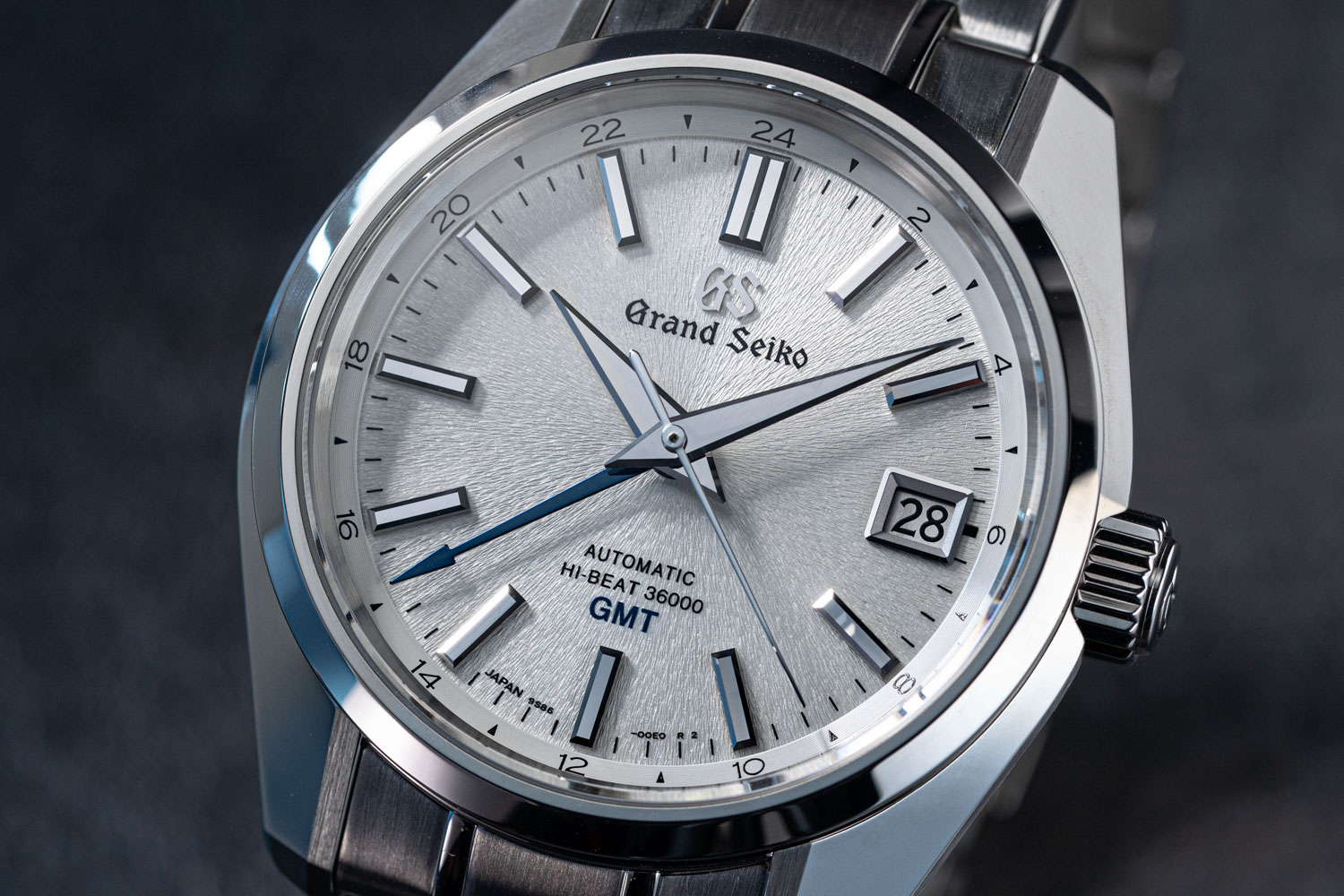
The dial of the Grand Seiko Hi-Beat SBGJ201 feels like monochrome impressionist brush strokes radiating from the center of the dial that as always evokes the winter snow in Nagano Prefecture (©Revolution)
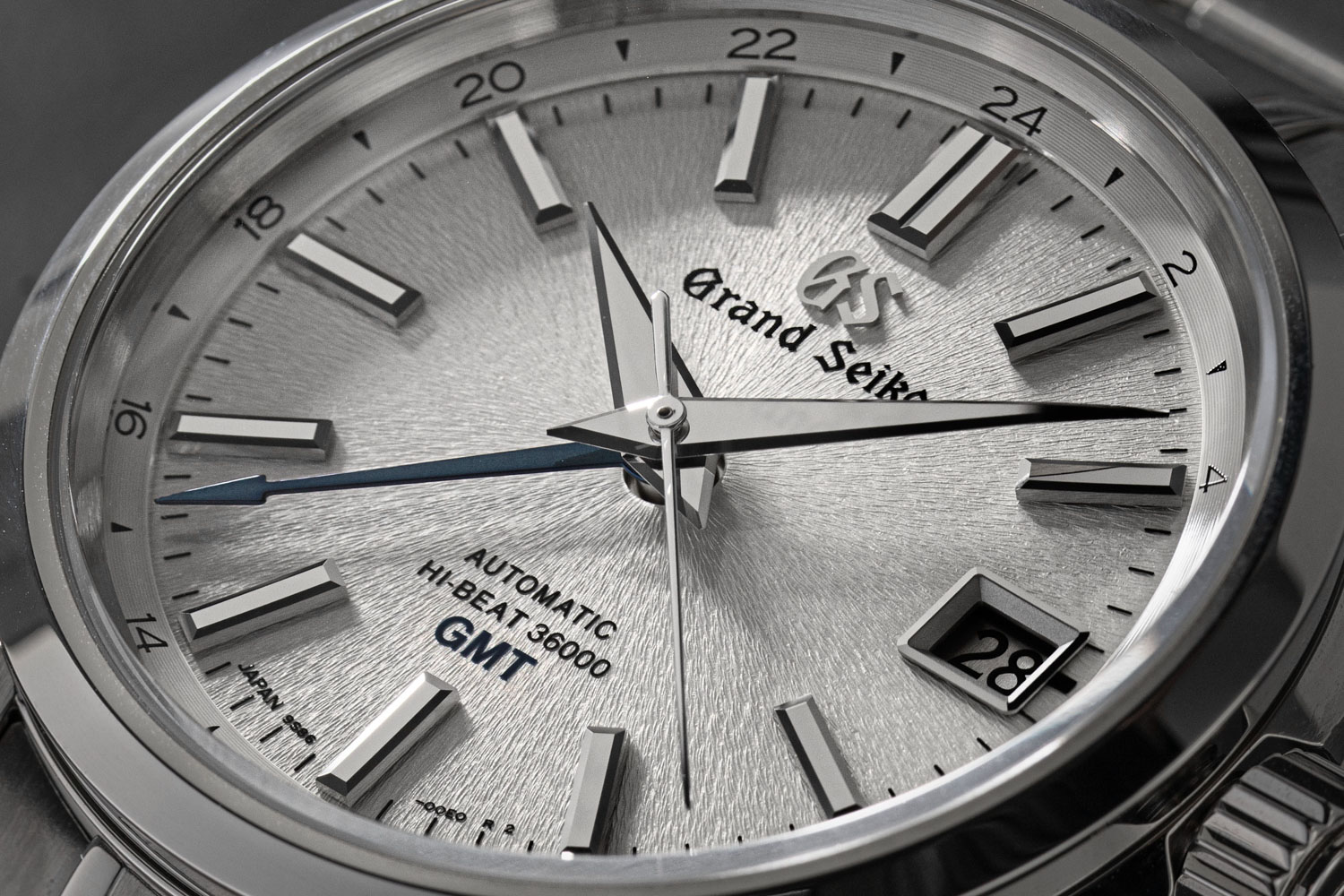
The Grand Seiko Hi-Beat SBGJ201 features a GMT indicator in the form of a 24 hour home time scale, delicately printed at the perimeter of the dial and read off a flame blued arrow tipped hand (©Revolution)
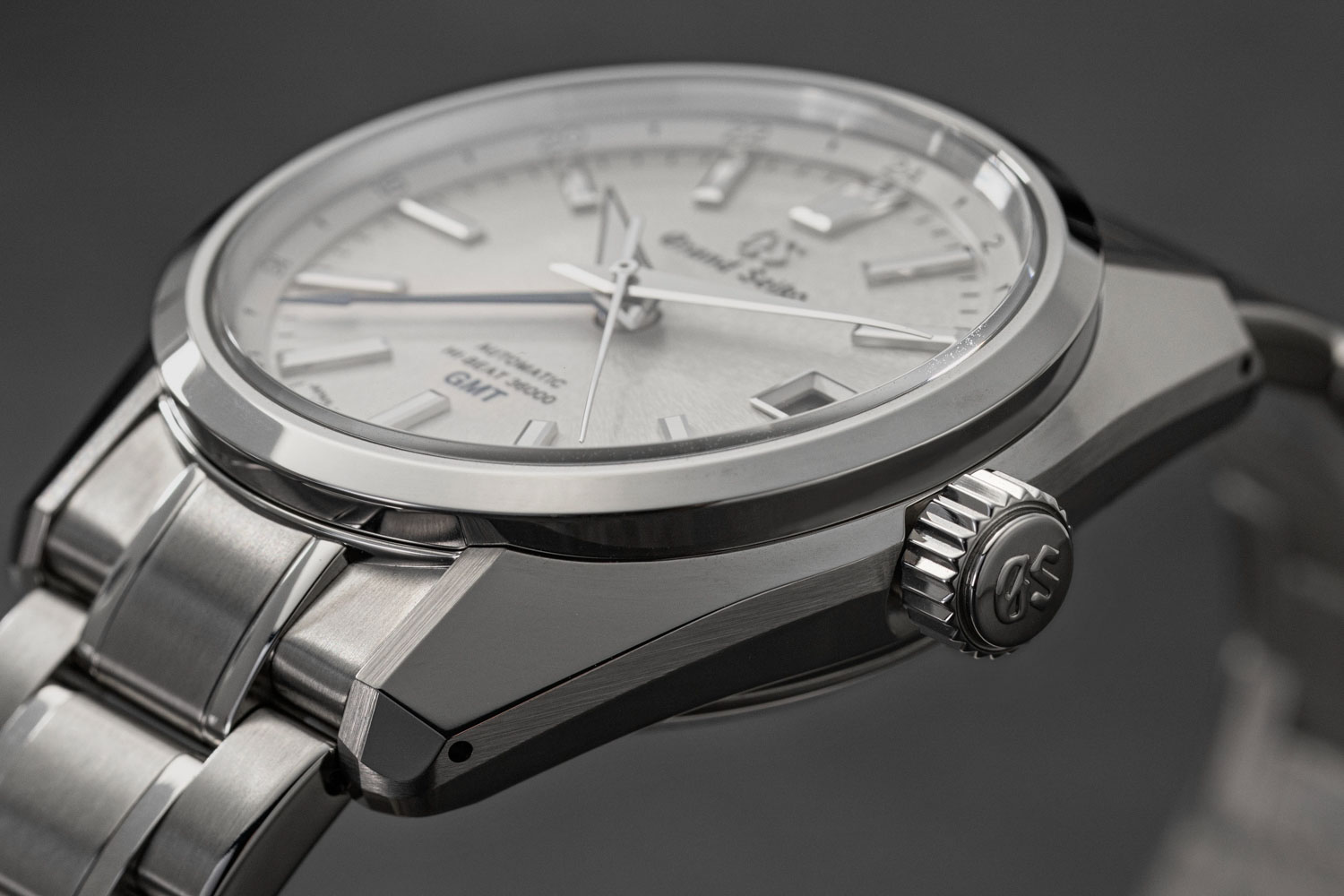
The case of the Grand Seiko Hi-Beat SBGJ201 features the sharp angular facets and knife edge caseband; case and bracelet are crafted in steel adding a touch more heft to the experience on the wrist but still evincing the exquisite Zaratsu finish with perfect mirror polishing (©Revolution)
Introduced in 2009, the 9S85 was one the most innovative movements the world had ever known. First it represented a return of Grand Seiko to the Hi-Beat movements. At 36,000vph, making it one of only three 5Hz automatic movements around (the other two are Zenith’s El Primero, while De Bethune makes a 5Hz tourbillon). The movement’s mainspring was crafted from SPRON, a new material that allows they are three times as resistant to magnetism and twice as impact resistant as its predecessor, and featured 55 hours of power reserve but beyond being a pure technical marvel, the 9S85 was also one of the most sublimely finished movements around thanks to Grand Seiko’s slavish devotion to the perfection of decoration.
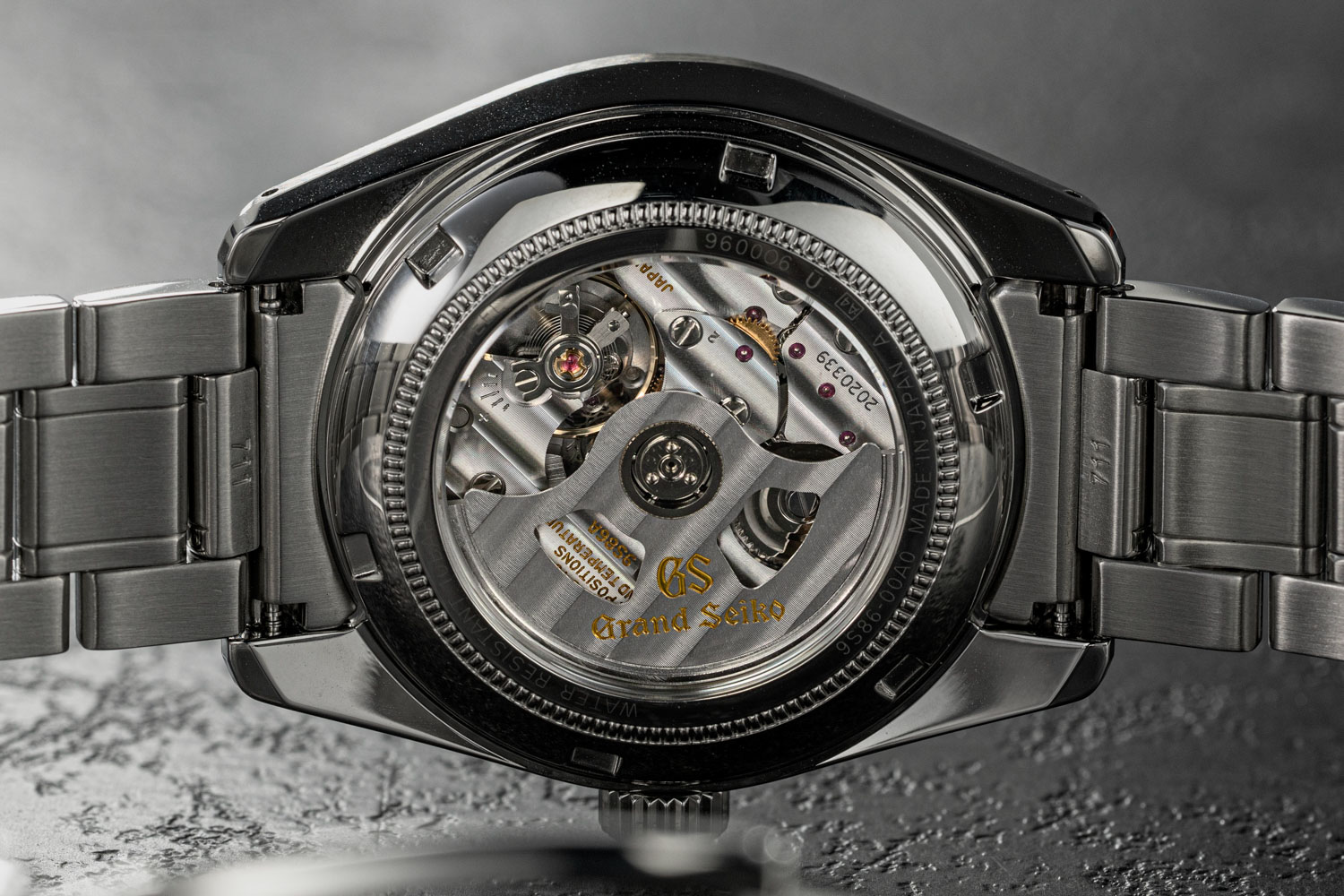
The Grand Seiko Hi-Beat SBGJ201 is powered by the 9S86, essentially the GMT variation of the 9S85, a sublimely finished movement thanks to Grand Seiko’s slavish devotion to the perfection of decoration (©Revolution)
The Spring Drive Calibres
OK, now for Grand Seiko’s Spring Drive movement. Let’s jump back to the late ’60s again where sadly the watch world’s experiments with high-frequency movements disappeared, thanks to the advent and popularity of the quartz watch, which ironically began with the launch of the Seiko Astron in 1969.
Indeed, all Grand Seiko production was halted from 1975 to 1988 because of what in Switzerland was called the Quartz Crisis, but in Japan was known as the Quartz Revolution. So, what’s a quartz watch?
It’s a watch where the balance wheel has been replaced by a quartz crystal. When you send an electrical pulse through it, it oscillates at 32,768vps meaning that it is a massive order of magnitude more accurate than a mechanical watch. Or at least it should be — let’s go back to the 1968 Geneva Observatory trials again.
Interestingly, it was the Swiss and not the Japanese that first pioneered quartz technology with the unveiling of the prototype Beta 1, the first analogue quartz watch, in 1967. However, it was the Japanese, namely Seiko, that beat the Swiss to market with the 1969 Astron. Quartz watches had one weakness in that they consumed electric energy provided by batteries, and these batteries had to be replaced at regular intervals. In addition, their seconds hands marched forward imperviously but inelegantly every second on the second, which is something that appeals to some but not to others.
Amusingly, Rolex had created a mechanical watch called the Tru-Beat in the 1950s, with a traditional Swiss complication known as the deadbeat that allows the seconds hand in a mechanical watch to advance only once per second, instead of sweep across the dial. However, only small quantities of this watch were produced and sold, and the line was discontinued after five years.

Yoshikazu Akahane, the gentleman who first imagined high precision of mechanical watches (Image: Grand Seiko)
So, the Spring Drive has been described in picturesque science fiction terms as a cybernetic organism; human flesh covering a robotic skeleton and powered by a computer brain. But it’s anything but. In fact, lovers of mechanical watchmaking will be intrigued by the fact that a Grand Seiko Spring Drive movement, up until the very last wheel in the going train, is identical to a mechanical movement.
On top of that, when combined with Seiko’s ultra-efficient “Magic Lever” automatic-winding system, or executed with the most staggeringly beautiful hand bevels and internal angles — as evidenced by the calibre 9R02 found in the SBGZ001, last year’s tribute to the 20th anniversary of the Spring Drive replete with hand-engraved case and dial — it is a magnificent movement. So how exactly does it work? Power is stored in a traditional barrel and then transmitted across a traditional gear train. But where you would normally find the escapement wheel, Swiss anchor and balance wheel in 99 percent of the watches in the world, you get what Seiko calls its “Tri-Synchro” regulator.
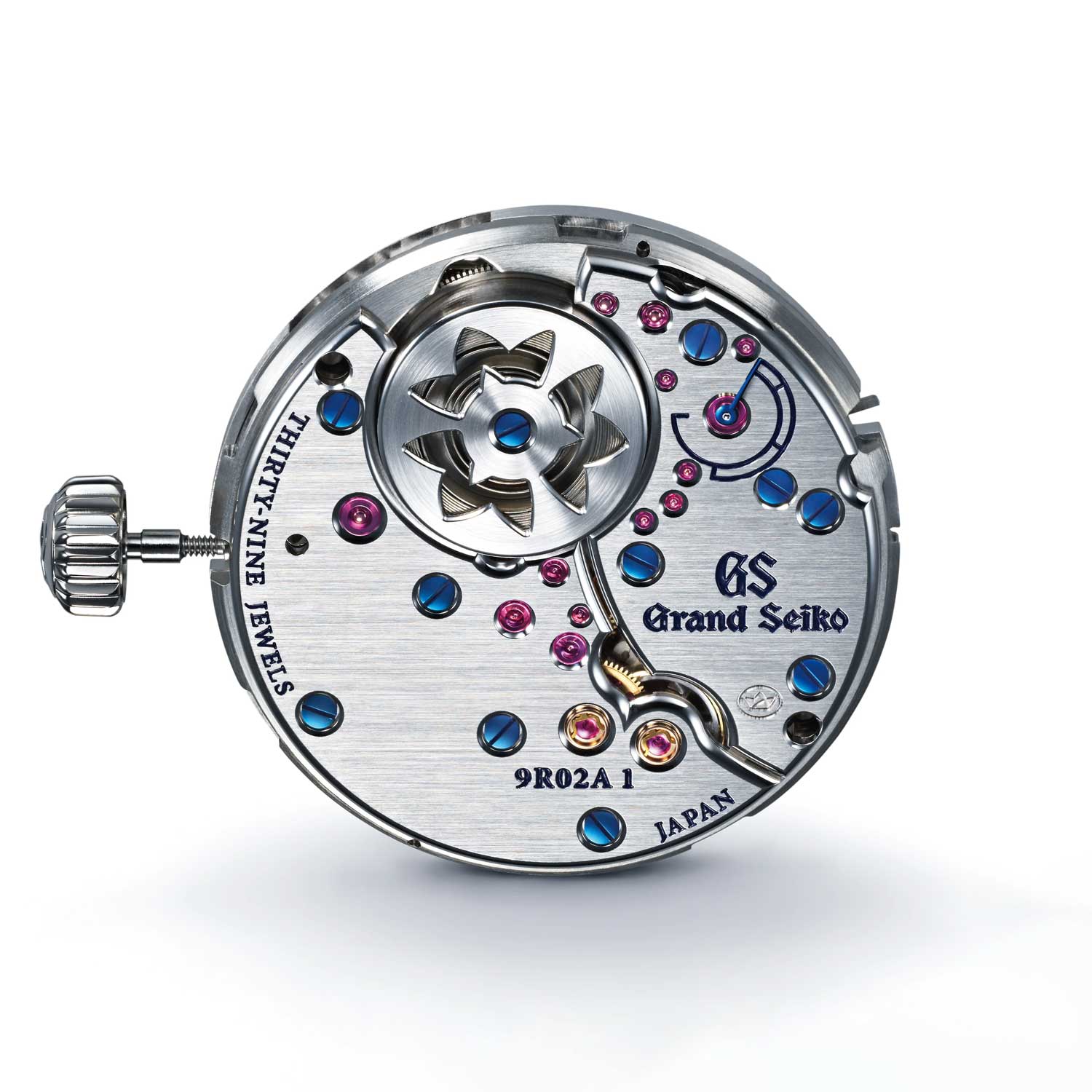
Manual 3.5-Day Spring Drive Caliber 9R02 powering the 2019 Grand Seiko 20th Anniversary Of Spring Drive, in platinum - limited to 30 pieces - ref. SBGZ001 (Image: Grand Seiko)
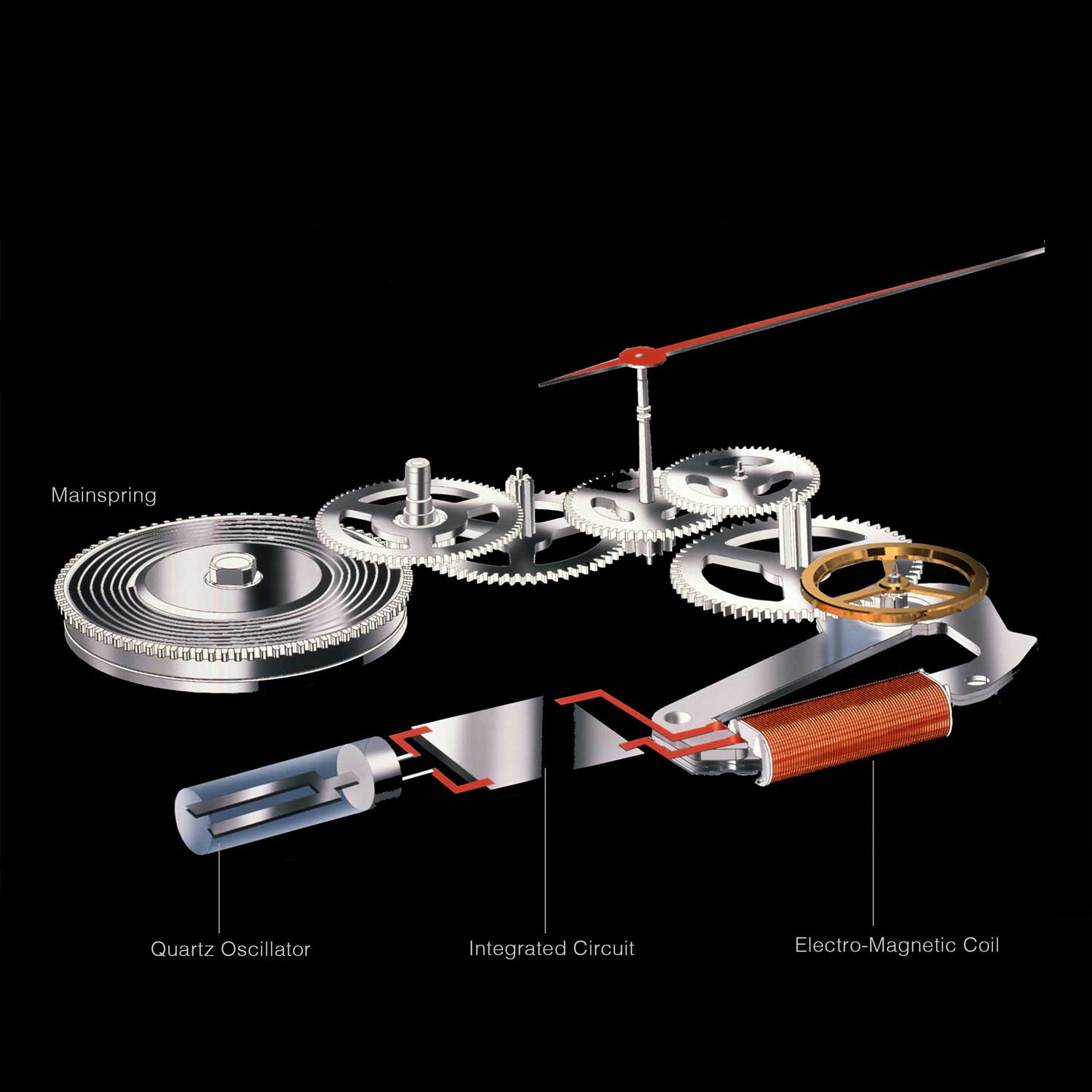
There are 3 main parts in a Tri Synchro Regulator:Quartz Oscillator - generate the frequencyIntegrated Circuit - calculate the time from the frequency and control the electric currect to pass through the electro-magnetic coilGlide Wheel - this wheel, which is controled by the electro-magnetic coil, connect the Tri-synchro regulator with the traditional wheel train and turns 8 times per second
OK, this is how it works: The last wheel on the train is the all-important glide wheel. This turns between two magnets that are attached to a coil. Magnetic energy is transformed into electrical energy by the coil. This energy is sent to an integrated circuit and a quartz oscillator. The integrated circuit counts the number of oscillations made by the quartz crystal and sends energy back to the electromagnets, which in turn exert a magnetic braking force on the glide wheel.
In this way time is kept, meaning that the mainspring unwinds in a steady and consistent way even as energy diminishes. You can see the advantages of the Spring Drive. It is impervious to magnetic influence, it is shock resistant to the extreme, and in its newest iteration, the calibre 9RA5, it features for the first time its own thermal compensation.
It is, in a word, infallible. And in addition to this, because the central seconds hand on the dial is being driven by a smooth consistent source of energy rather than small pulses of energy, it is able to float effortlessly and consistently gliding around the circumference of the dial with almost transcendent equanimity and poise. Think Barry White sipping on Hennessey, wearing sunglasses and silk pyjamas levels of smooth.
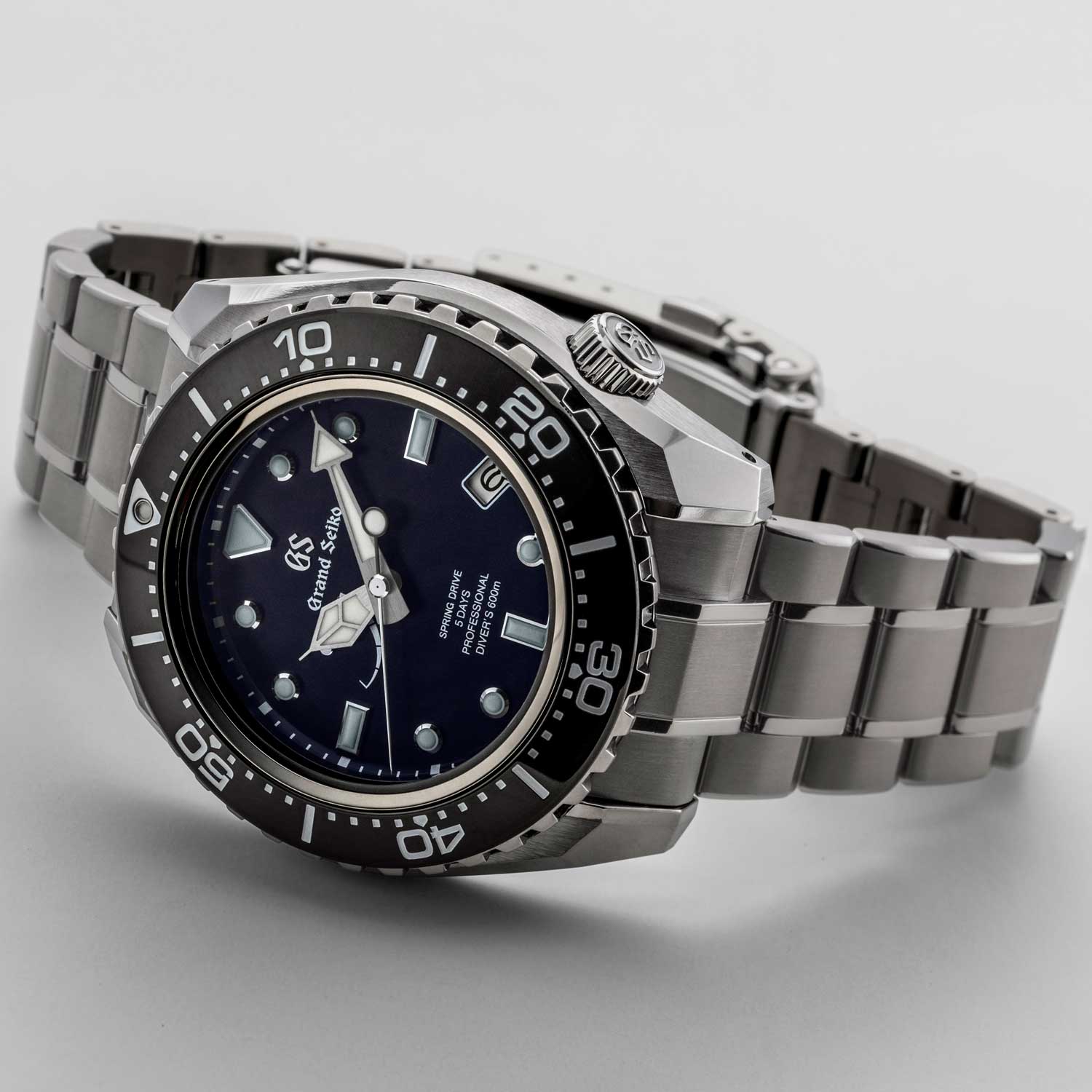
60th Anniversary Limited Edition Professional Diver’s 600M SLGA001 powered by the 2020 Spring Drive 5 Days Caliber 9RA5 (Image © Revolution)
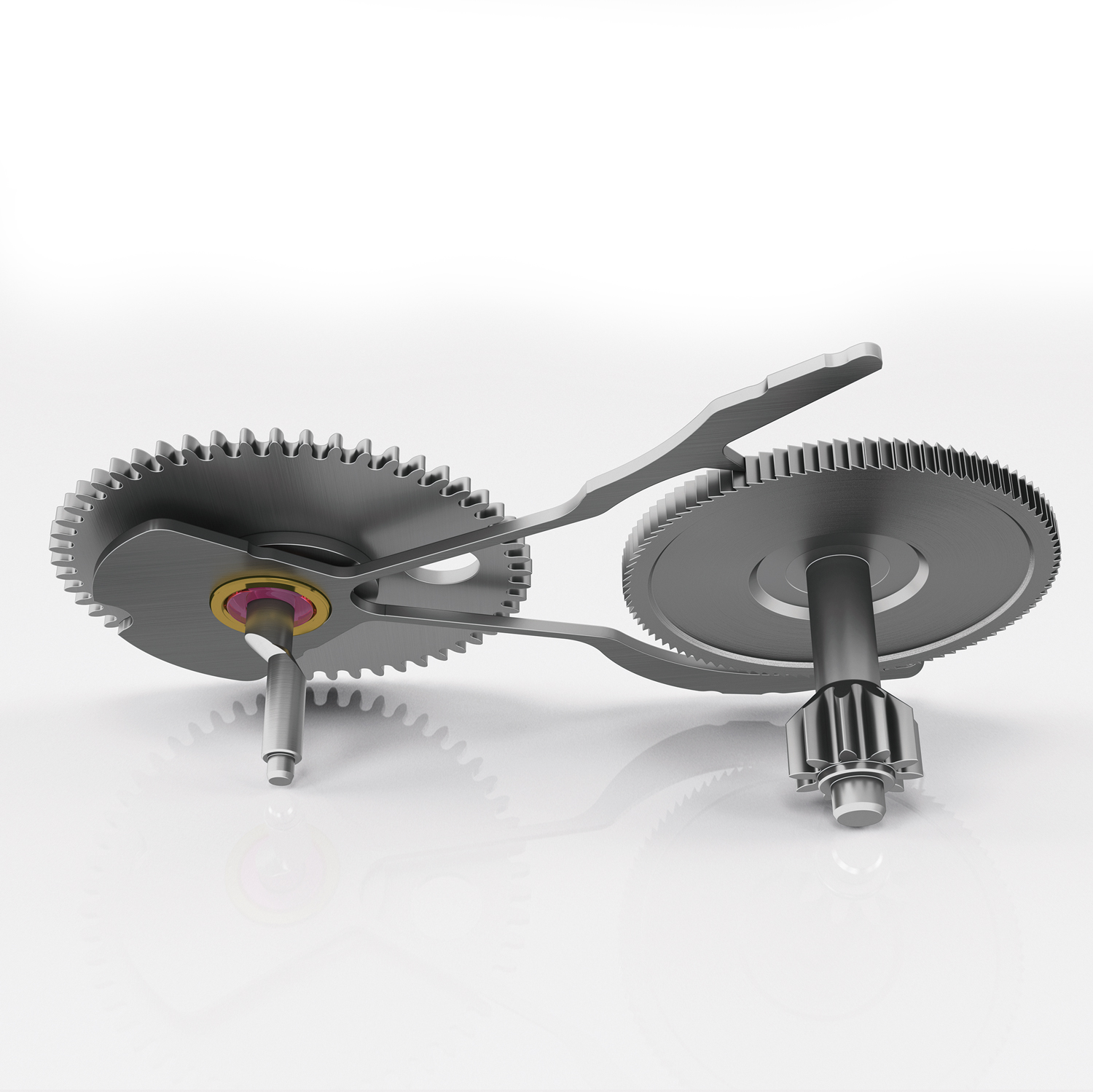
The “Offset Magic Lever” allows a reduction in the movement’s depth with the same high winding efficiency for the 2020 Spring Drive 5 Days Caliber 9RA5 (Image: Grand Seiko)
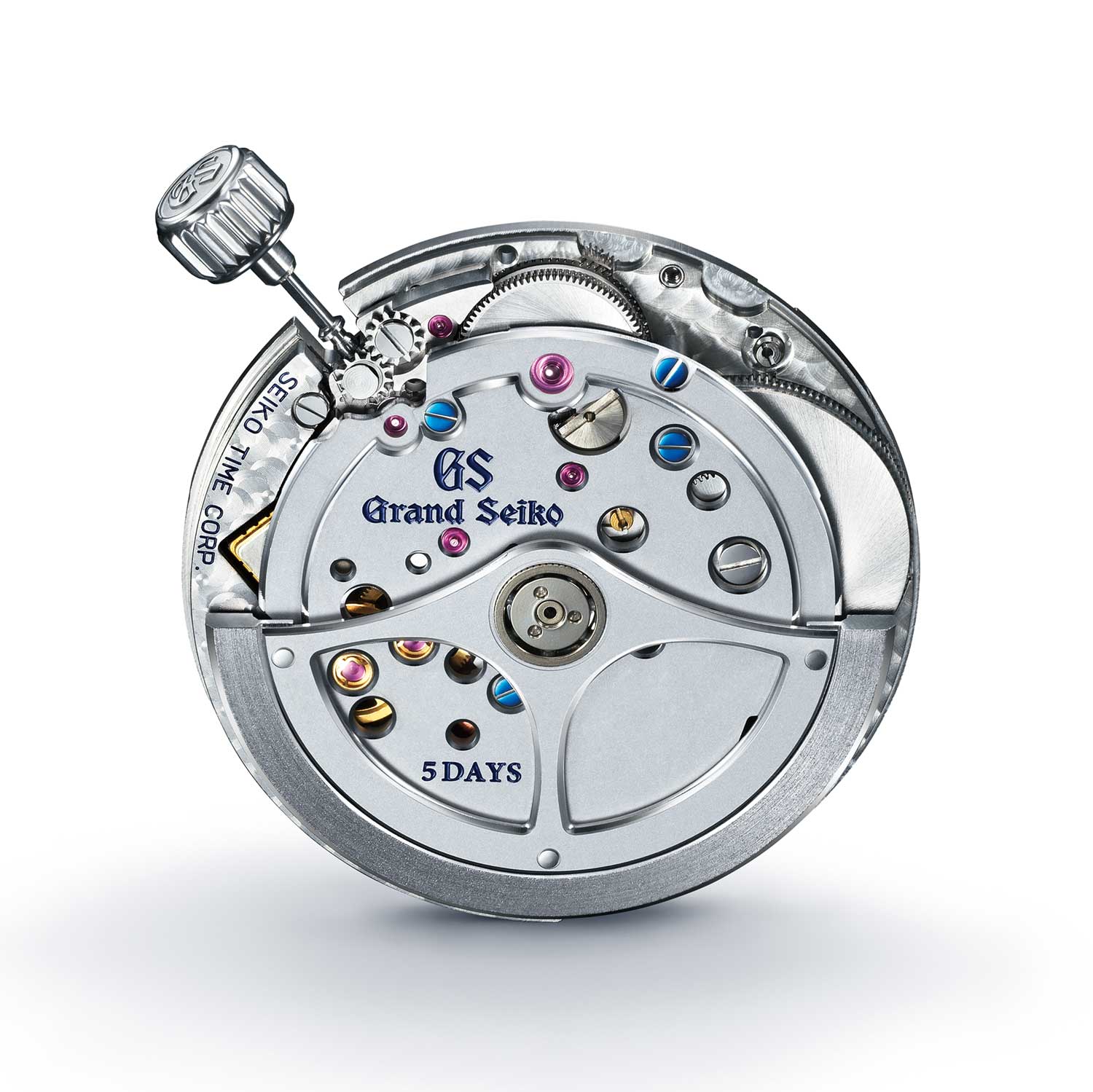
2020 Spring Drive 5 Days Caliber 9RA5 with new baseplate and thermos compensator powering the all new 60th Anniversary Limited Edition Professional Diver’s 600M (Image: Grand Seiko)
The Spring Drive 20th Anniversary Limited Edition SBGZ001
OK, this is embarrassing to admit, but for the better half of the last decade, I’ve badly needed multi-focal or bifocal glasses. Yes, the ones that the old guys need to wear. Because I am an old guy. I always joke that the day you can afford a Patek perpetual calendar is the day you will struggle to read it. But it’s true. My already myopic eyesight had gone straight to hell. So much so that I was eventually compelled to swallow my pride, sublimate my vanity and go get a pair of “old man glasses”. Once I got used to the at-first eerie floating sensation they caused, it suddenly gave me a new lease on life. I could enjoy reading again.
Pleased with myself, I rocked up to the Basel fair last year to my appointment at the Grand Seiko booth with the wonderful David Edwards, the brand’s head honcho in the UK. And he placed a watch in front of me that absolutely blew my mind. That was the aforementioned Micro Artist Studio-engraved, platinum, manual-wind, 20th anniversary Spring Drive 30-piece limited-edition watch: the SBGZ001.
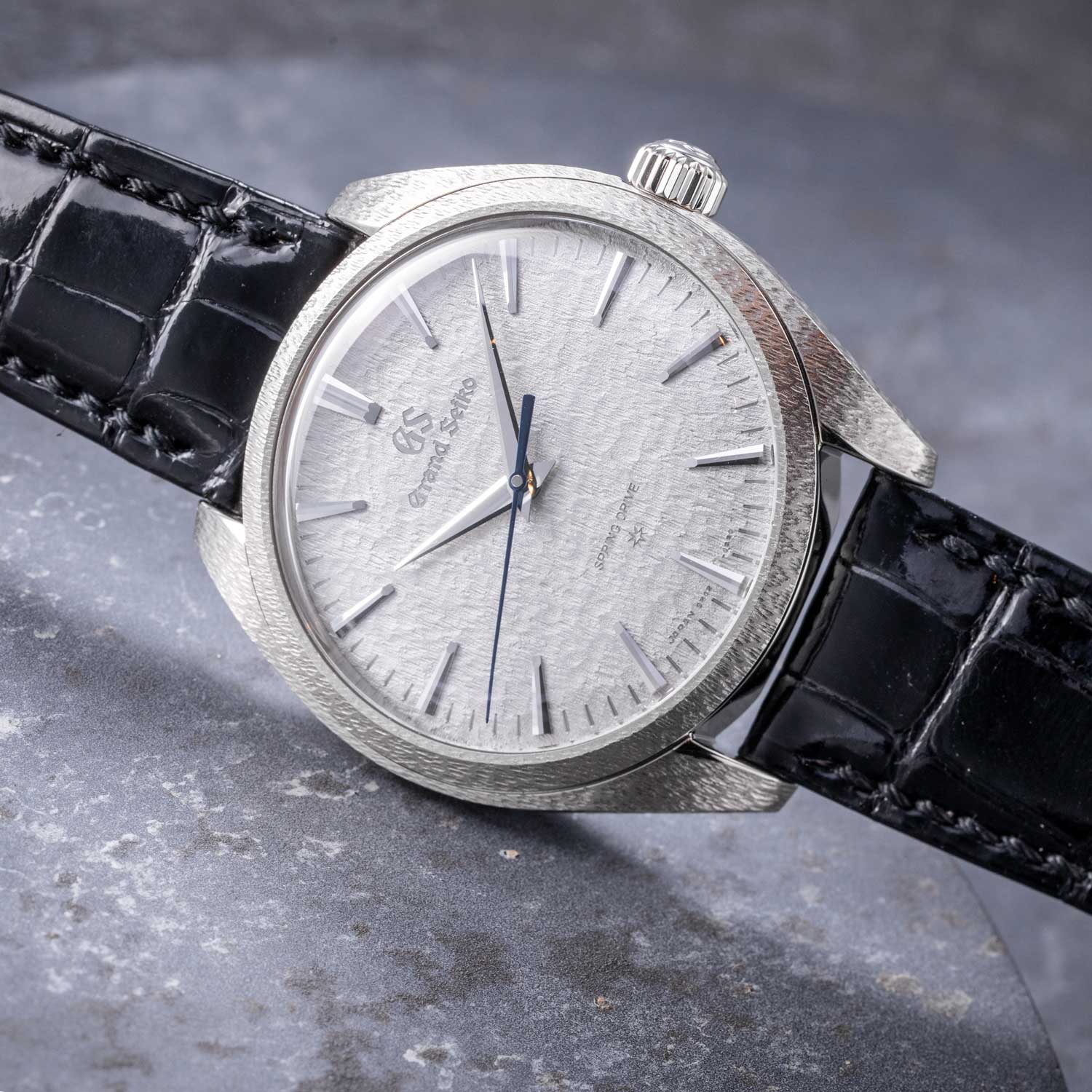
The 2019 Grand Seiko 20th Anniversary Of Spring Drive, in platinum - limited to 30 pieces - ref. SBGZ001 (Image © Revolution)
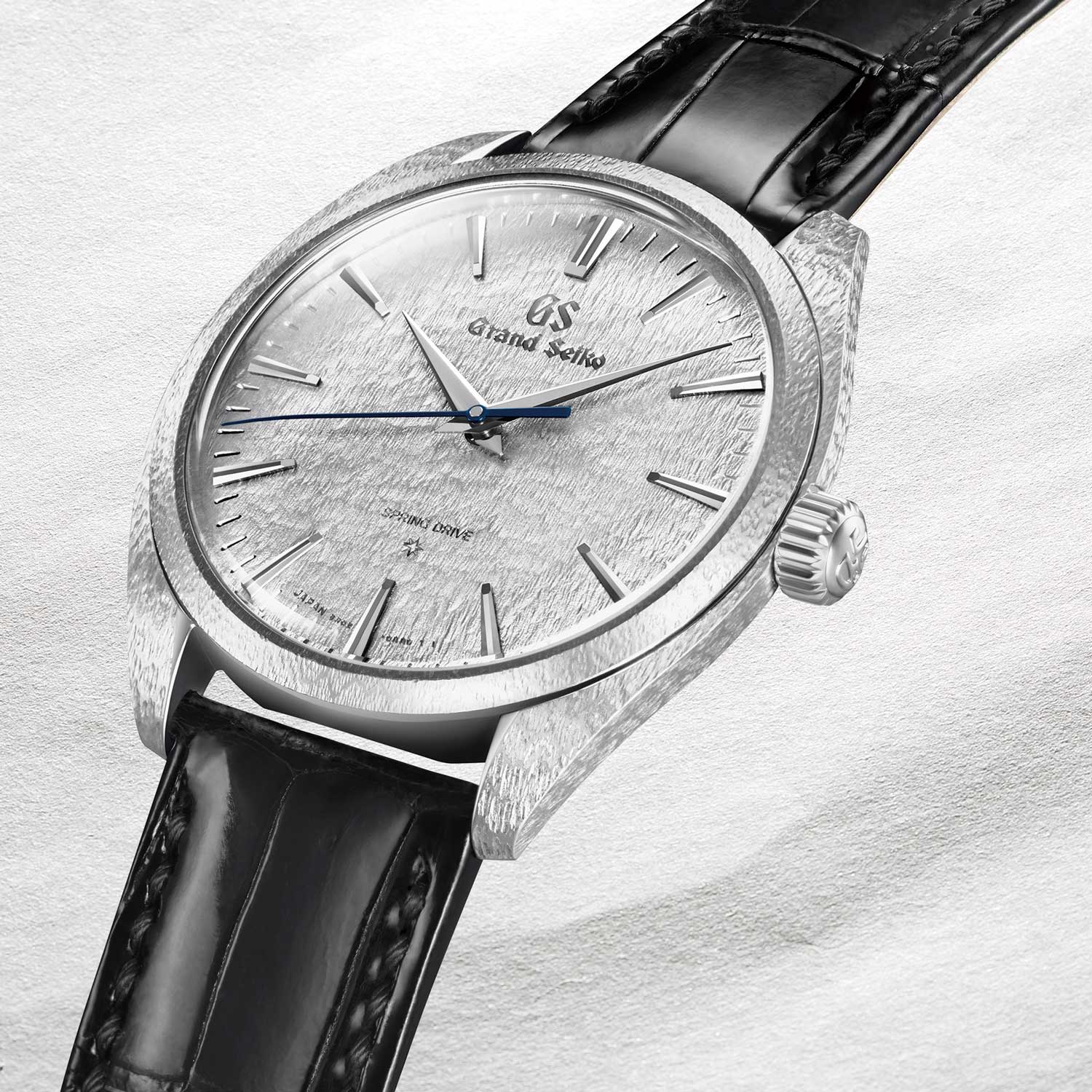
The 2019 Grand Seiko 20th Anniversary Of Spring Drive, in platinum - limited to 30 pieces - ref. SBGZ001 (Image: Grand Seiko)
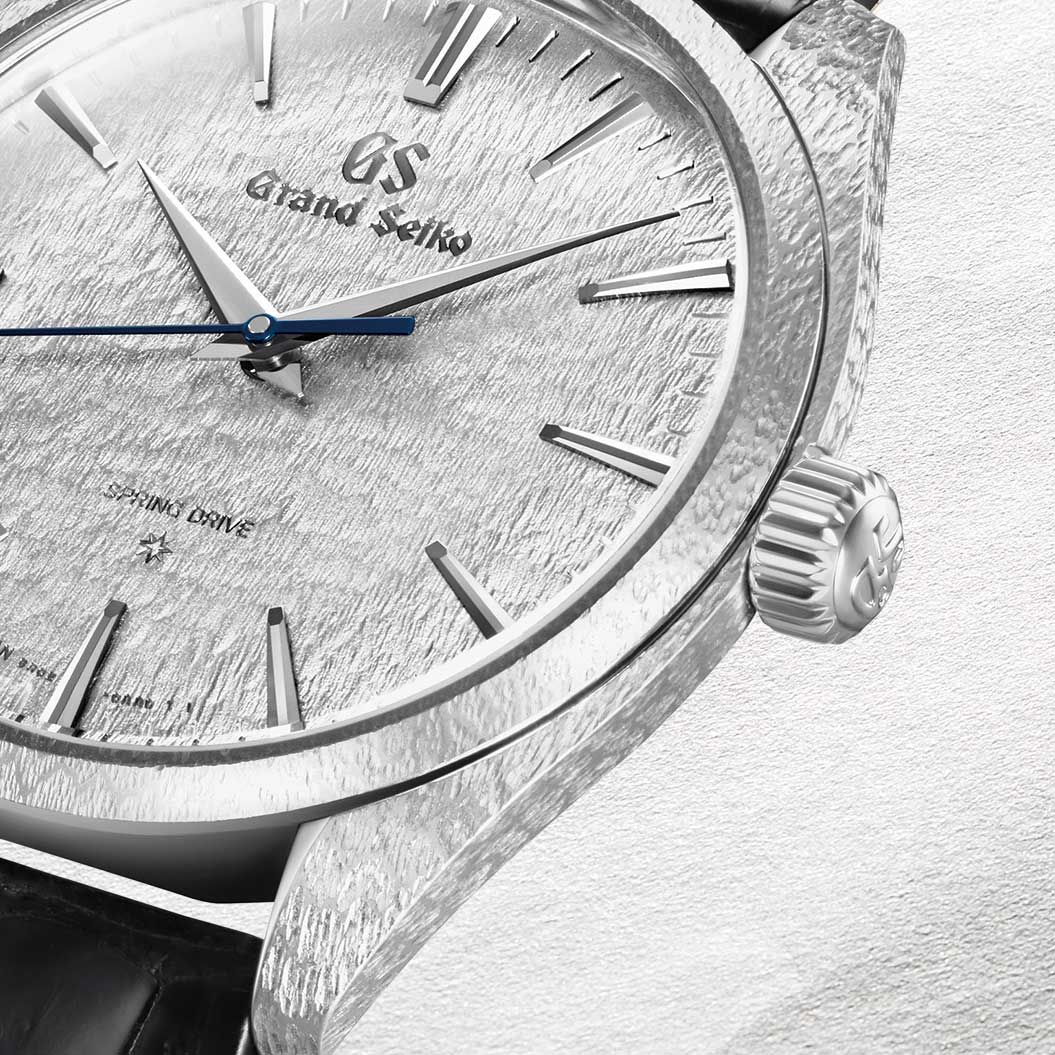
Closer look at the case side of the 2019 Grand Seiko 20th Anniversary Of Spring Drive, in platinum - limited to 30 pieces - ref. SBGZ001 (Image: Grand Seiko)
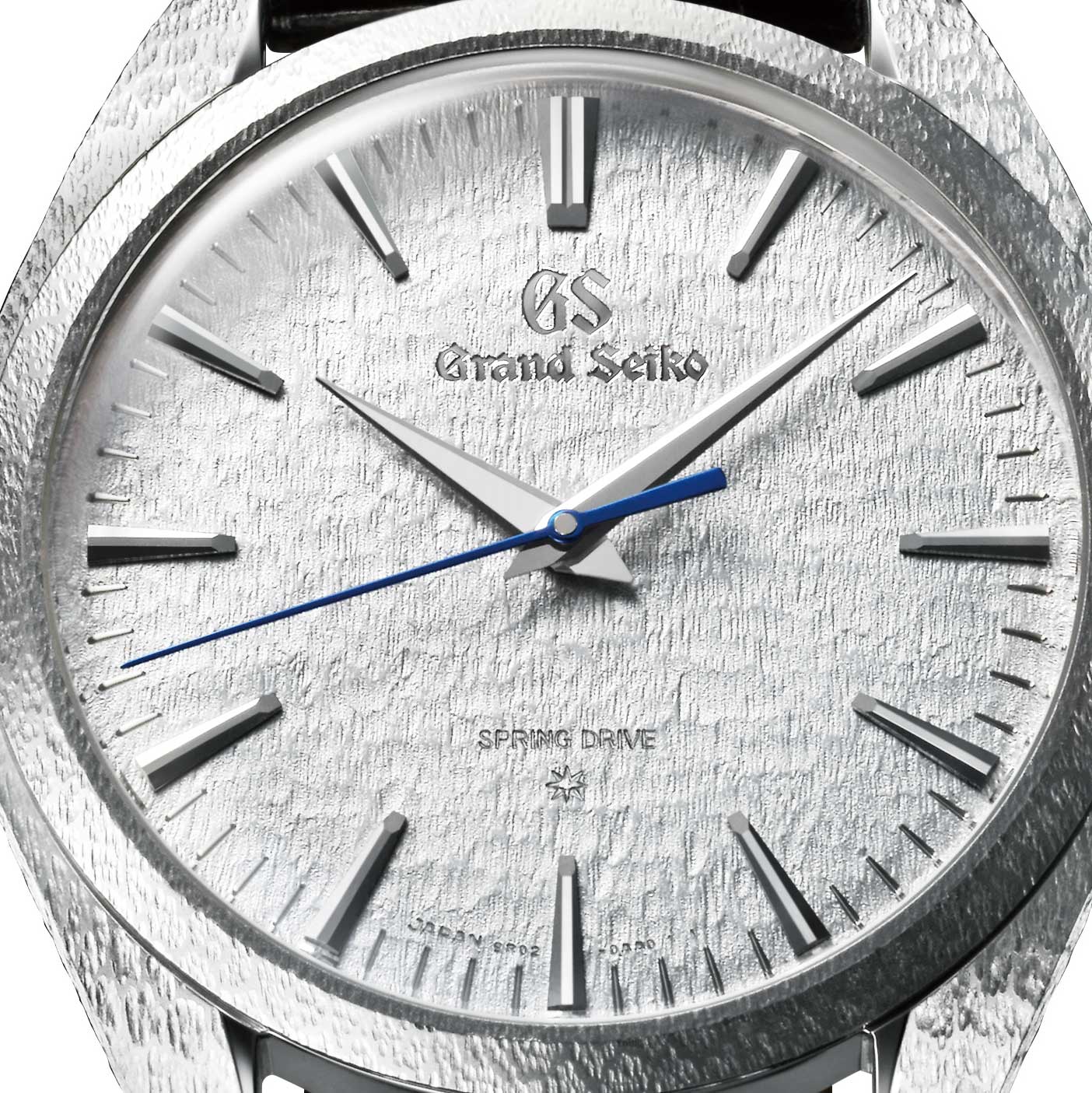
Closer look at the dial of the 2019 Grand Seiko 20th Anniversary Of Spring Drive, in platinum - limited to 30 pieces - ref. SBGZ001 (Image: Grand Seiko)
As David explained the ethos of Grand Seiko’s Zaratsu finishing, the mirror polishing that creates beyond perfect reflection of light, I exclaimed, “OK, but this is a 73,000 US dollar watch! Surely this doesn’t apply to the more accessibly priced watches?”
David promptly took off his own watch and I saw all of this perfection, on the polishing of the bezels, on the lugs, even on the frame for the date and details in the bracelet, staring back at me, expressed with such immaculate quality that I almost could not breathe.
I started grabbing watch after watch, examining them under a loupe and each watch would literally resonate with this feverish devotion to quality. Add this to the awe I already possessed for the Spring Drive and I found myself automatically reaching into my wallet and committing to the platinum SBGZ001 until it dawned on me… I didn’t have even one-tenth of the asking price to spare. At that point, I began to despondently curse my ultra-sharp new spectacles that revealed to me a watch of such beauty and perfection, only to have me realise that it was beyond the fragile limits of my bank account. What I found so appealing was the calm, mesmerising, mediational effect of the engraved surface and dial that was meant to replicate the surface of the snow reflected in the moonlight in Nagano. I commiserated with David and he replied, “Have you thought about a ‘Snowflake’?”
To which I idiotically replied, “What’s a ‘Snowflake’?” He pointed to his watch which I had now placed on my wrist in the hopes I could stealthily make away with it without him noticing. I joke. But, only just. The SBGA211, or the Grand Seiko “Snowflake”, is a modern icon.
Our Spring Drive Grand Seiko Watch: the ‘Snowflake’ SBGA211
The Snowflake, or SBGA211, is one of the most recognizable modern watches in the world. It’s Spring Drive movement utilizes Grand Seiko’s famous Tri-Synchro regulator which comprises of a quartz oscillator, which regulates an electromagnetic brake that exerts force on a glide wheel, all driven by a mechanical mainspring. It is to my mind, it’s one of the single most important and revolutionary break throughs of all time, and it would be hard to consider anyone a real watch collector who doesn’t own a Grand Seiko Spring Drive watch.
It is also, to me, one of the most handsome watches around characterized by a dial that perfectly evokes the rippling and undulating surface of the snow surrounding Grand Seiko’s Artisan Studio, located in Nagano Prefecture. The history of the Snowflake goes like this.
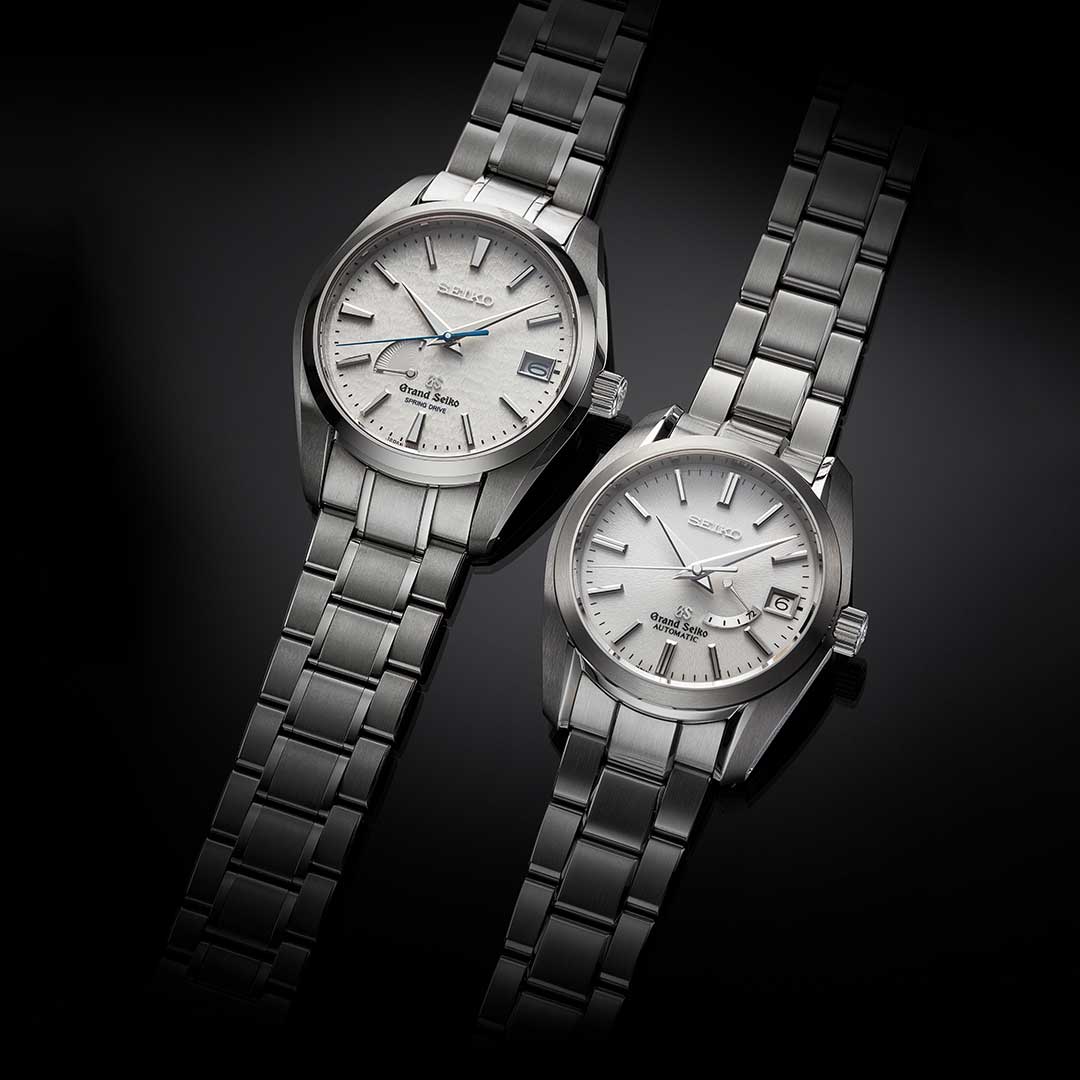
Left: Suwa Seikosha (now Seiko Epson) was the driver of quartz technology. It also perfected the Spring Drive movement in 1999. The photo shows SBGA011, the Spring Drive high-intensity titanium model released in 2005.Right: In 1998, Daini Seikosha (now Seiko Instruments) launched the 9S mechanical movement which immediately became the backbone of the Grand Seiko mechanical collection. The photo shows SBGL001, the first mechanical movement with a three-day power reserve.(Image: Grand Seiko)
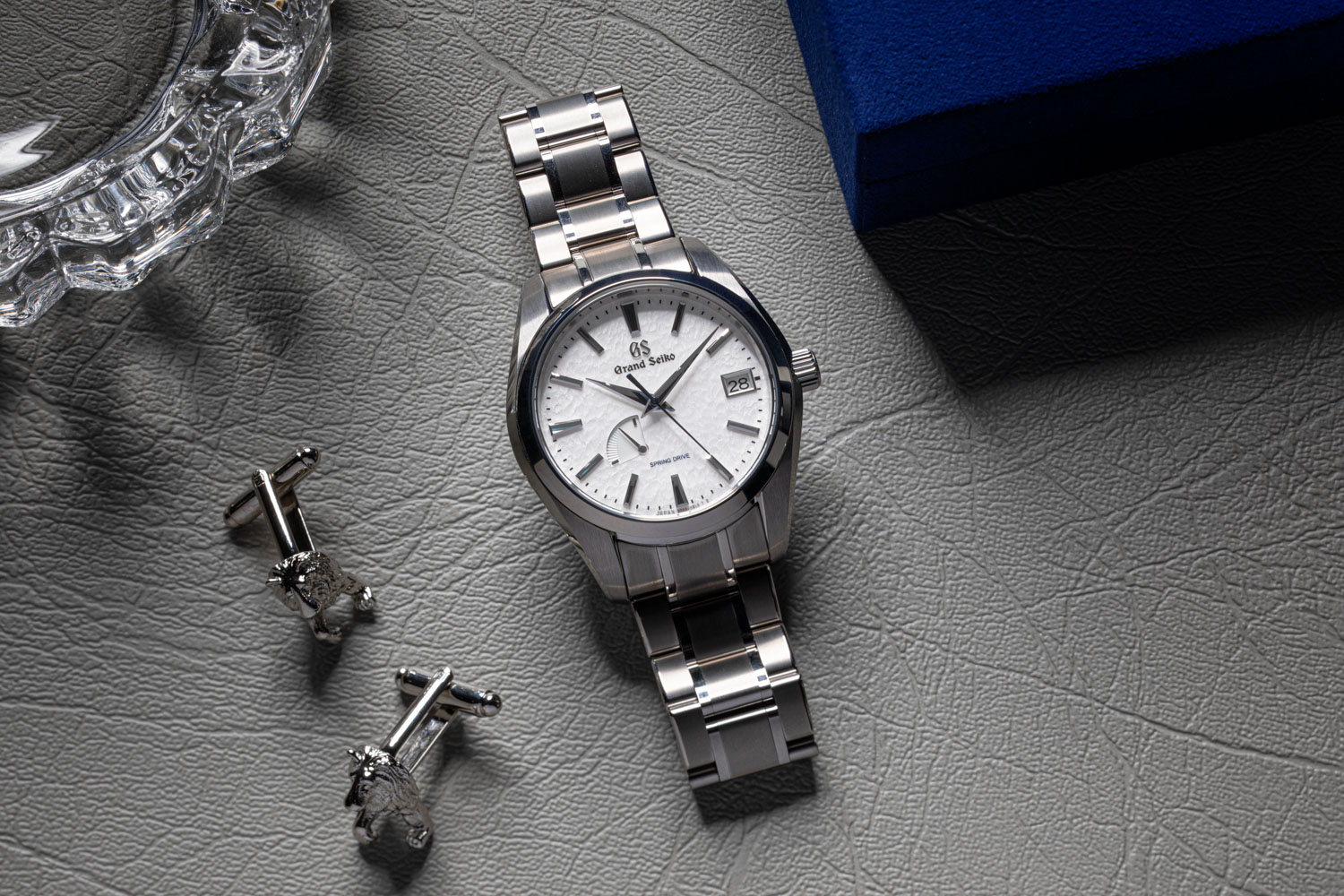
The highly sought after, Grand Seiko ‘Snowflake’ SBGA211 (©Revolution)
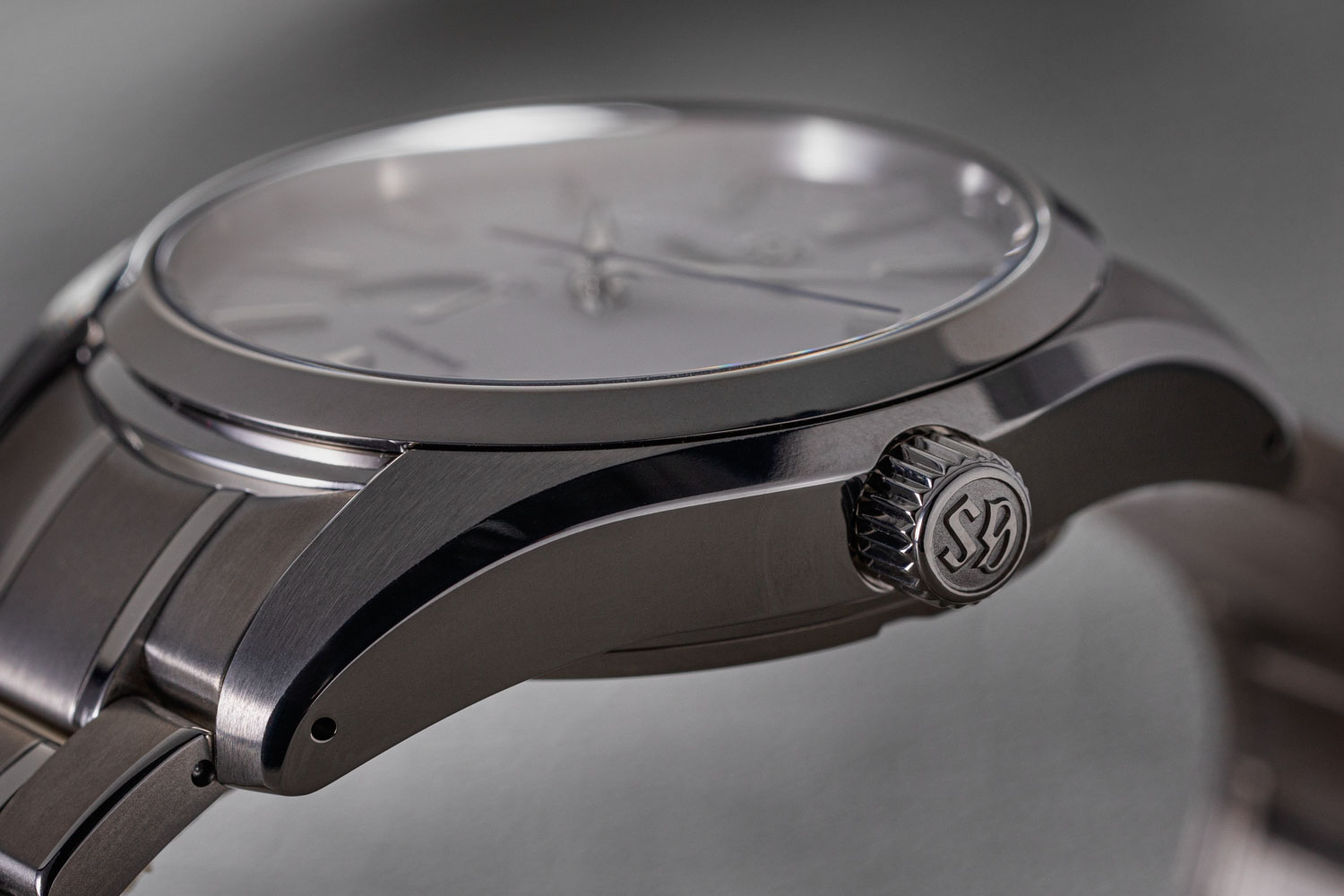
Grand Seiko ‘Snowflake’ SBGA211 is made in the brand's high-intensity titanium and finished to their exacting standards (©Revolution)
Amusingly this is the first Grand Seiko I purchased — and the watch that sits on my wrist as I write this — was something I didn’t completely comprehend when it was first launched. It was neither a sports watch — after all, there was no lume on the dial or the hands — nor a dress watch. It was too big and thick but had an integrated bracelet, and was a sports-chic model with subdued and slightly quirky aesthetics. In order to understand any Grand Seiko, and perhaps most of all the SBGA211, you need to try it on. The first thing you will notice is that it is light, crazily light for what looks like: a pretty robust watch. That’s because it’s crafted from Grand Seiko’s high-intensity titanium, which has a much higher surface hardness than traditional grade 5 titanium, and also has a kind of Wolverine-like mutant “self-healing” power, in that a sort of oxide forms over small scratches, causing them to fade over time. The other thing about the Grand Seiko is that it just feels expensive.
Close your eyes and put it in your hand. This is a trick that I do with Pateks all the time. It just feels wonderful on your skin. Same thing with the Grand Seiko where every surface has been so thoroughly polished and slaved over for ergonomy that you forget it’s there. Case in point is that I normally take my watch off to write, but I’ve had my “Snowflake” on for every word of this article.
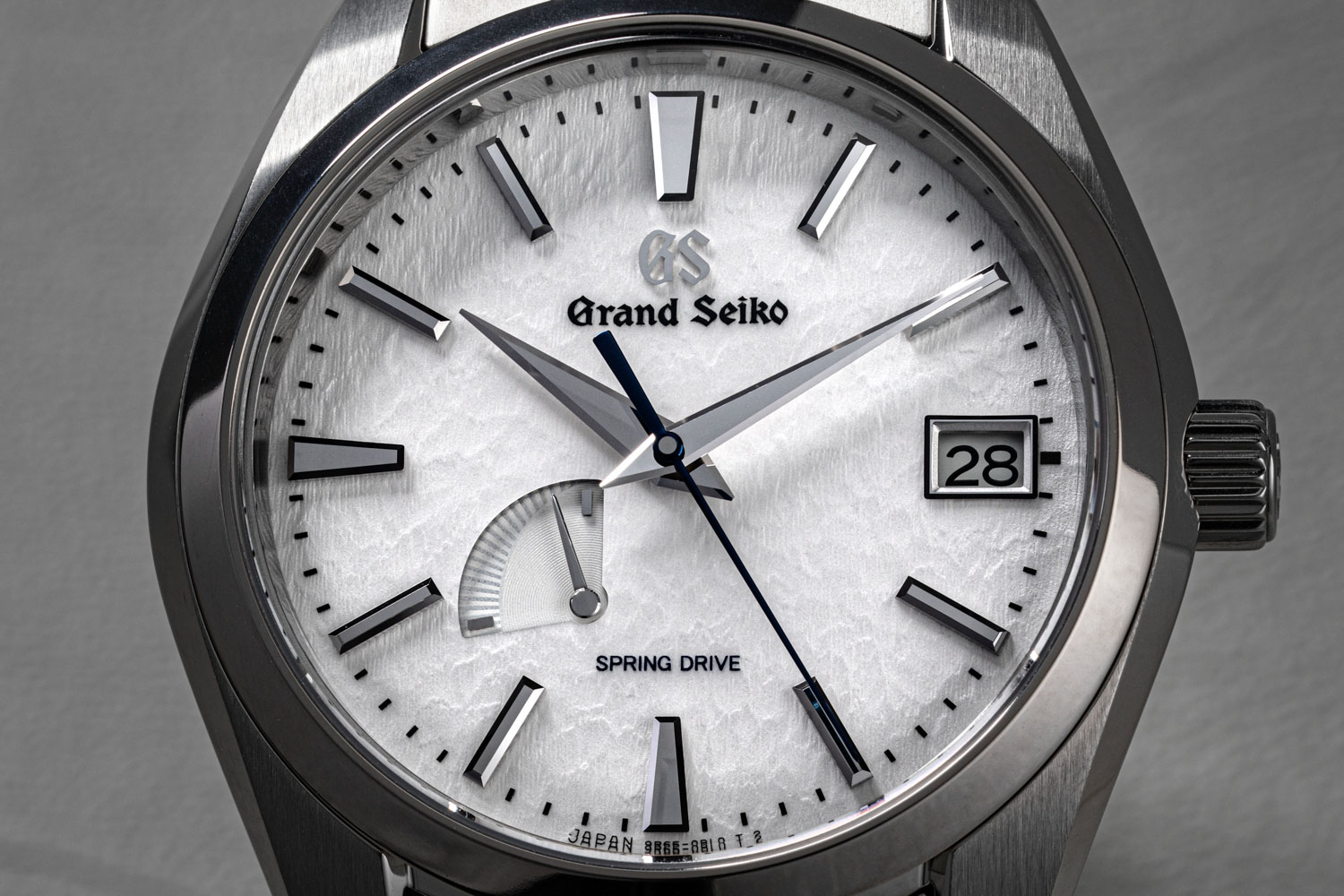
The Grand Seiko ‘Snowflake’ SBGA211 is one of the most handsome watches around characterized by a dial that perfectly evokes the rippling and undulating surface of the snow surrounding Grand Seiko’s Artisan Studio, located in Nagano Prefecture (©Revolution)
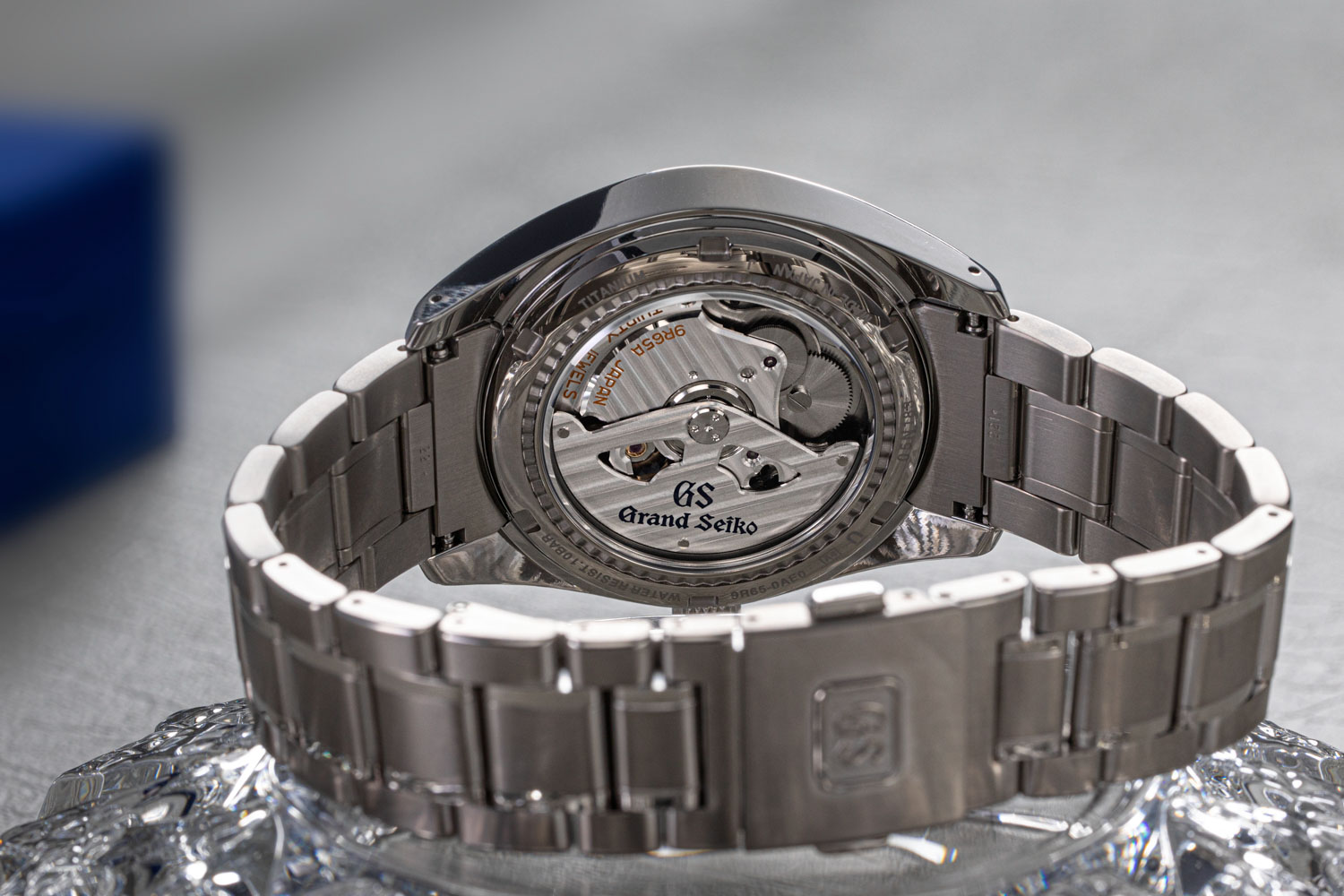
The Grand Seiko ‘Snowflake’ SBGA211 is powered by the automatic Spring Drive 3-Day Caliber 9R65 (©Revolution)
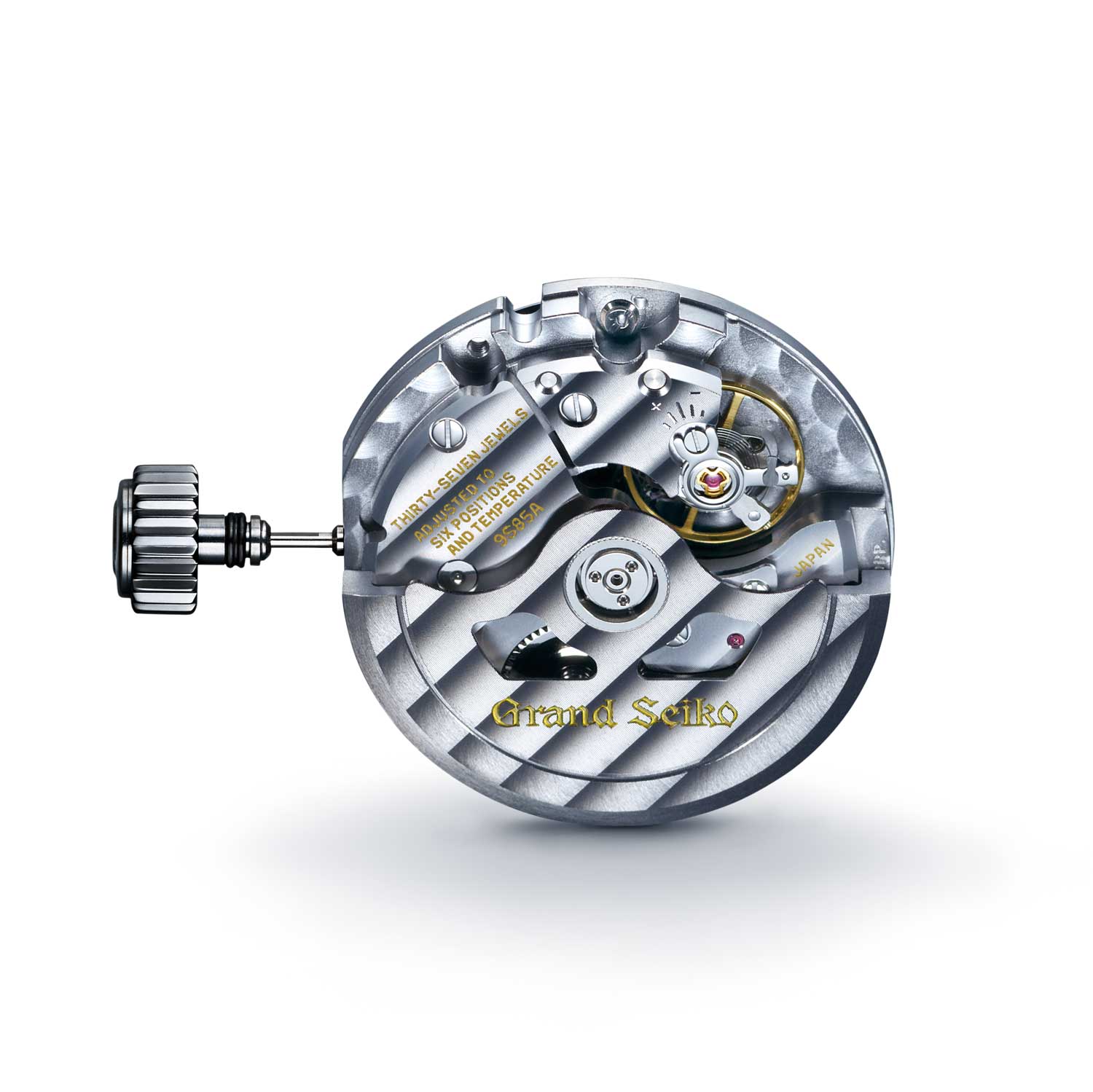
Automatic Spring Drive 3-Day Caliber 9R65 (Image: Grand Seiko)
But it is the dial’s surface that gives it the nickname “Snowflake”, as it bears a wonderfully elegant, subtle and uneven pattern that is inspired by the snowfields in Nagano Prefecture where the Spring Drive was born. It is not a tapisserie, or a sunray, or a guilloché, or a frosted dial. It borrows no reference to any Western culture dial. It is completely and wonderfully born through the imagination of the Japanese mind. While it is not hand-engraved like the magnificent SBGZ001, the dial is incredibly complex to create.
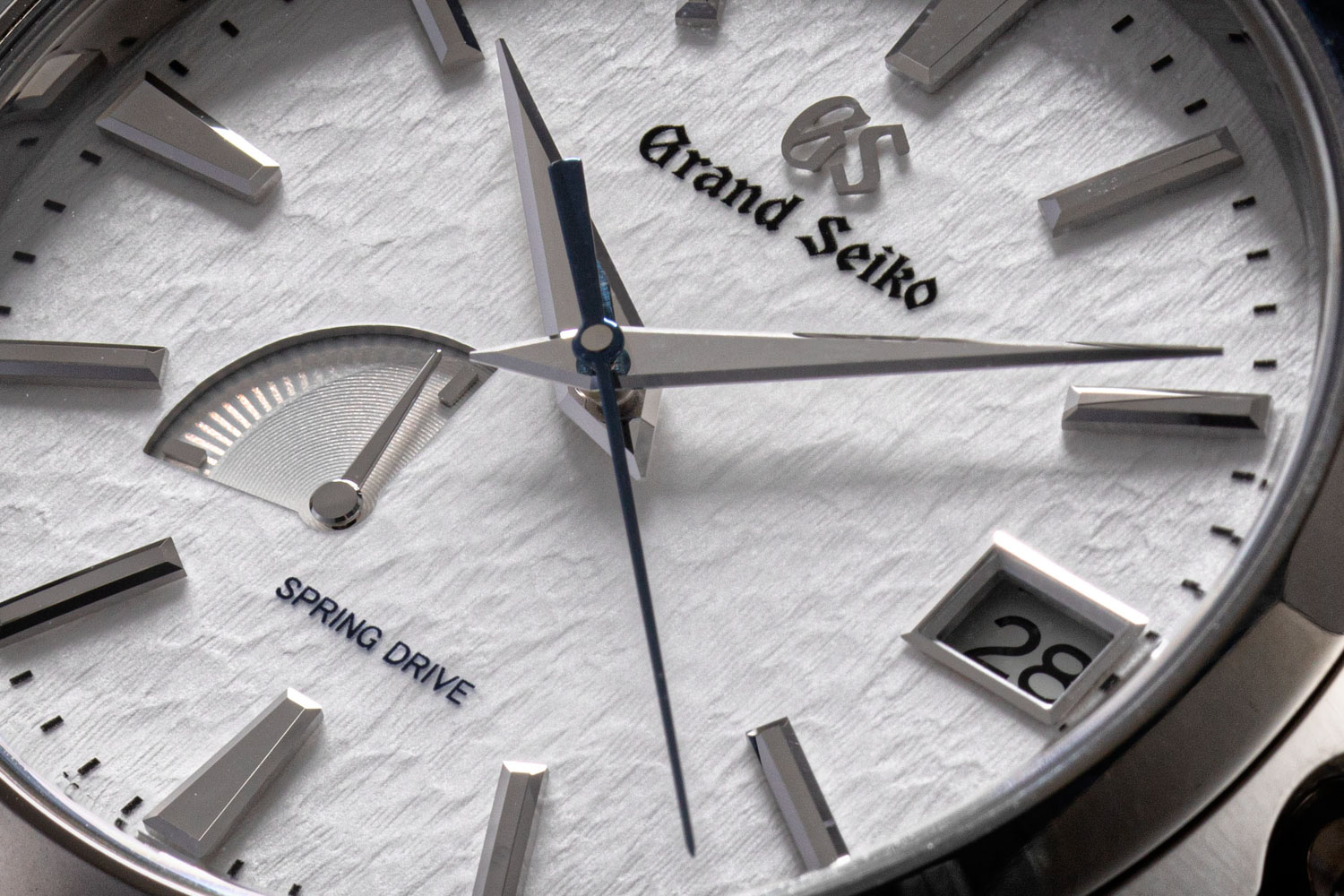
The Zen Reductionist dial of the Grand Seiko ‘Snowflake’ SBGA211 has large beautifully finished sword hands, a flame-blued seconds hand, a power-reserve indicator at 8:30 and a date window at three o’clock (©Revolution)
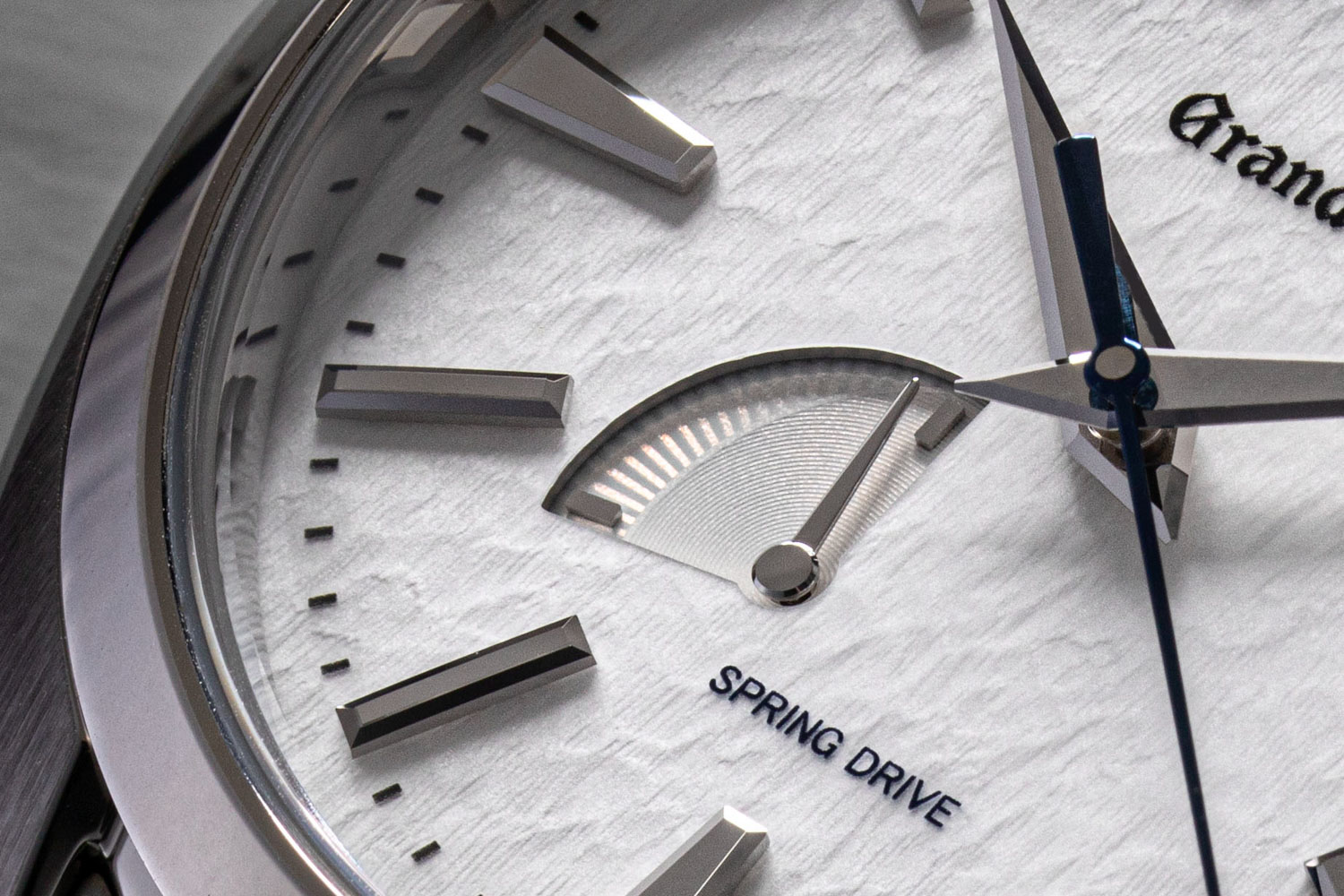
The Zen Reductionist dial of the Grand Seiko ‘Snowflake’ SBGA211 has large beautifully finished sword hands, a flame-blued seconds hand, a power-reserve indicator at 8:30 and a date window at three o’clock (©Revolution)

Kazimir Malevich Suprematist Composition: White on White 1918 (Image: moma.org)
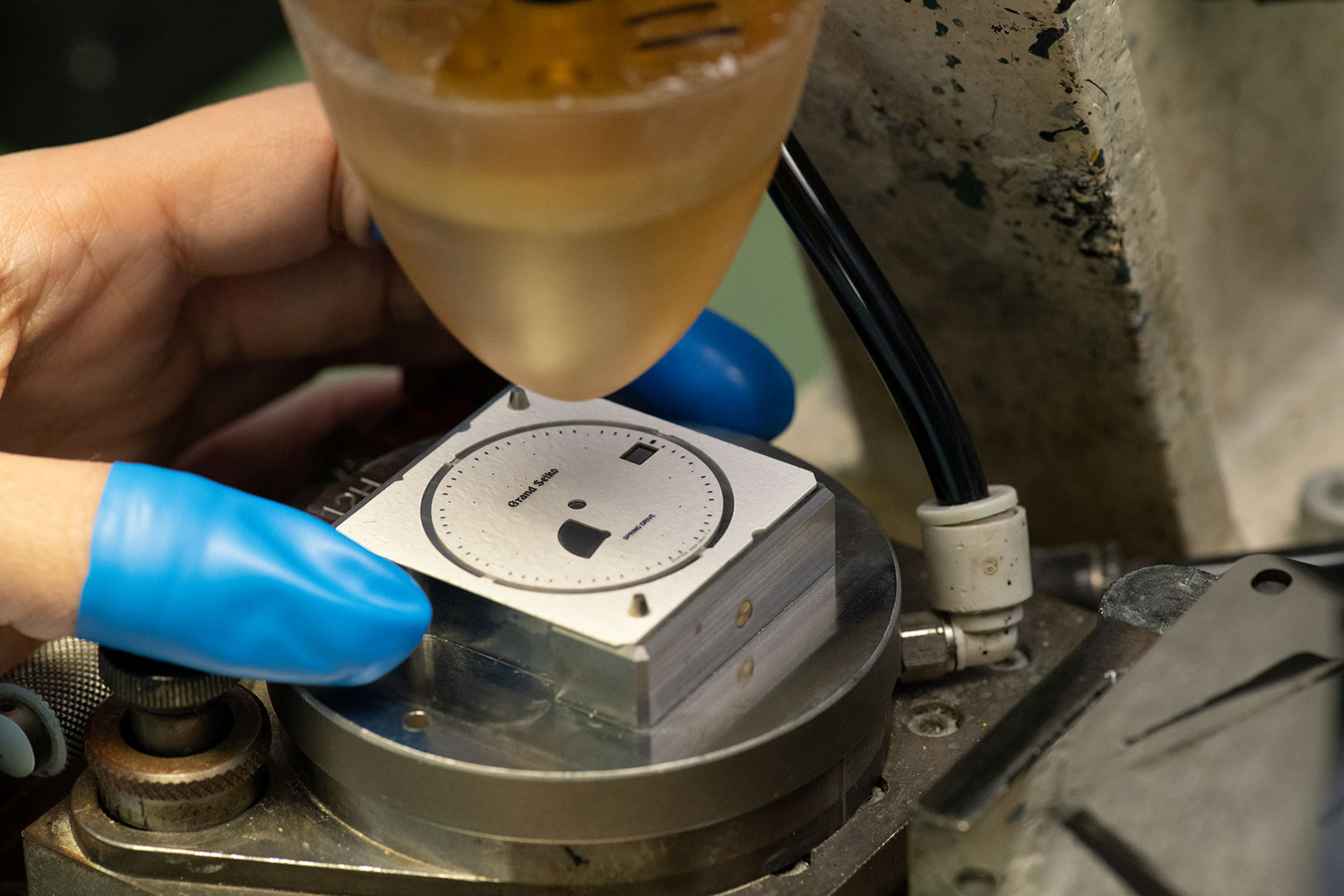
Stamping the bare 'Snowflake' dial (Image: Grand Seiko)
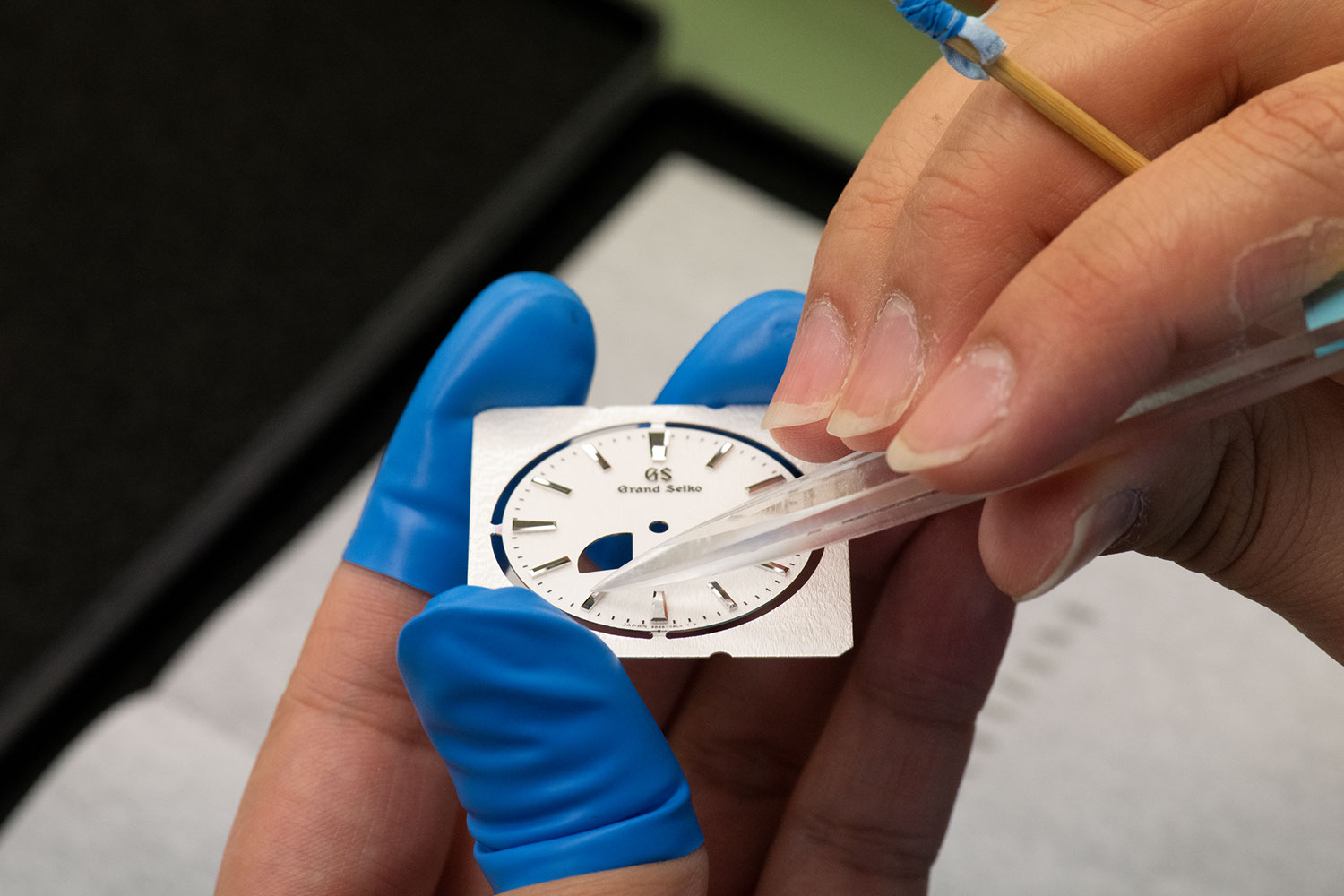
Applying markers to the bare 'Snowflake' dial (Image: Grand Seiko)
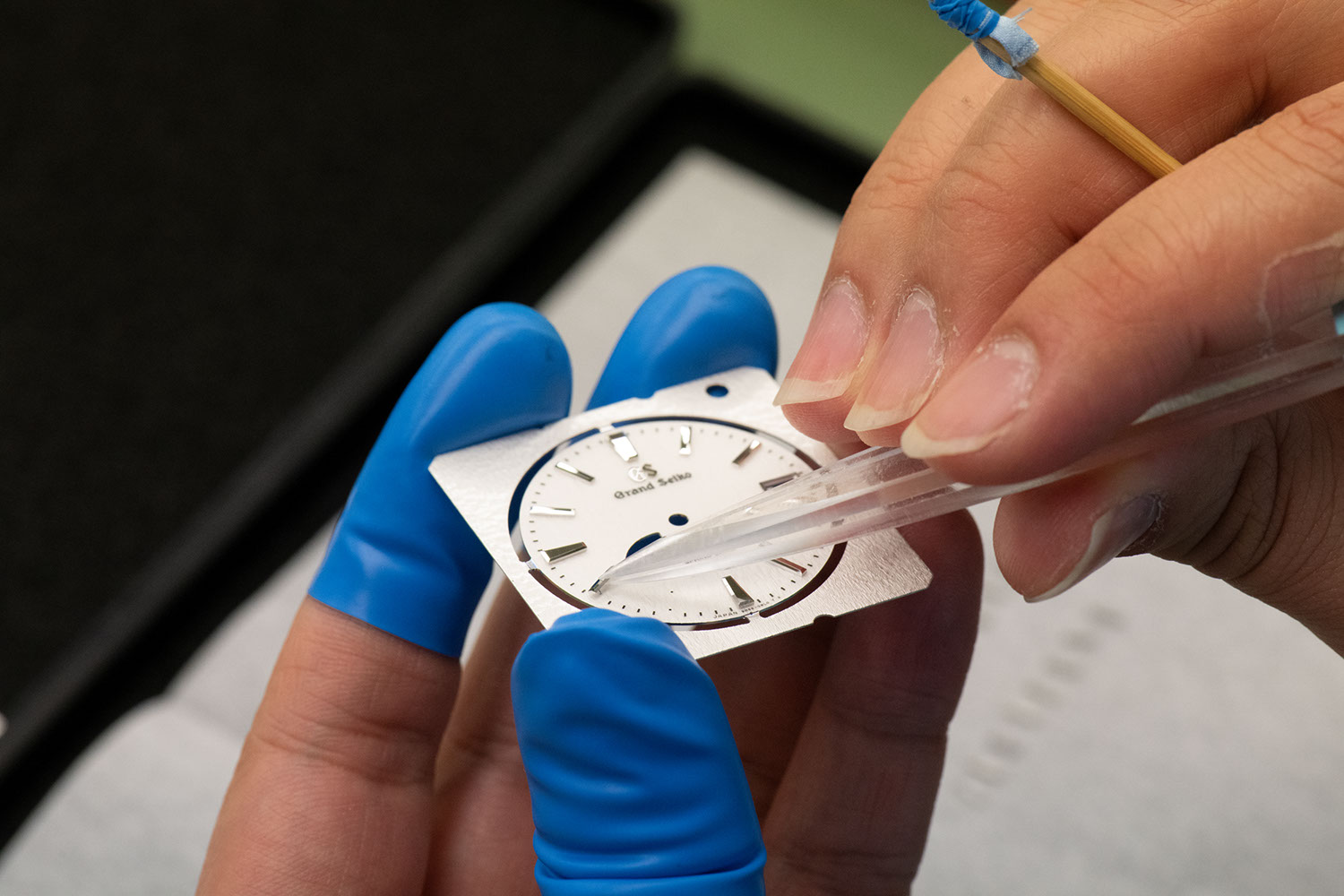
Applying markers to the bare 'Snowflake' dial (Image: Grand Seiko)
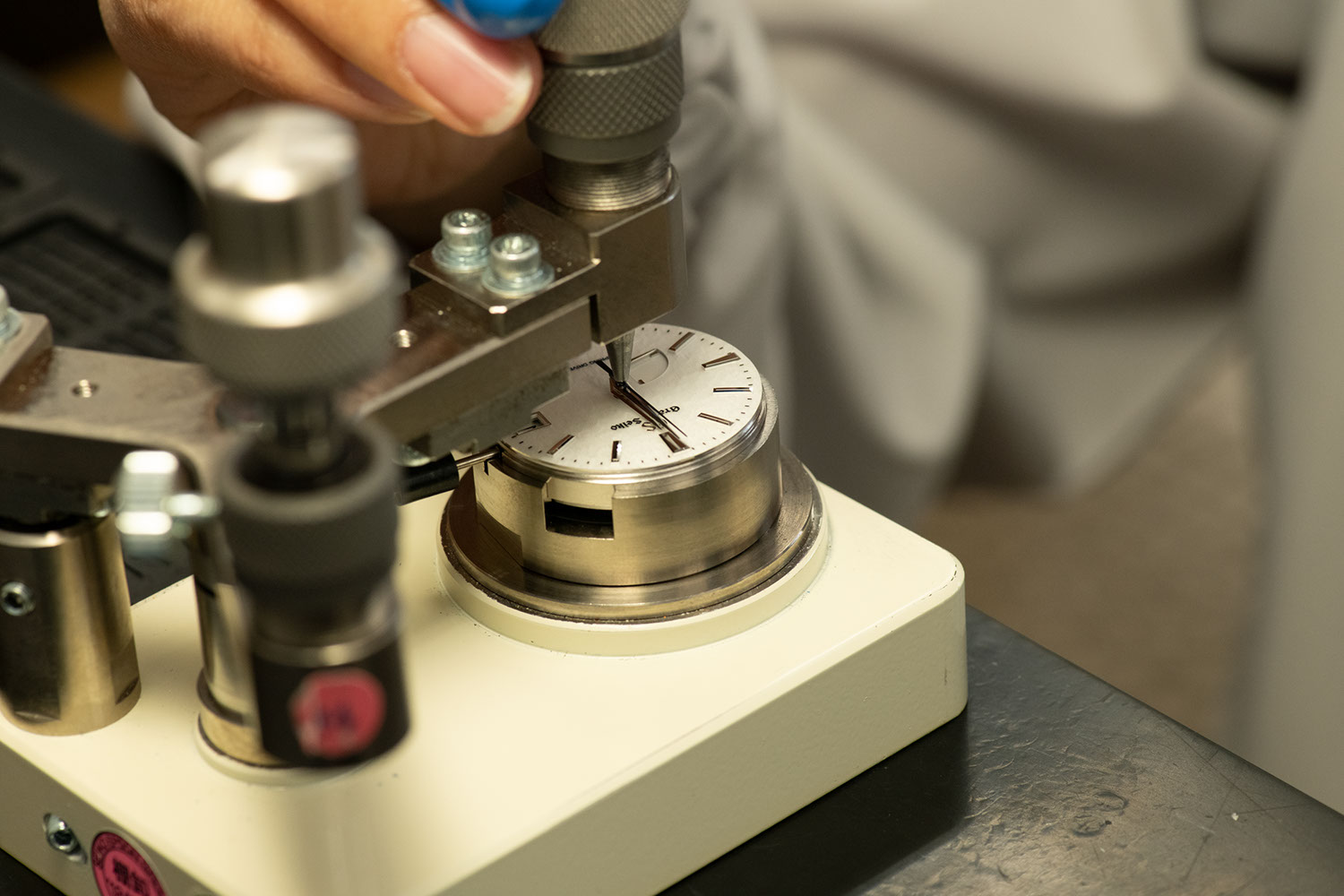
Installing the hands of the SBGA211 (Image: Grand Seiko)
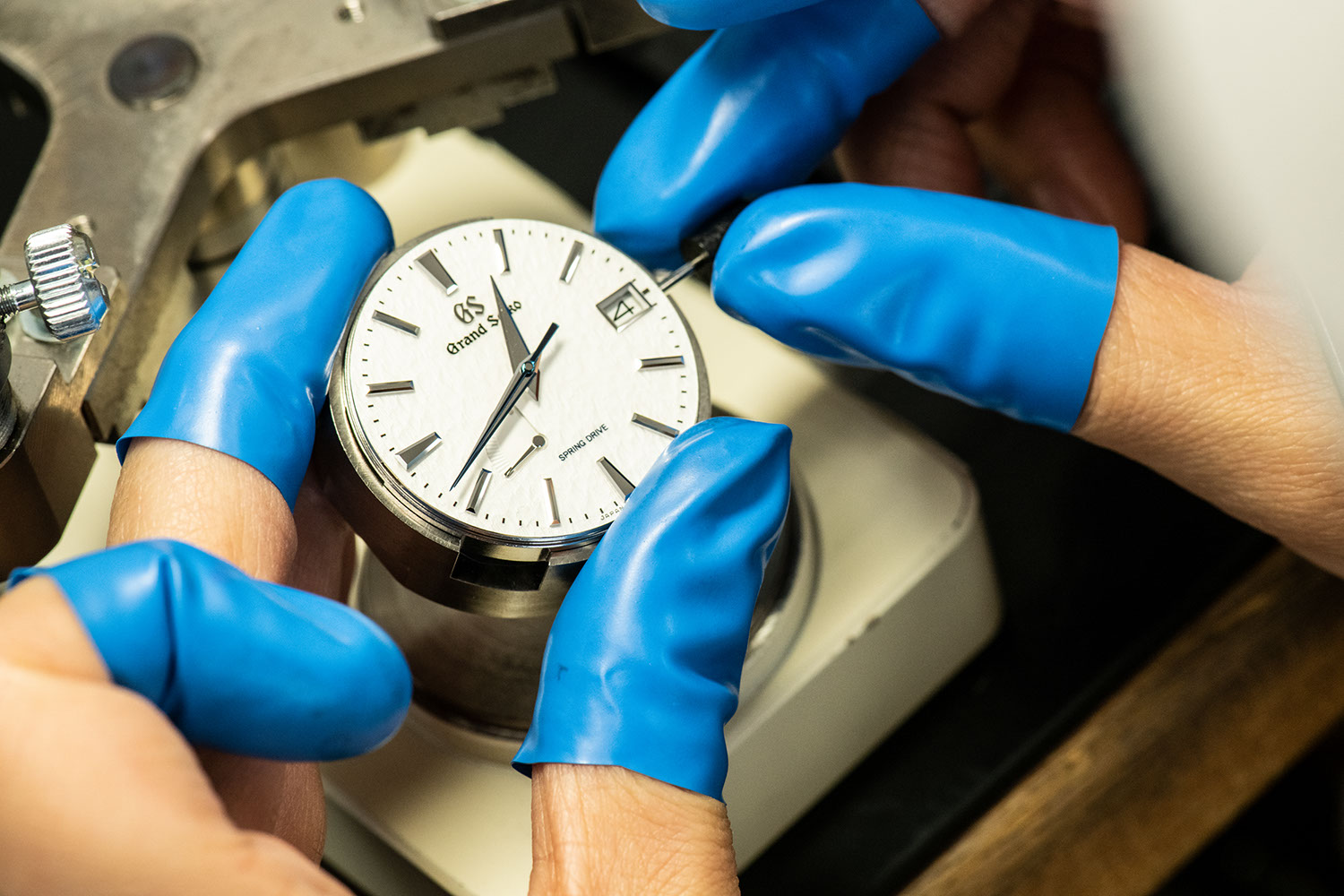
Inspecting a bare Grand Seiko SBGA211 'Snowflake' (Image: Grand Seiko)
Our Manual Wind Grand Seiko SBGK007G
Somehow our maiden curation of Grand Seiko watches would not be complete if we could not also offer, what we felt, is an expression of the ultimate in Zen Reductionist pure watchmaking and for this we immediately knew the timepiece that represented this to us was the manual wind four hand hour, minute, small seconds and power reserve displaying SBGK007G.
It is without a doubt one of the hardest design accomplishments to design an original simple manual wind watch but that is precisely what Grand Seiko has accomplished with this sublime, refrained and beautiful watch. Somehow because the overall appearance of the watch is monochrome it becomes a canvas to demonstrate the majesty of Zaratsu finishing.
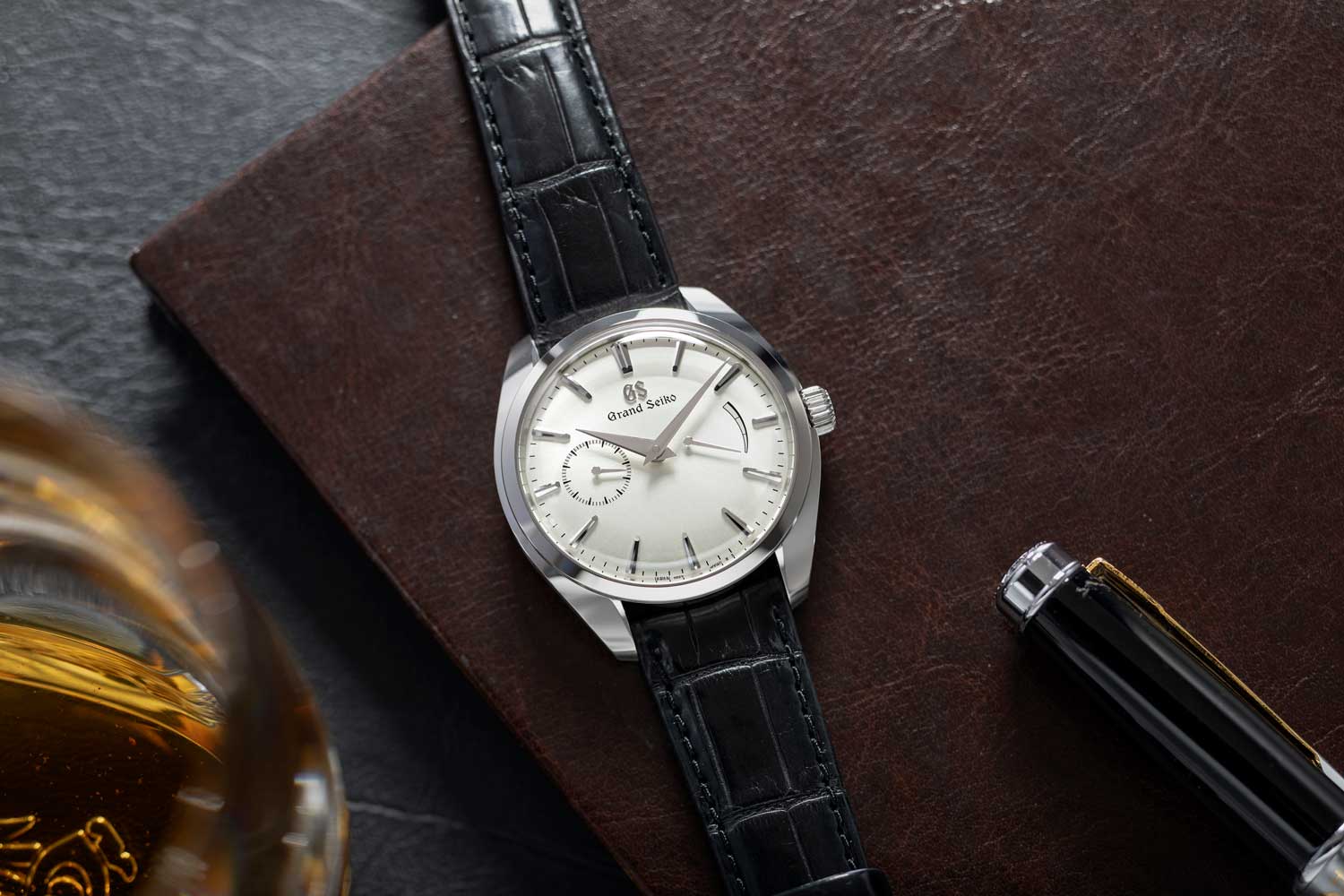
The manual wound Grand Seiko SBGK007G is yet another Zen Reductionist timepiece featuring hour, minute, small seconds and power reserve display (©Revolution)
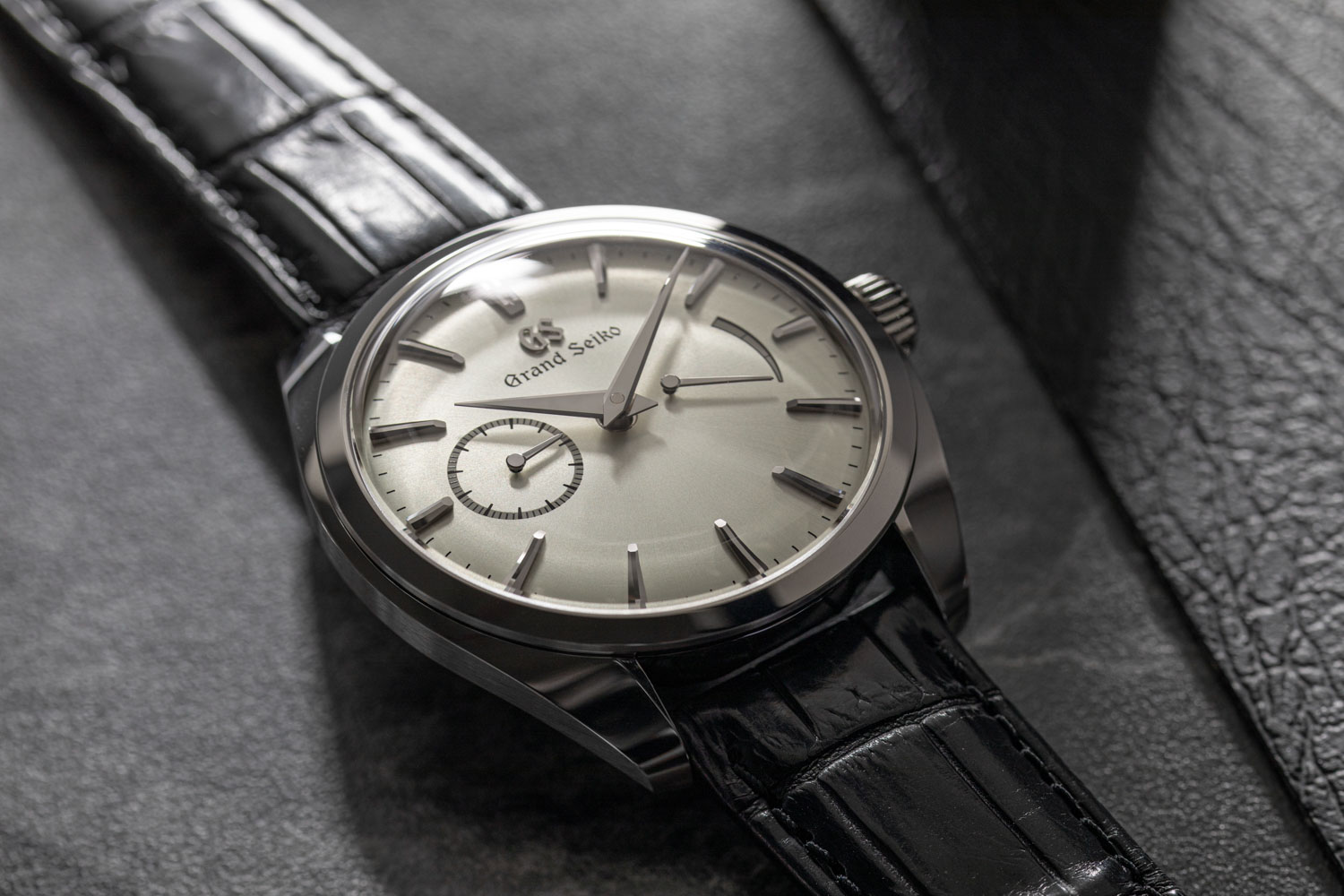
The manual wound Grand Seiko SBGK007G is yet another Zen Reductionist timepiece featuring hour, minute, small seconds and power reserve display (©Revolution)
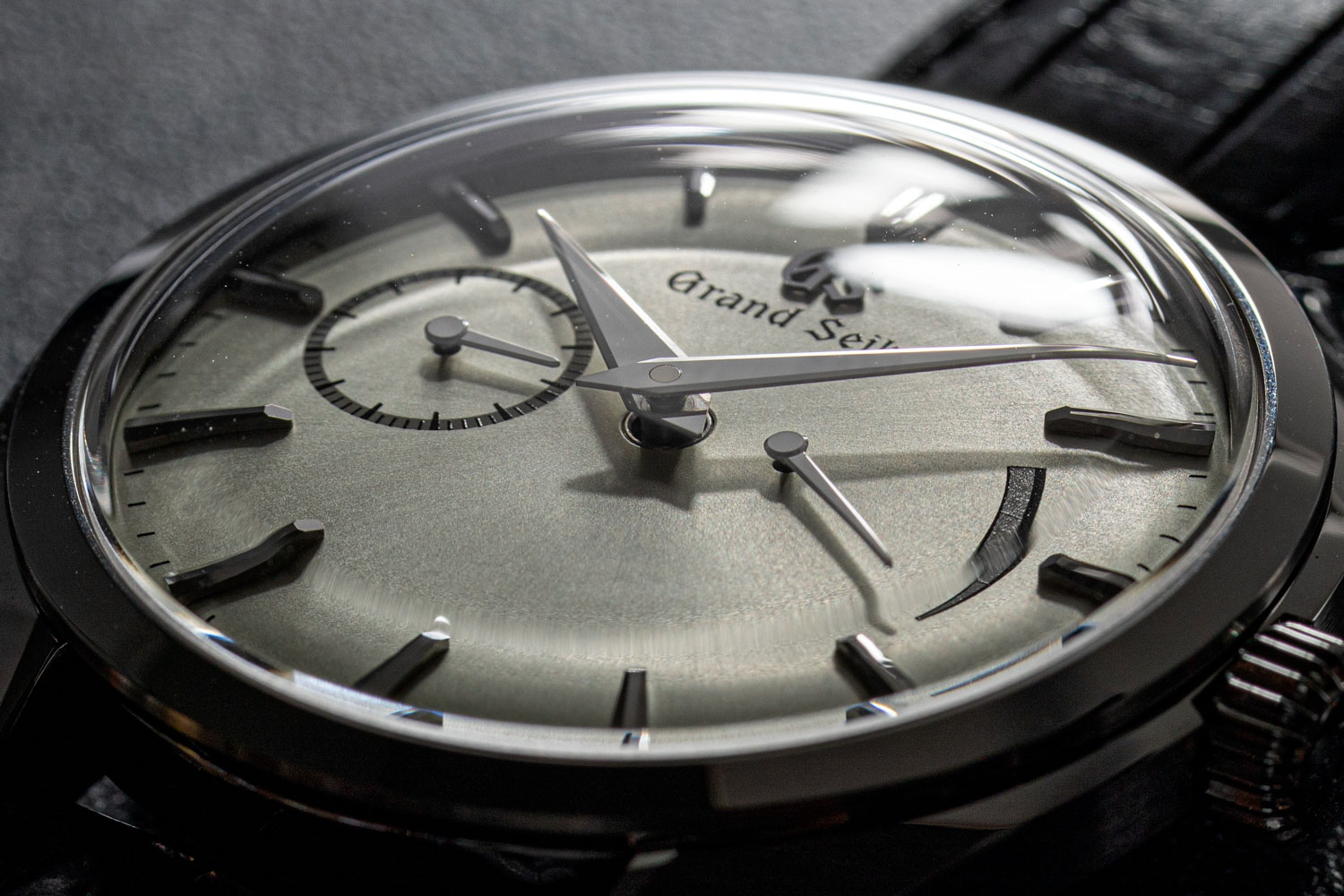
The manual wound Grand Seiko SBGK007G is yet another Zen Reductionist timepiece featuring hour, minute, small seconds and power reserve display (©Revolution)
At 39 x 11.6mm, it is the perfect size on the wrist. On the back of the watch the Calibre 9S63 reaches back to the famous 9S manual wind movement, which in 1998 became the base of all Grand Seiko mechanical movements. This movement in turn is the direct descendant of the Calibre 3180 featured in very first Grand Seiko launched in 1960. And as such, the SBGK007 is not just very possibly the most beautiful manually wound watch around but also a repository of the watchmaking traditions that comprise Grand Seiko’s amazing history.
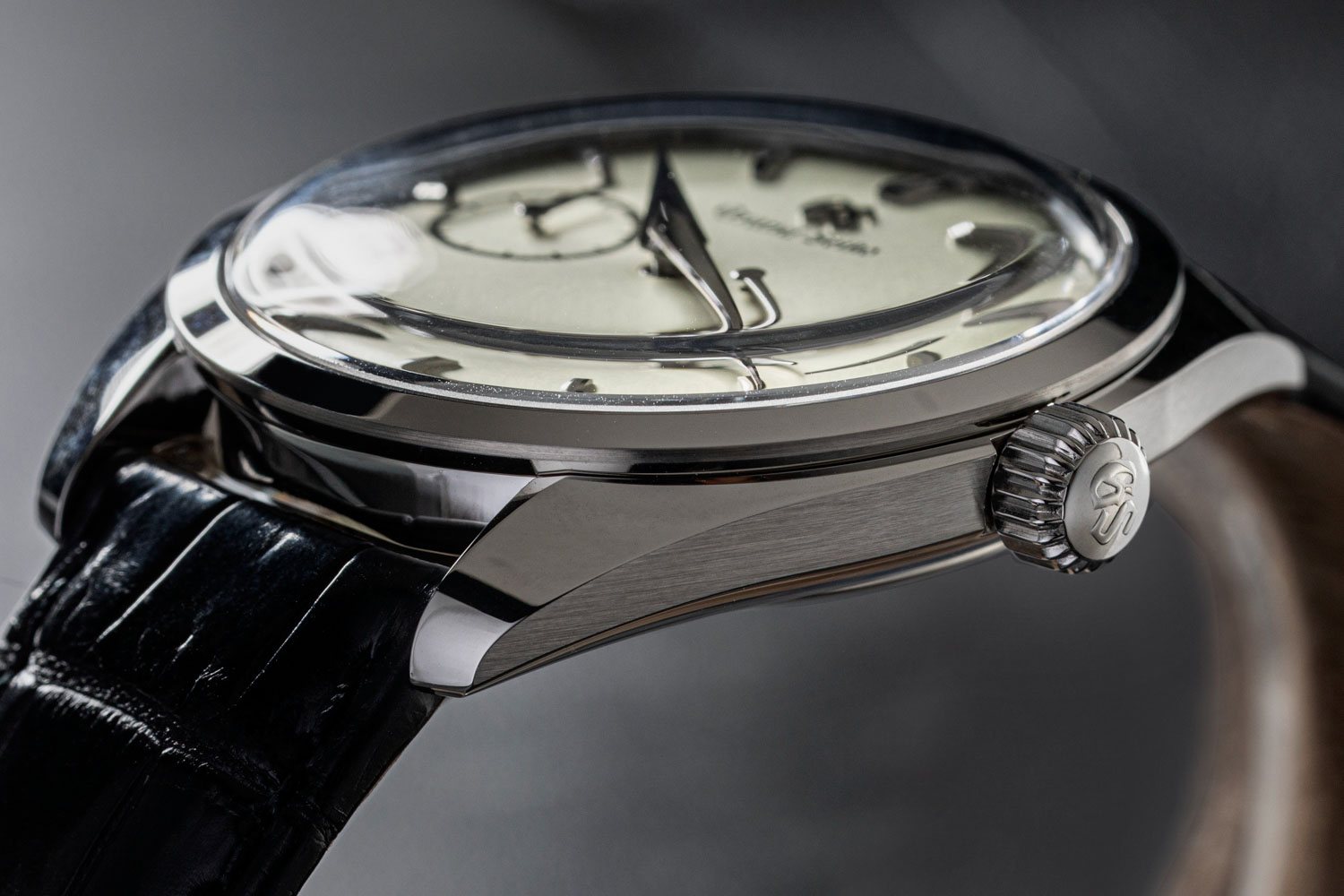
The Grand Seiko SBGK007G has a mirror polished case and bezel, contrasted by an incredible sharp intersection of finish with the brushed surface on the case band (©Revolution)
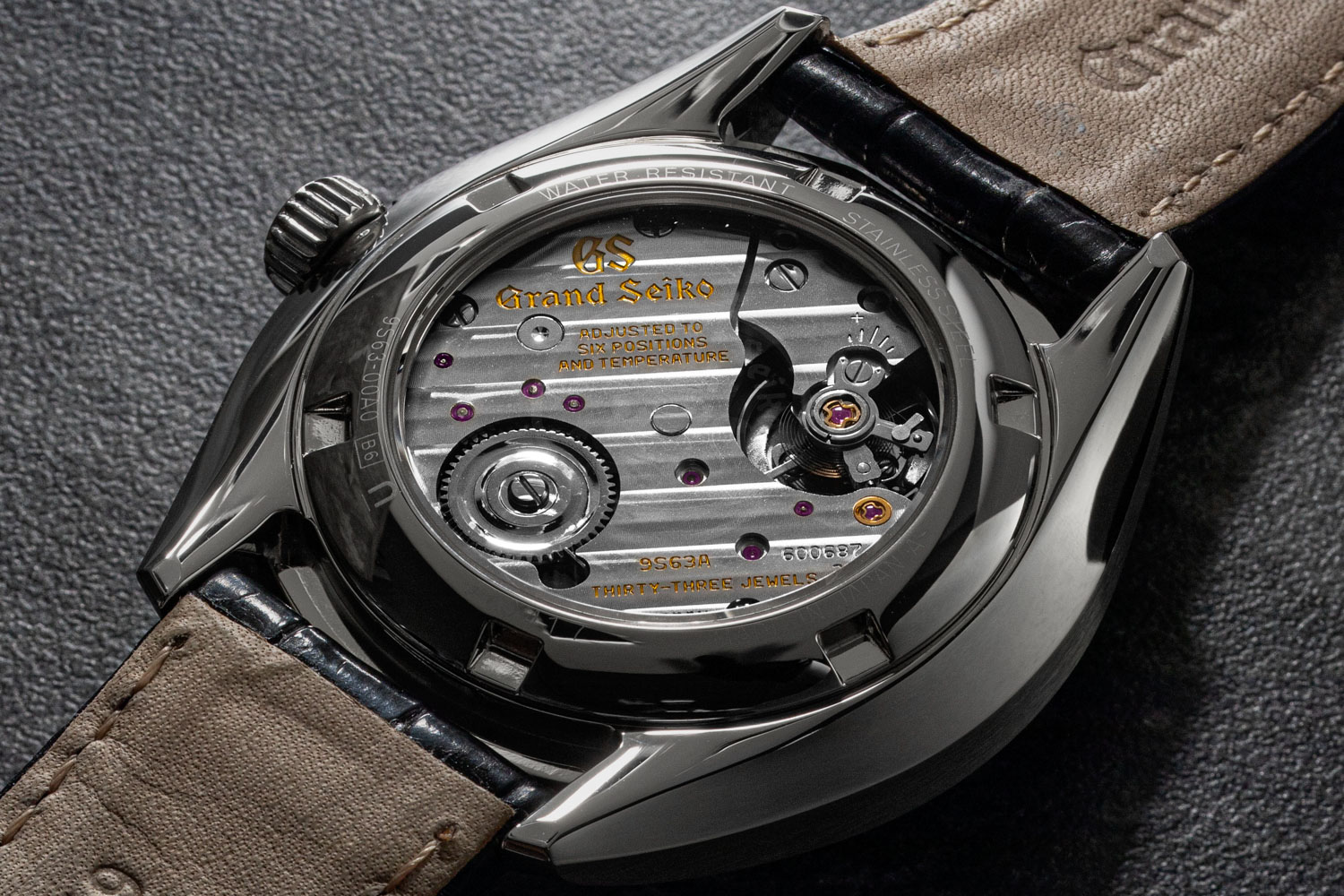
The Grand Seiko SBGK007G is powered by the Calibre 9S63, which reaches back to the famous 9S manual wind movement, which in 1998 became the base of all Grand Seiko mechanical movements (©Revolution)
Revolution’s First Grand Seiko Event in London
A year later, I couldn’t stop thinking about the “Snowflake” and eventually at a Grand Seiko event held with David Edwards — yes, I eventually gave him back his watch — I said to him, “David, I can’t host this event with you without being your customer.”
I had already earmarked and reserved the SBGA211 “Snowflake” sitting in the window and bought it on the spot. Amusingly, just moments later, my friend and fellow watch collector Johnny Allen, who runs Huntsman tailors’ front of house, walked in and exclaimed, “I’m here to buy a ‘Snowflake’!”

David Edwards, Managing Director at Seiko UK Limited (Image © The Rake)
Sure, it took me a long time to get into Grand Seiko. It was more of a slow burn than a lightning strike, but when it hit, it hit with immeasurable power. The pathway into Grand Seiko may have been the incredible chronometric feats and technical innovation of its parent company, but in the end, the tipping point had to do with the perfection of execution and quality. Also considering that I only bought my first Grand Seiko at the age of 50, I am looking forward to an all-new adventure in watch collecting. The brand and I clearly have a Gabriel García Márquez’s Love in the Time of Cholera relationship going on. Now, if I can just get someone to lend me 73,000 US dollars for that Micro Artist Studio watch.










